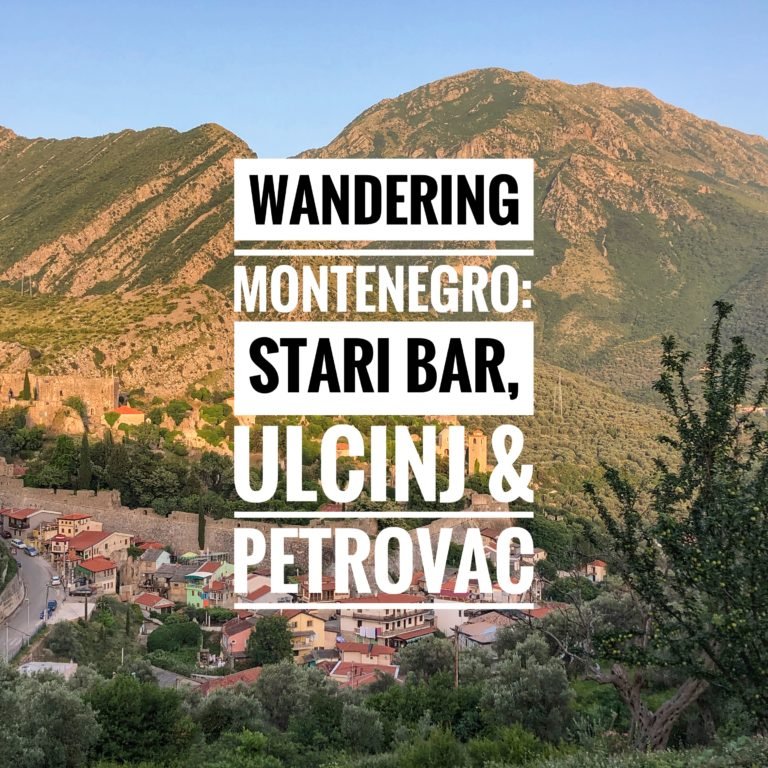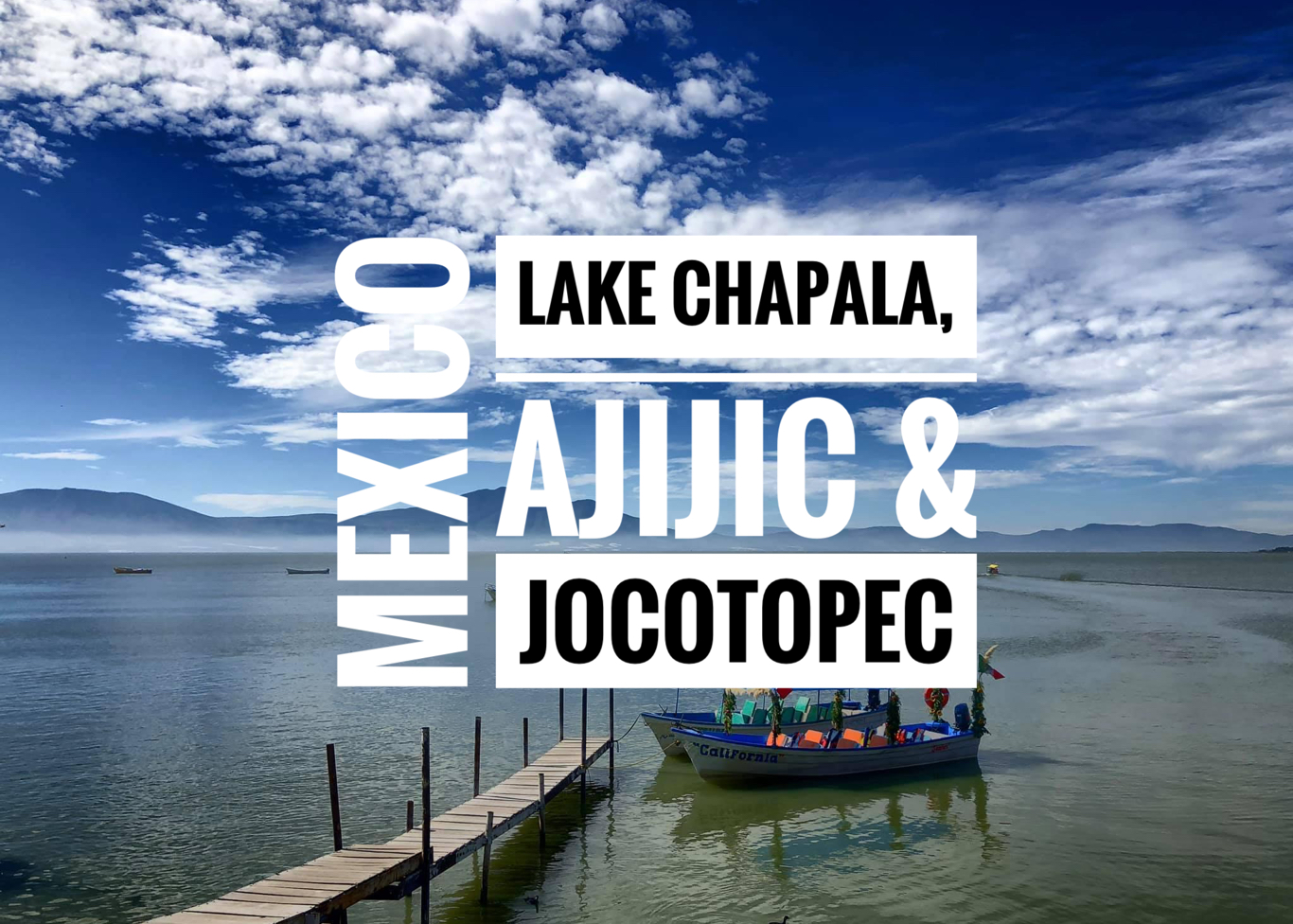
After a seven-month mandatory “COVID-stop” in the States to buy a rental property and see family after a 22-month hiatus, we were thrilled to be back on the road again, and just in time to escape the winter sludge with a free one-way ticket to Mexico. (Thank you house expenses and credit cards!)
Like in May, we were traveling “during COVID” and did not receive a single temperature check or health questionnaire (until we arrived to Guadalajara.) Sigh…that said, the reason we chose Mexico is the same reason thousands of intrepid backpackers were heading south of the border at that point. Mexico was pretty much, and continues to be, one of the most lenient and welcoming countries to foreigners during the pandemic. No test or quarantine required. Yep…just walk right in, although at least the locals seemed to be very good about handling mask mandates. Those gringoes in tourist hot-spots…not so much. But we knew, we were not going to let the fear of COVID stop us from traveling and living our lives. As we did in the States, we always wore masks, sanitized like crazy and did the best we could to social distance and avoid busy restaurants/bars, and busy public spaces.
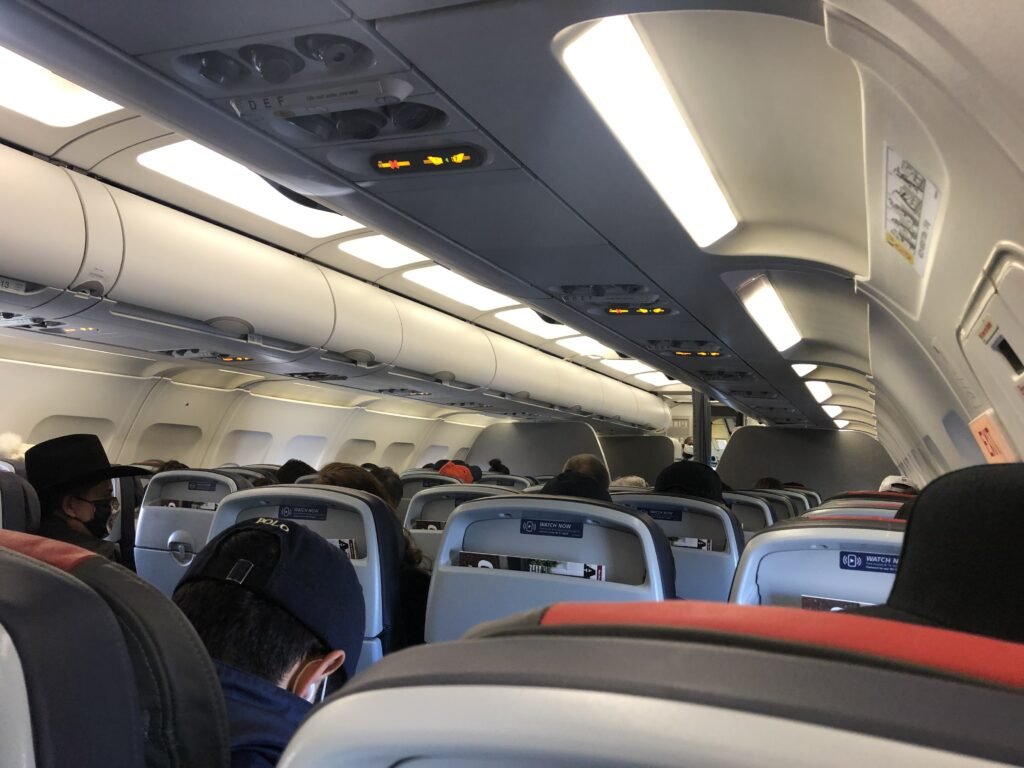
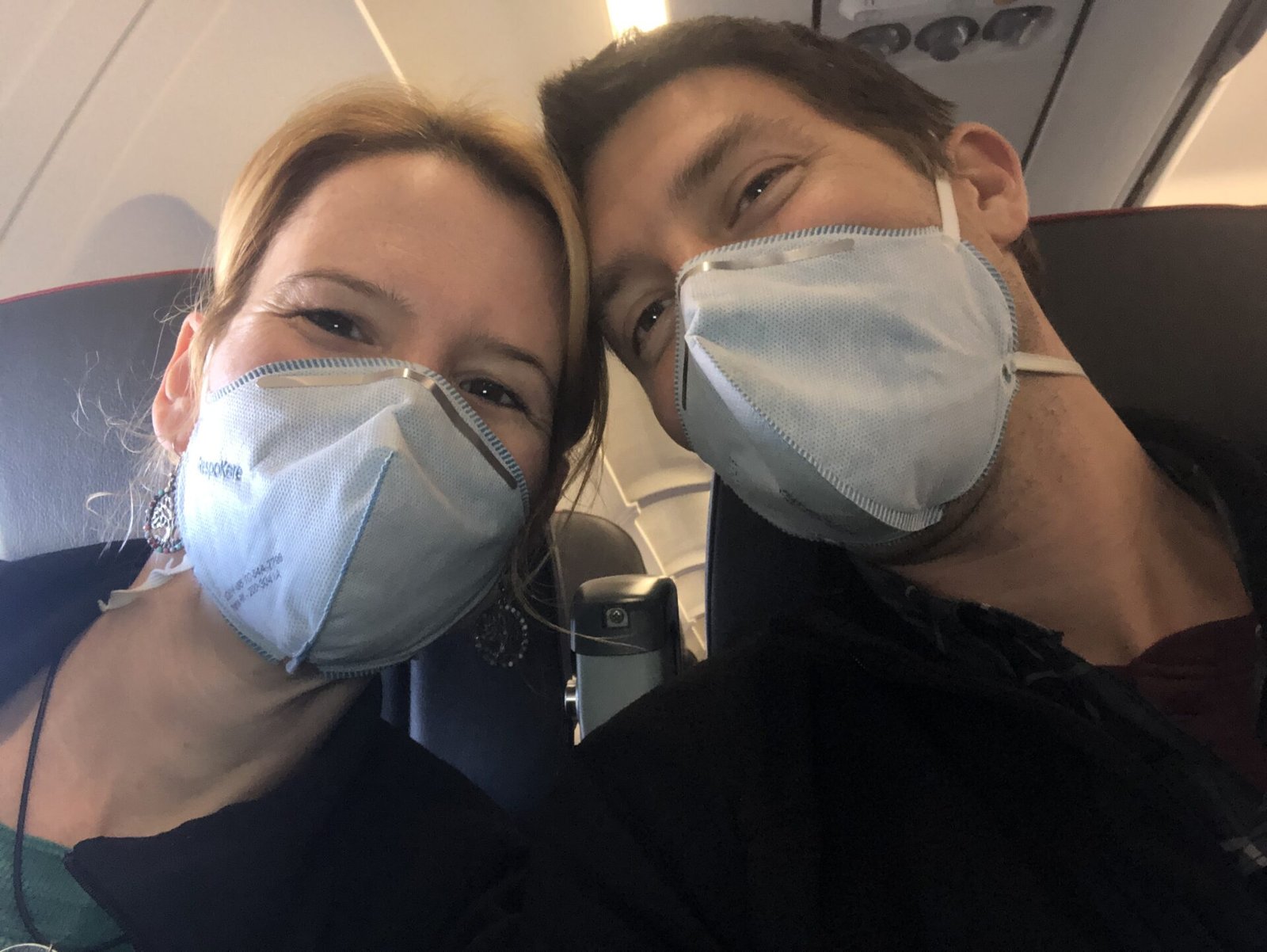
The day we flew, of course, was the exception as both airplanes were surprisingly full.

This adorable “doctor” was eagerly waiting at our hotel in Guadalajara to scan our temperatures, and have us fill out a health status form. He definitely wasn’t a doctor, for the record, but he seemed pretty proud to be wearing the garb. We seemed to be one of a handful of guests.
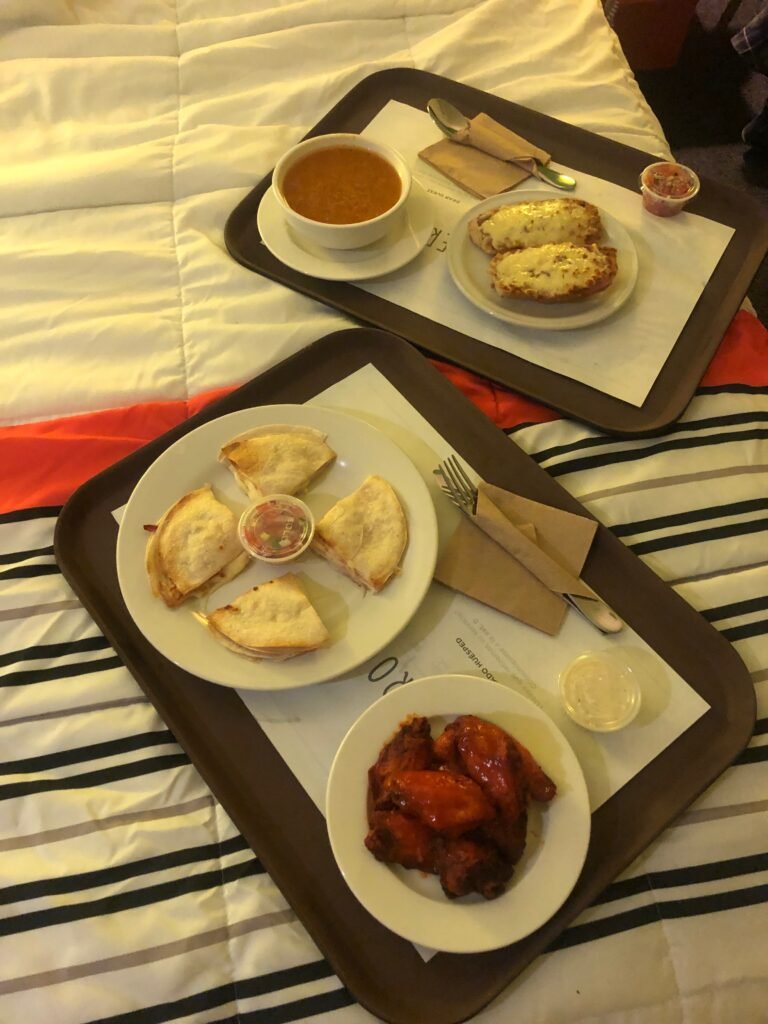
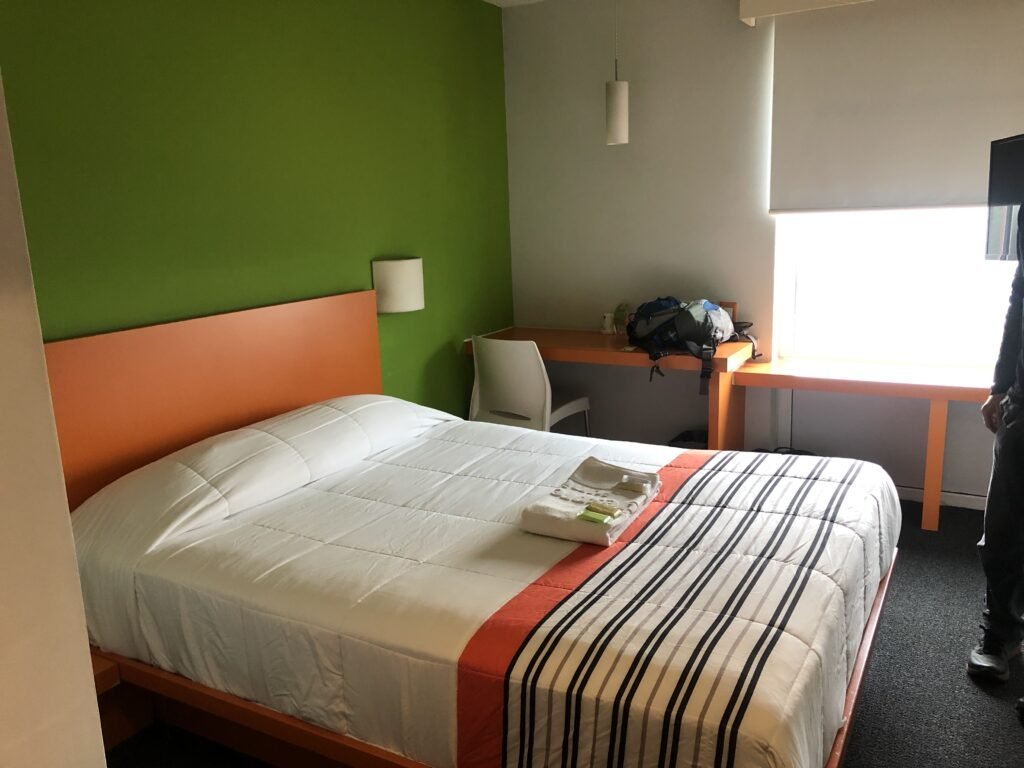
Upon arriving, we were exhausted and didn’t feel like heading out because nothing was walkable where we were staying, so we splurged on room service. Fideo soup (a traditional Mexican tomato noodle based concoction), molletes (an open-faced bean sandwich), sincronizadas (we’ve learned is another word for quesadillas), and yes, chicken wings. They were sadly out of tacos, but we knew there would be LOTS more of that to come. And if there wasn’t? We simply weren’t being good travelers.
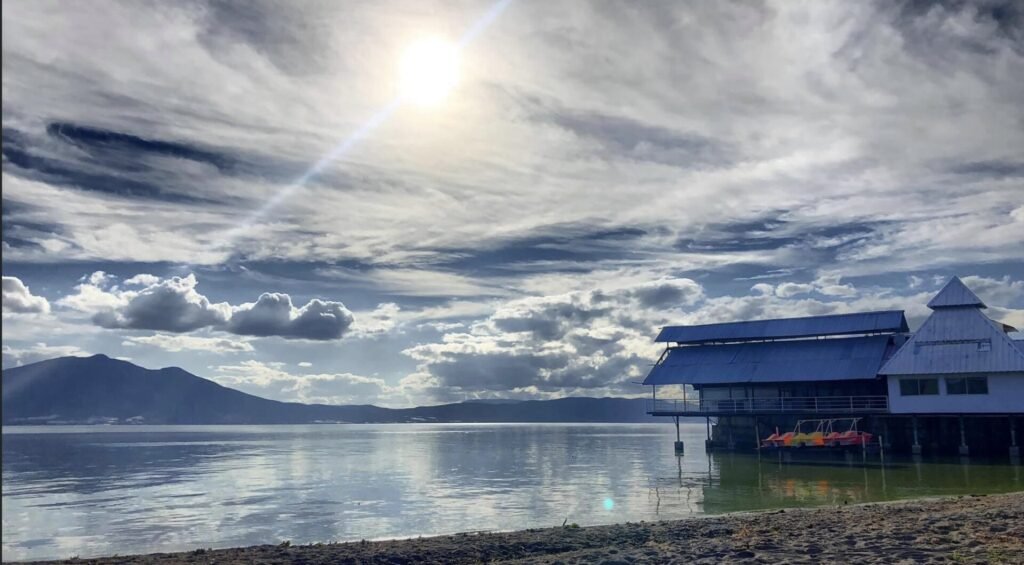
Arriving to Lagos de Chapala
The first order of duty in Mexico was some well-earned R & R so following the first sunrise, we hopped on a bus ($5.50/2 tickets) to Chapala Lake, a well-known expat enclave of an astounding 30,000+ expats, mostly retired Americans and Canadians (often single women) who can’t stomach the cost of living up north. But, another reason for this is the weather. It doesn’t matter what time of year you go, you’ll discover around 75 degrees Fahrenheit (28 C), a light breeze, and buckets of sunshine thanks to its 5000 foot elevation. Also, although the vibe of the area is still undoubtedly Mexican, there’s a LOT of English everywhere. So…if you’re looking for a reasonably authentic place in Mexico outside of all-inclusive beach land, but not too keen on the language barrier, this is a good one.
For, us, it was the perfect place to ease ourselves back into slow travel mode, veg out and enjoy a little slice of Mexpat.
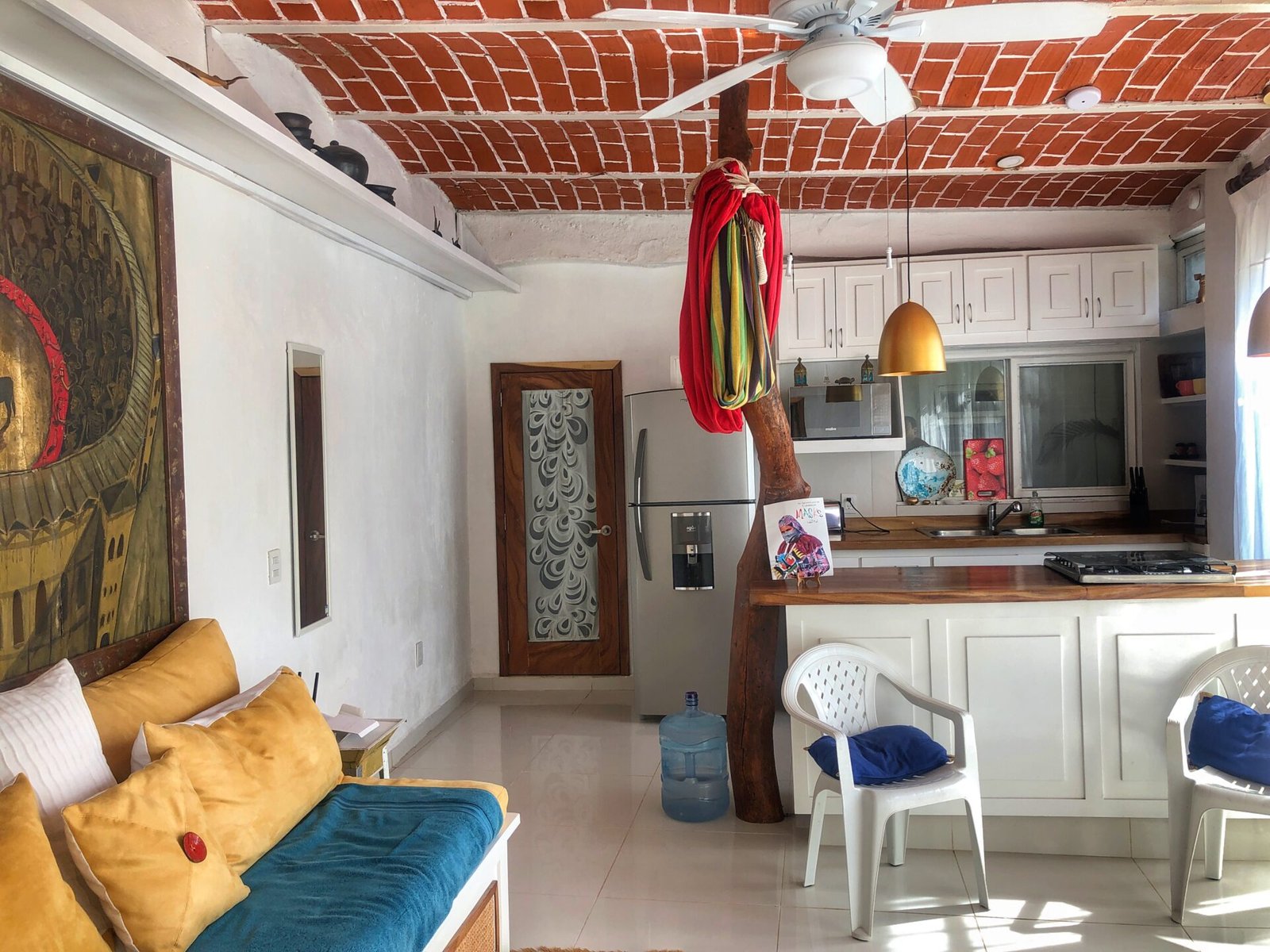
Accommodation: Riberas del Pilar
We couldn’t have been happier with our charming and artsy little one bedroom apartment where we laid our heads for two week in Riberas del Pilar. ($27/night) Everything was well stocked, including cooking supplies with a full kitchen. Our Airbnb host, Madeline communicated to us from New York was just wonderful! It was also in walking distance to the lake, and lots of restaurants and a very expat-y and overpriced market. We could also hop on the bus and get into Chapala or Ajijic, another popular town for $.45 a ride.
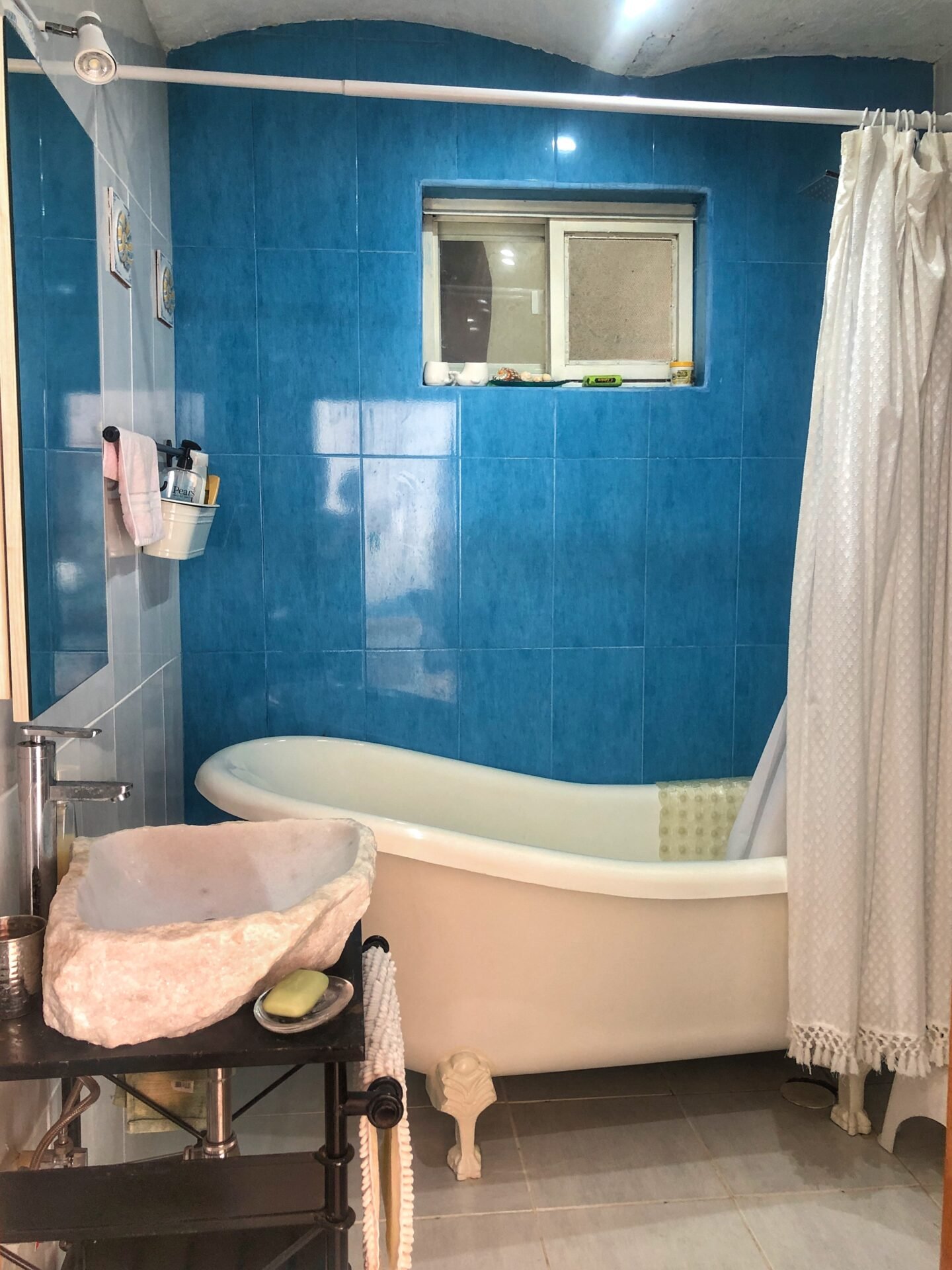
Speaking of relaxing….yes, this beauty comes with our apartment ?
Another fun surprise that came with the apartment was Indie, our neighbor’s pet rabbit. It certainly caught us by surprise when he came and tapped his nose on our screen! We did a double take thinking it was a cat. Despite our best efforts of buying carrots at the market, we were never able to cross the threshold from pets to cuddles.
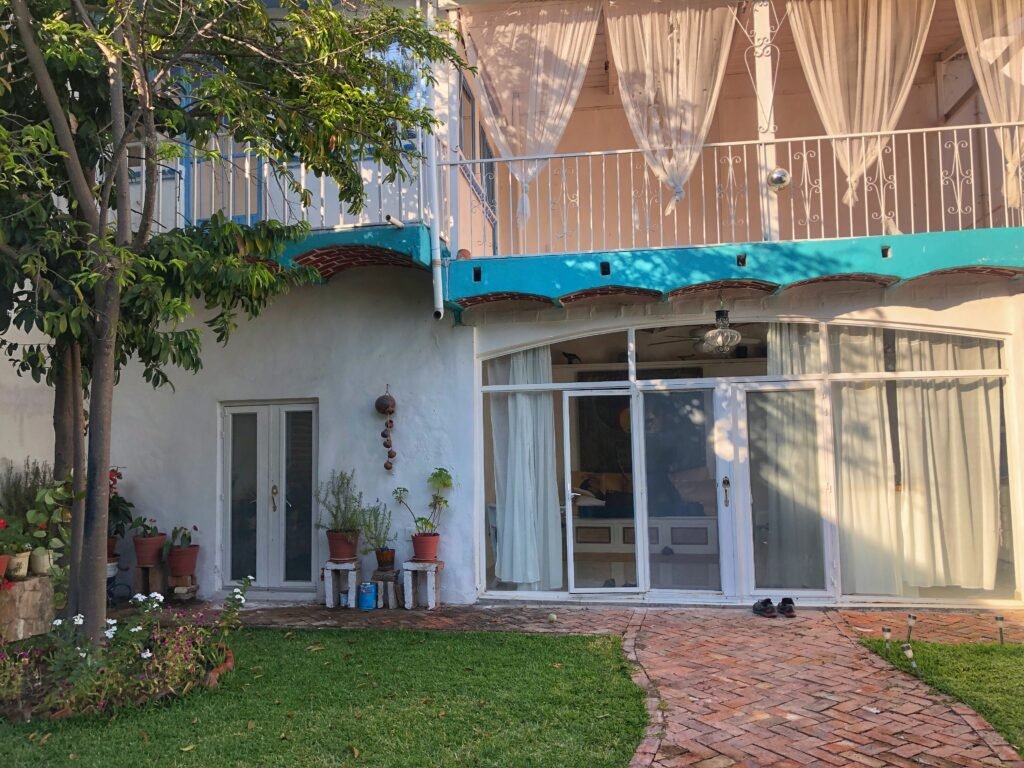
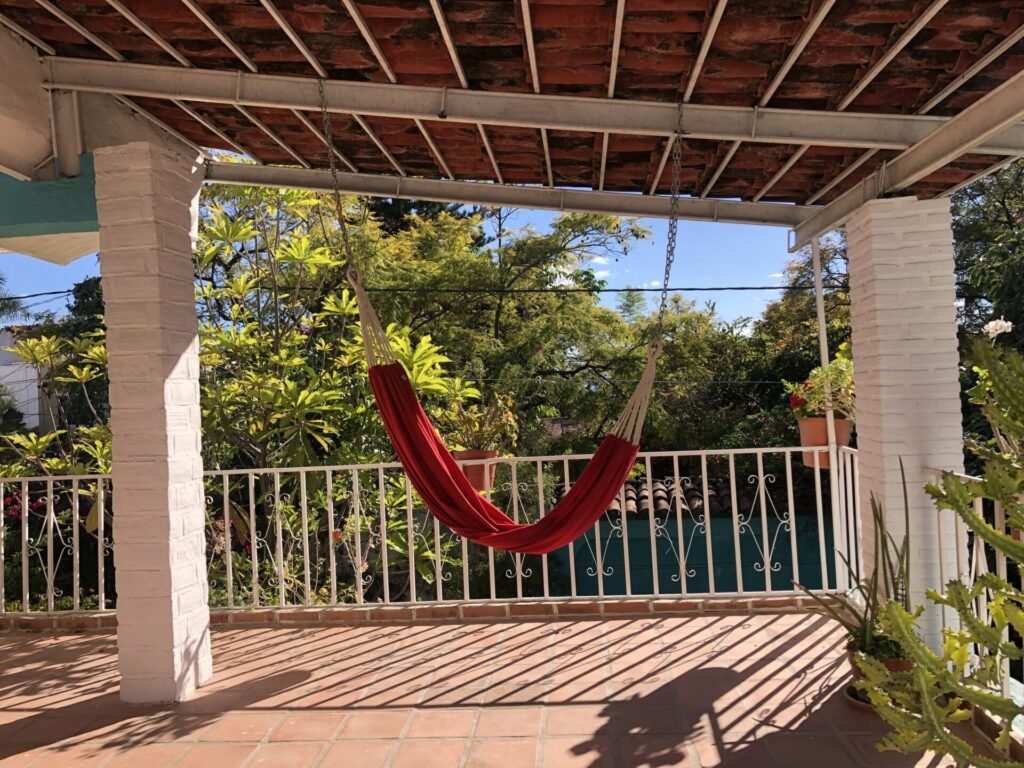
The outside of our apartment had a lovely lawn and garden leading up to it, complete with a guyabana and avocado tree. Hell yea. There was also a picture perfect hammock where we indulged in more than a few siestas.
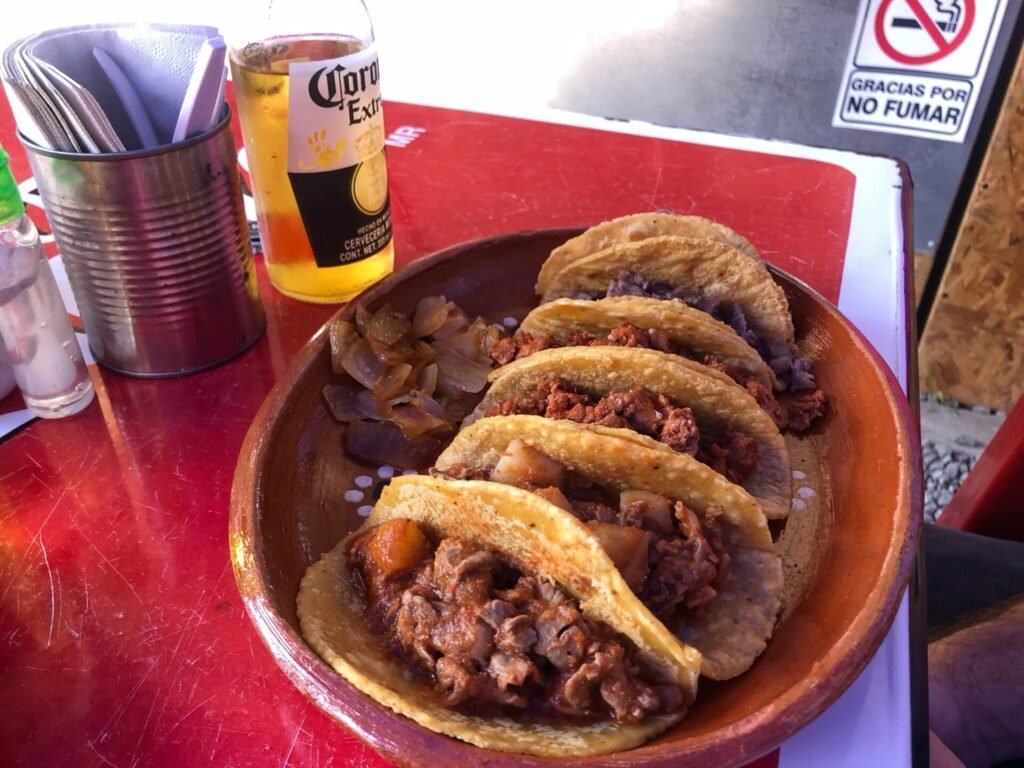
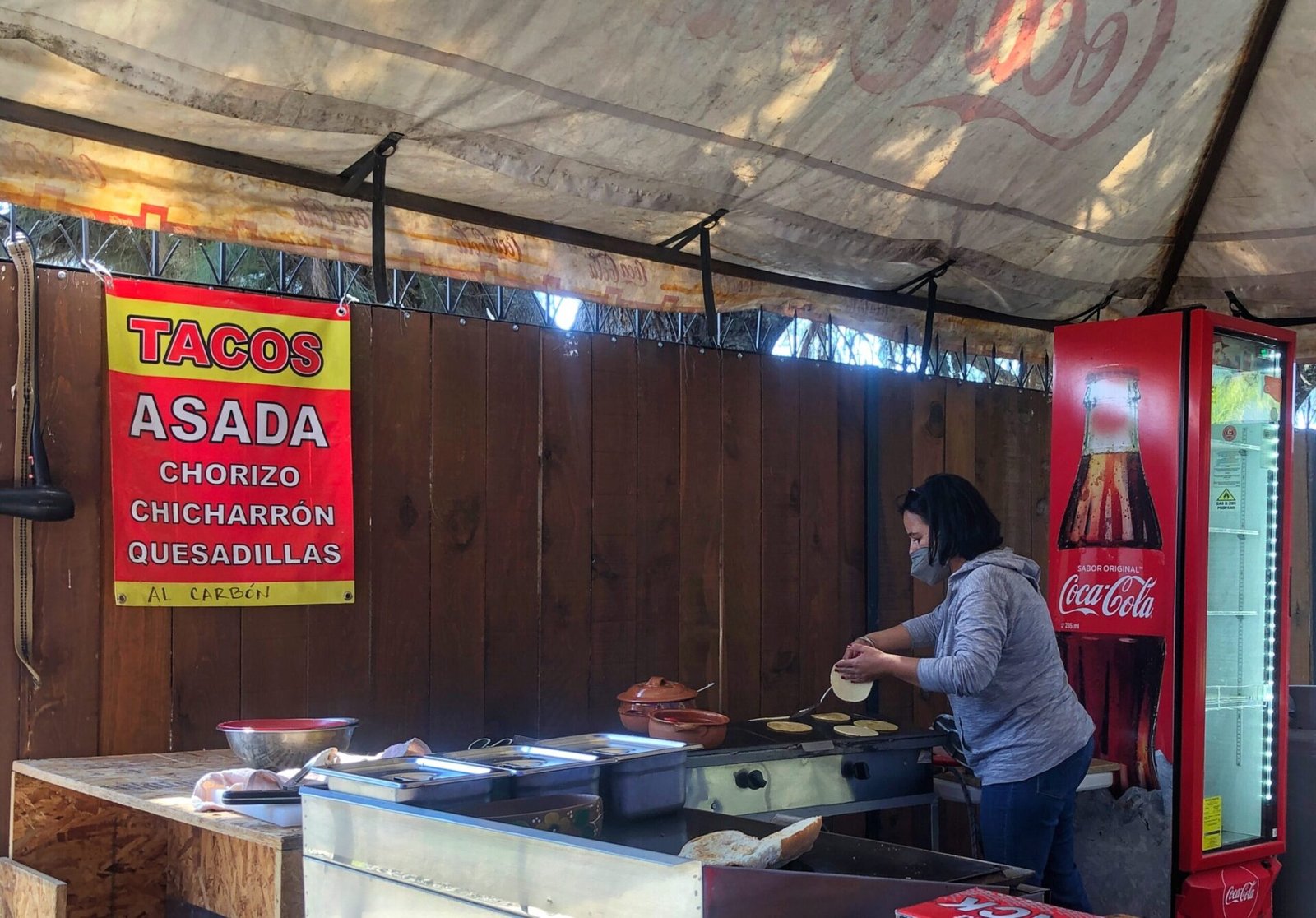
Oh yes. Finally. Our first taco stand, about a five-minute walk. We got all these tacos and two beers for $3. Dios mio! We’re gonna get chubby here?
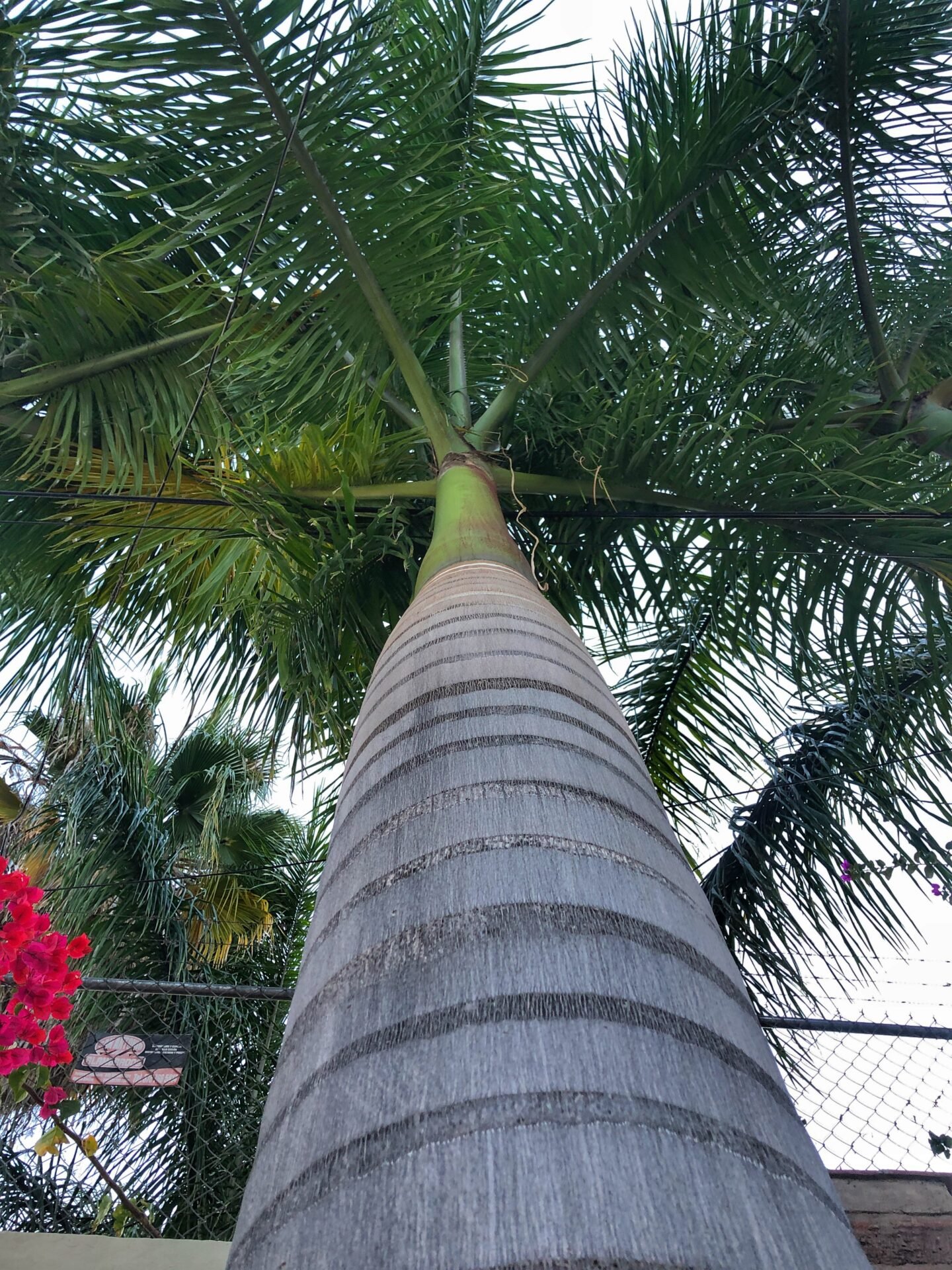
Would you check out the skirt on this palm!?!

Lagos de Chapala is the largest “freshwater” lake in Mexico covering 417 square miles (1080 km.) Unfortunately it’s too polluted to swim in, but that doesn’t stop it’s beauty. Down by the lake near our place, we watched a farmer and his daughter take his cows for their evening baths…which they naturally pooed in. Hmmm.
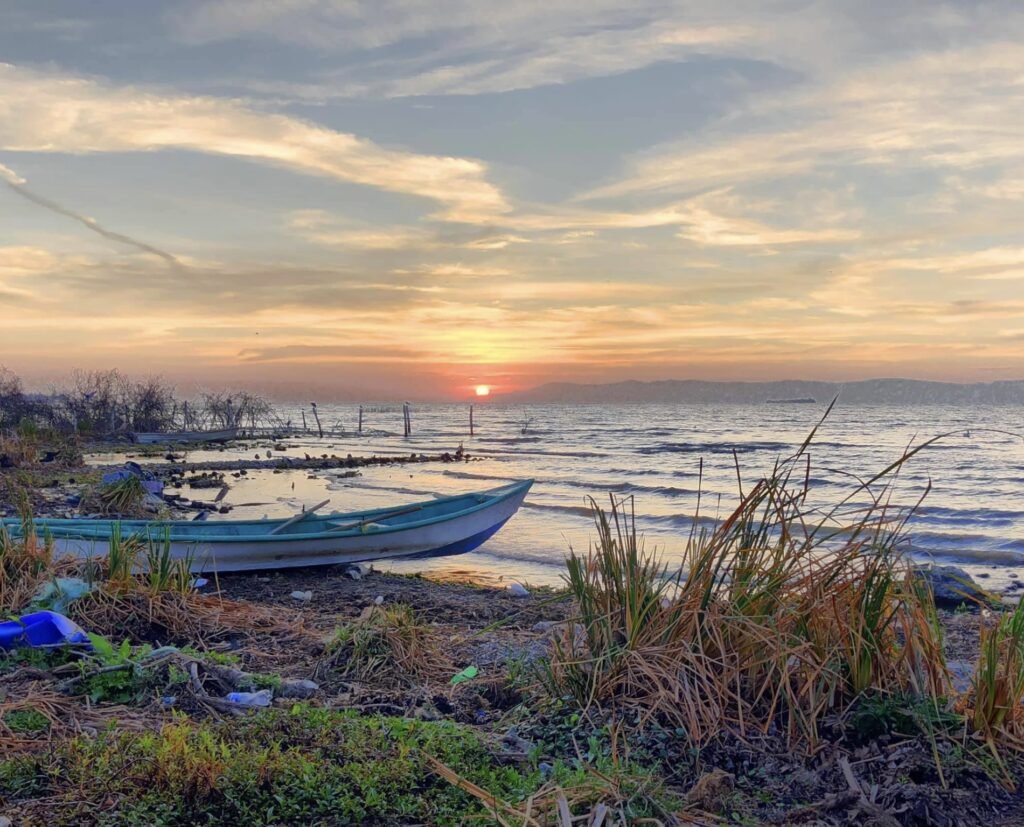
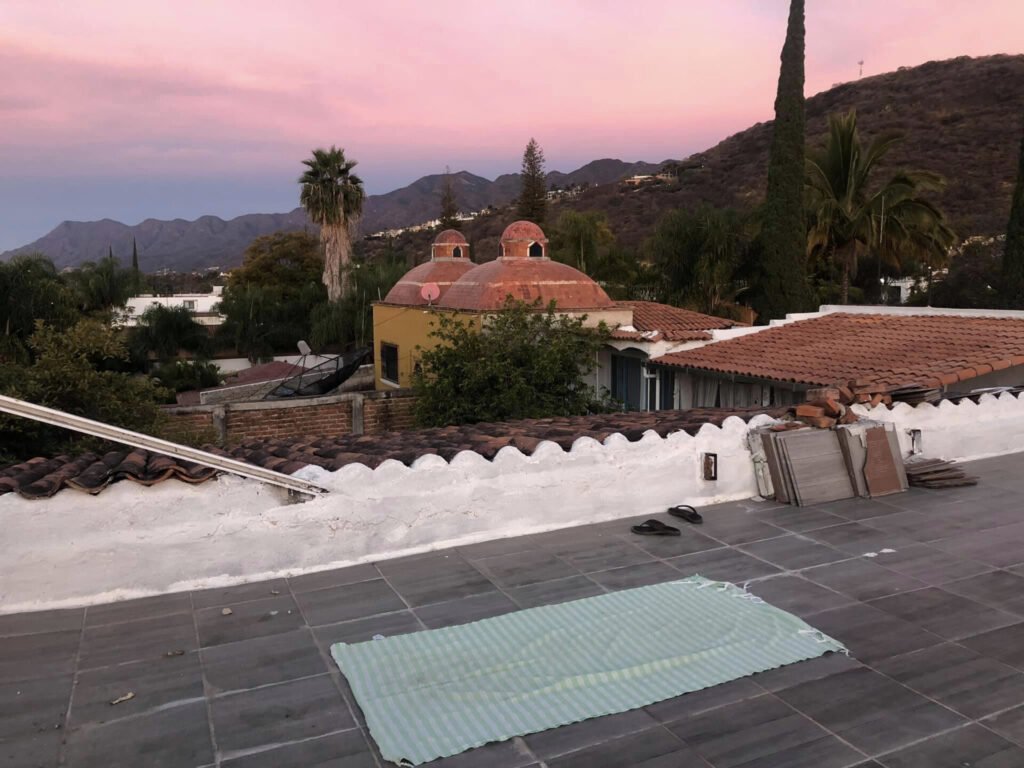
Sunrise is at an appallingly late 7:30, which made sleeping in way too easy. However, we still made an effort on many days to get up early enough to catch it. In fact, Mandy started doing yoga on the tile roof of our building and was able to greet the sun with proper salutations.
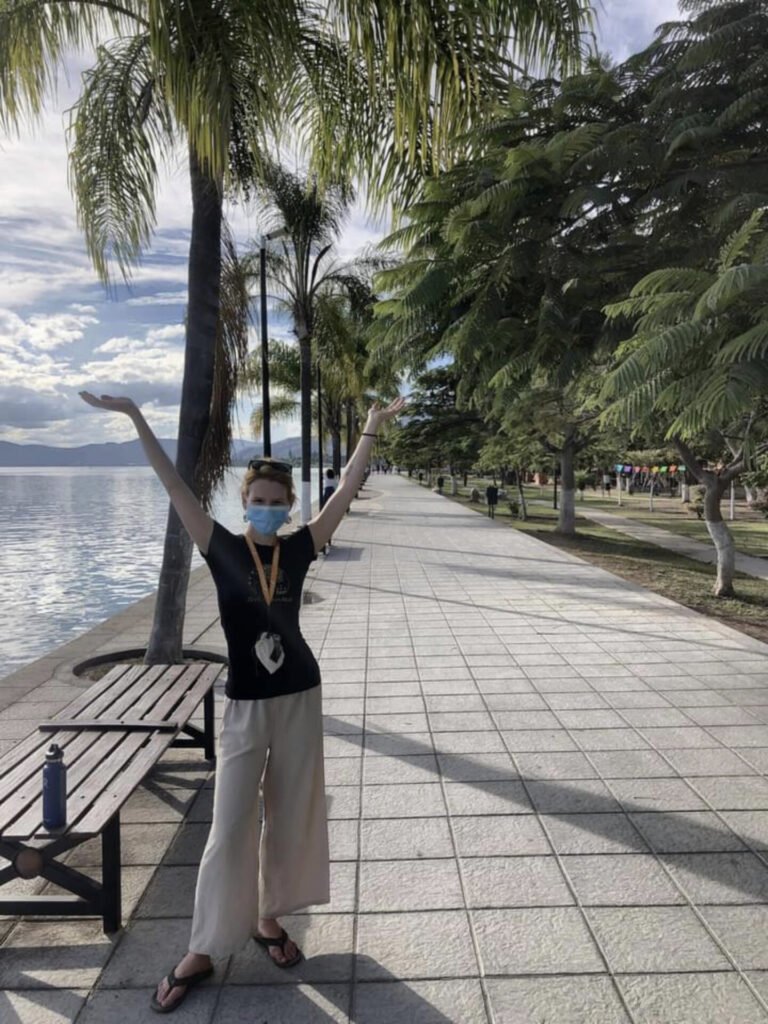
Ajijic
There were suddenly no shortages of walking options to bask in the spring-like and sun-filled weather. From Riberas del Pilar, the walk to the pueblo magico of Ajijic was a pleasant walk of about hour. And once we arrived our new favorite stroll was …on the lovely malecón. Chapala Lake, has pueblos (towns) sprinkled throughout its 68-mile perimeter, all unique and adorable in their own way.
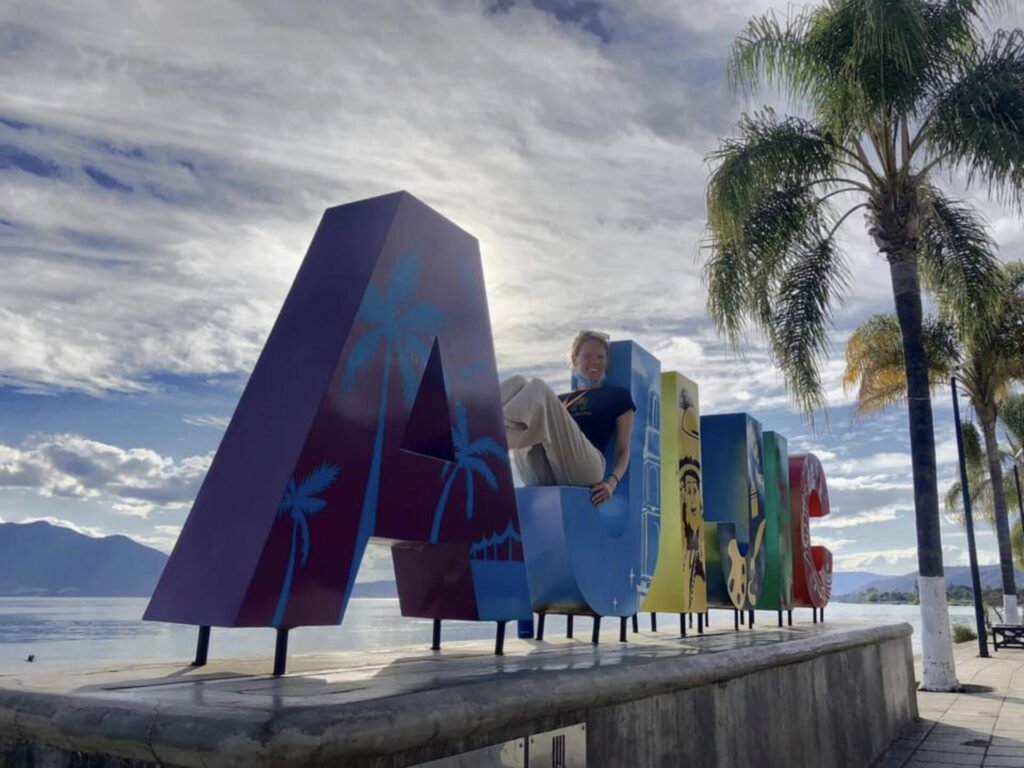
Ajijic, which means “place of water,” is unique because it is one of 132 Pueblo Magicos (Magic Towns) throughout Mexico. These are designated by the tourism board as unique, appealing and culturally important places to visit. We always make it a priority to visit them, and made it to at least ten during these six months in Mexico. What made Ajijic special is that it is packed to the brim with eccentric art, and expat run galleries, restaurants, shops and bars.
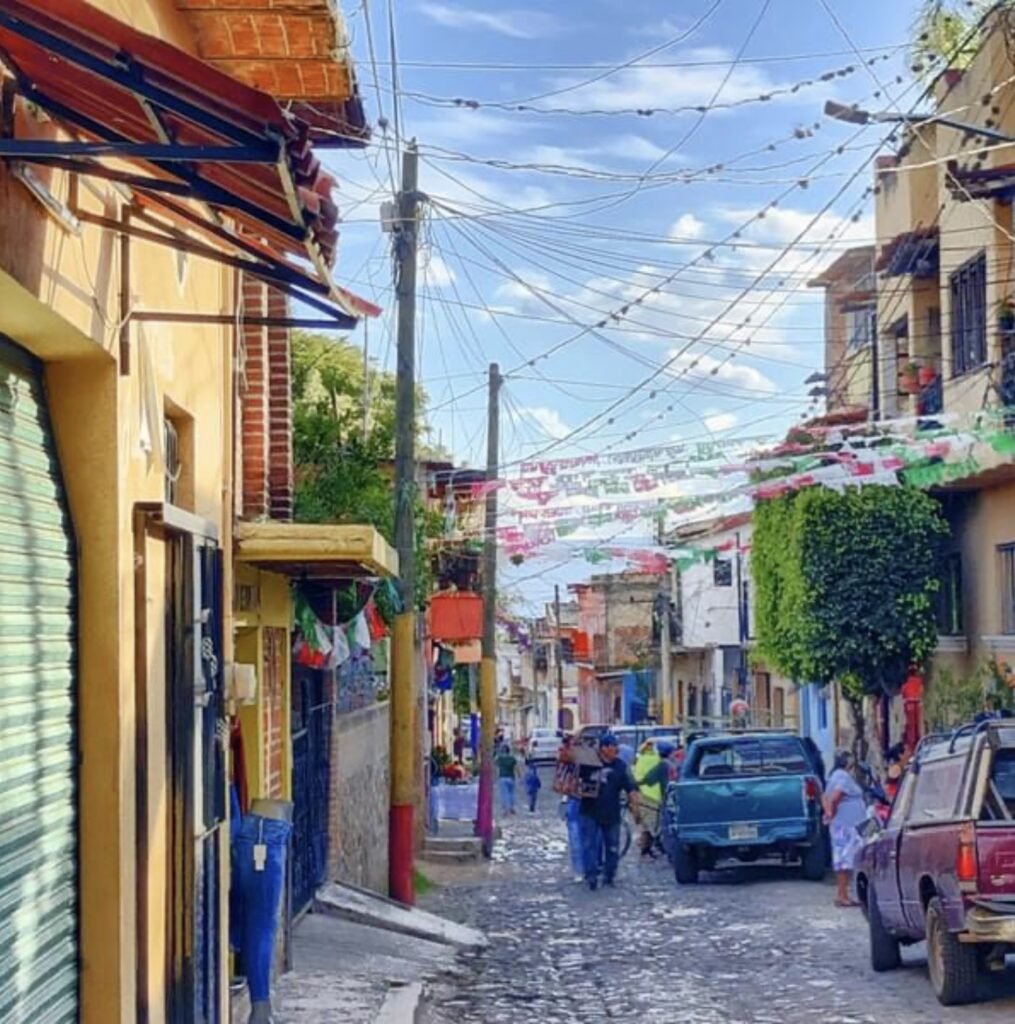
One of the many beautiful street scenes you’ll find in Ajijic.

An entire building was blanketed in these faces and it’s entitled Vivir y Morir…(Live and Die.) In the description it says, “EVERYTHING THAT IS ALIVE WILL DIE, EVERYTHING GOOD AND BAD WILL END, ALL THAT IS STRONG WILL END, EVERYTHING THAT BREATHES WILL HAVE TO EXPIRE…” and encourages people to love, live, dance, sing and drink. We loved the mixed media element of this permanent art. Even though the wall is made of clay and dead, there are holes everywhere on which living flowers can be added.
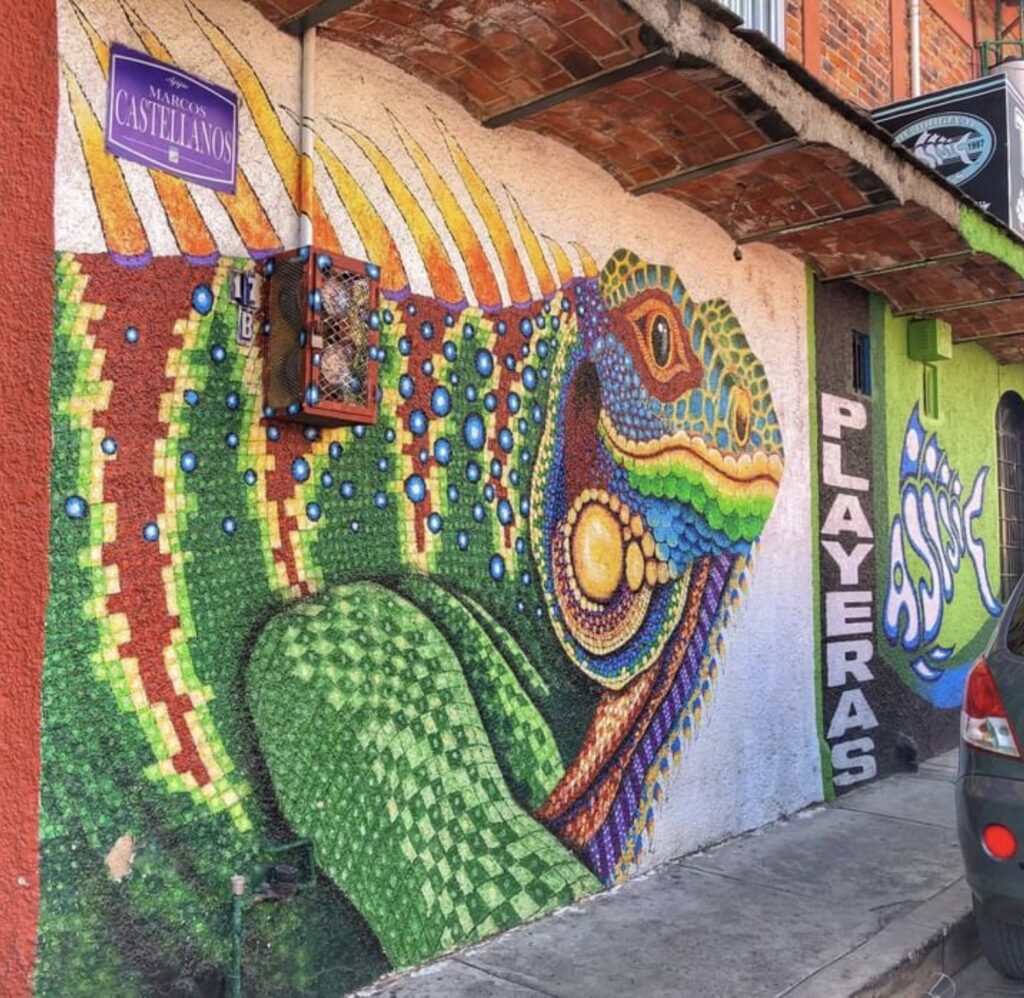
Love this happy lizard.
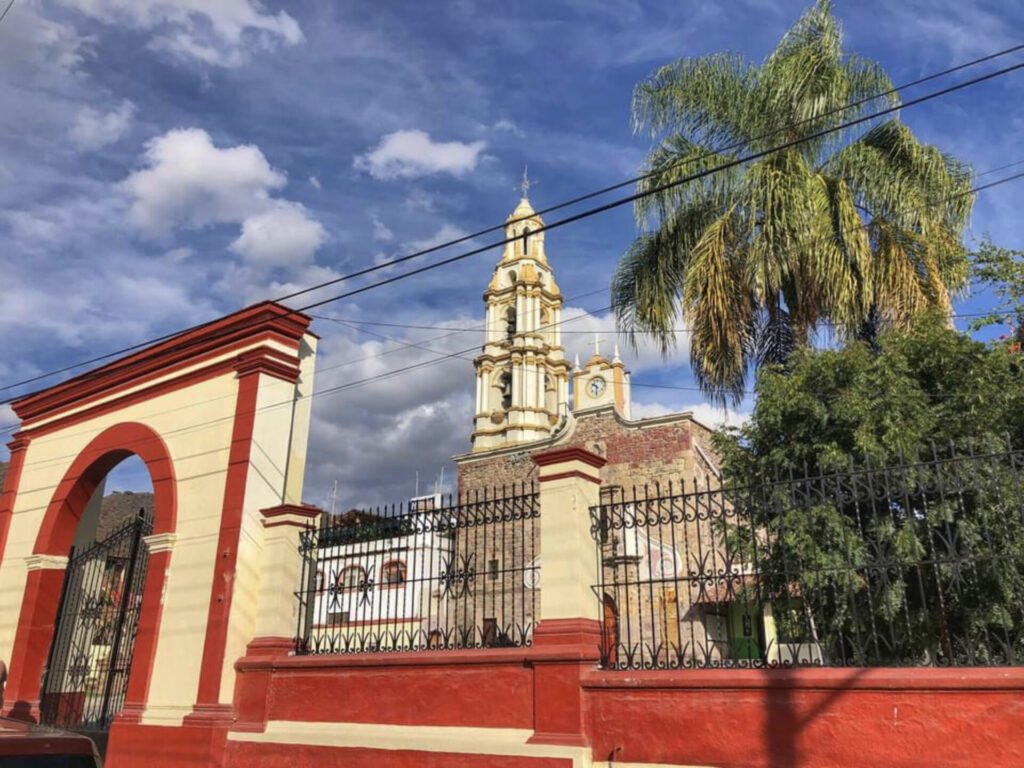

Pausing for coconuts next to one of the beautiful churches in Ajijic.
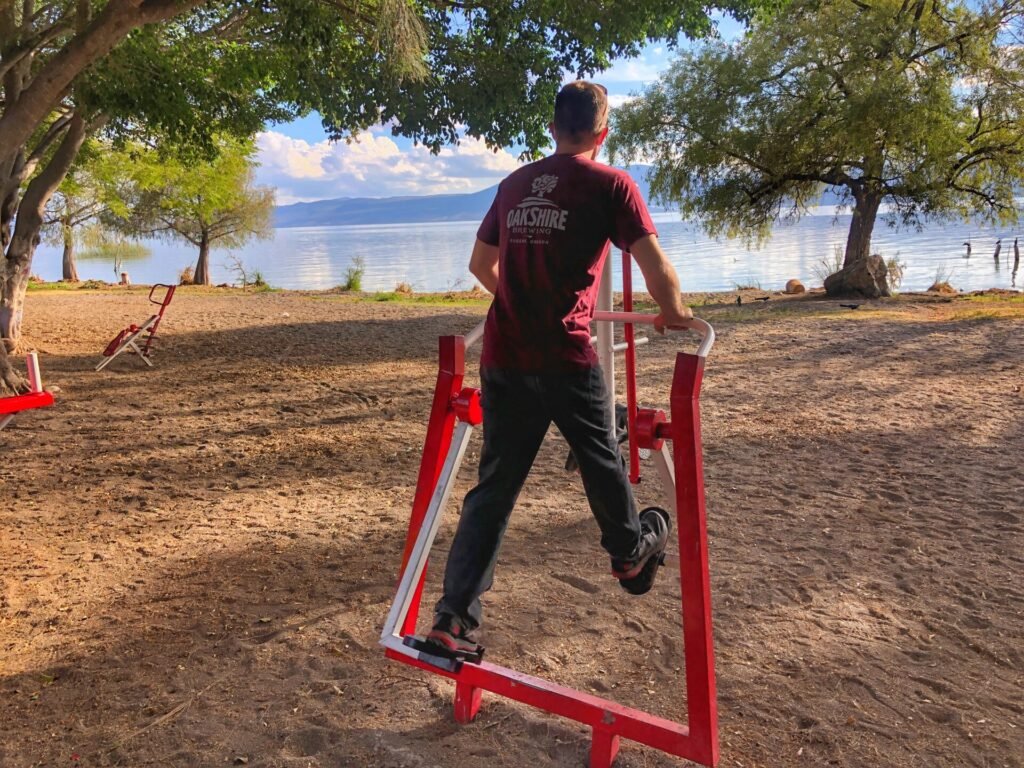
Greg testing the much cheaper and less electricity burning Nordic track on the lakefront. As with most public spaces/parks around the world, they have free and readily available exercise equipment in Mexico. We’ve always loved this. In fact, when Greg was working in parks in Oregon he brought up this global concept multiple times, but no one ever seemed to want to listen to him. One of the many ideas, Americans should accept from foreigners.
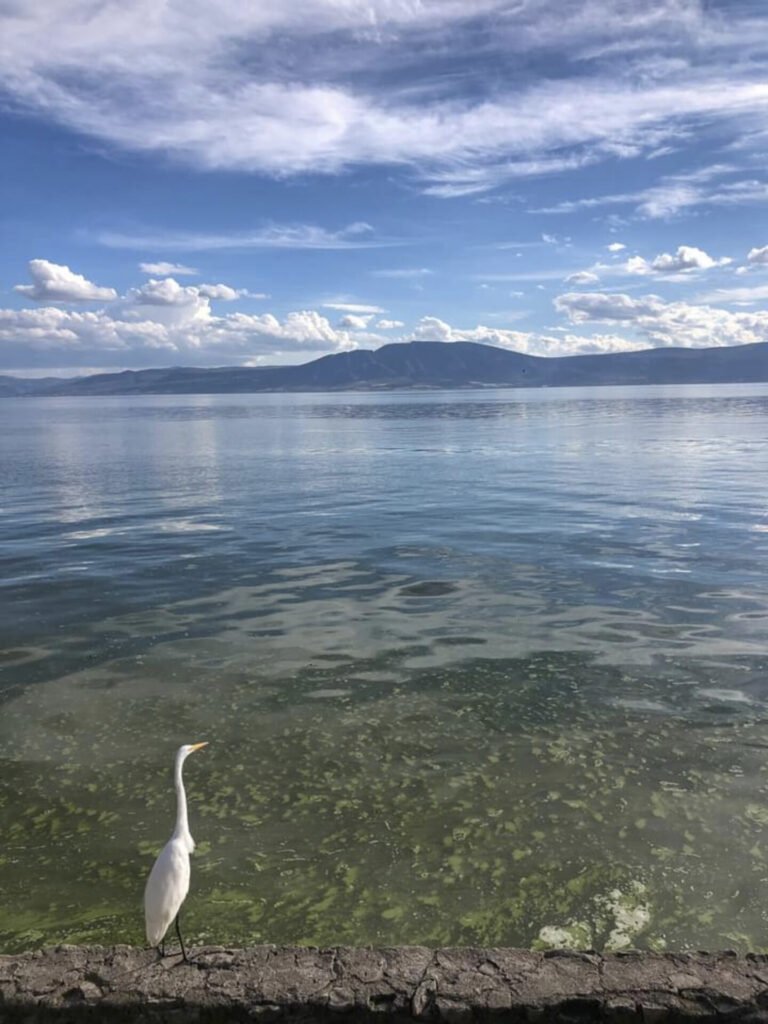
Despite the inability to welcome human marine activities, the lake is abundant is wildlife, particularly cranes and pelicans.
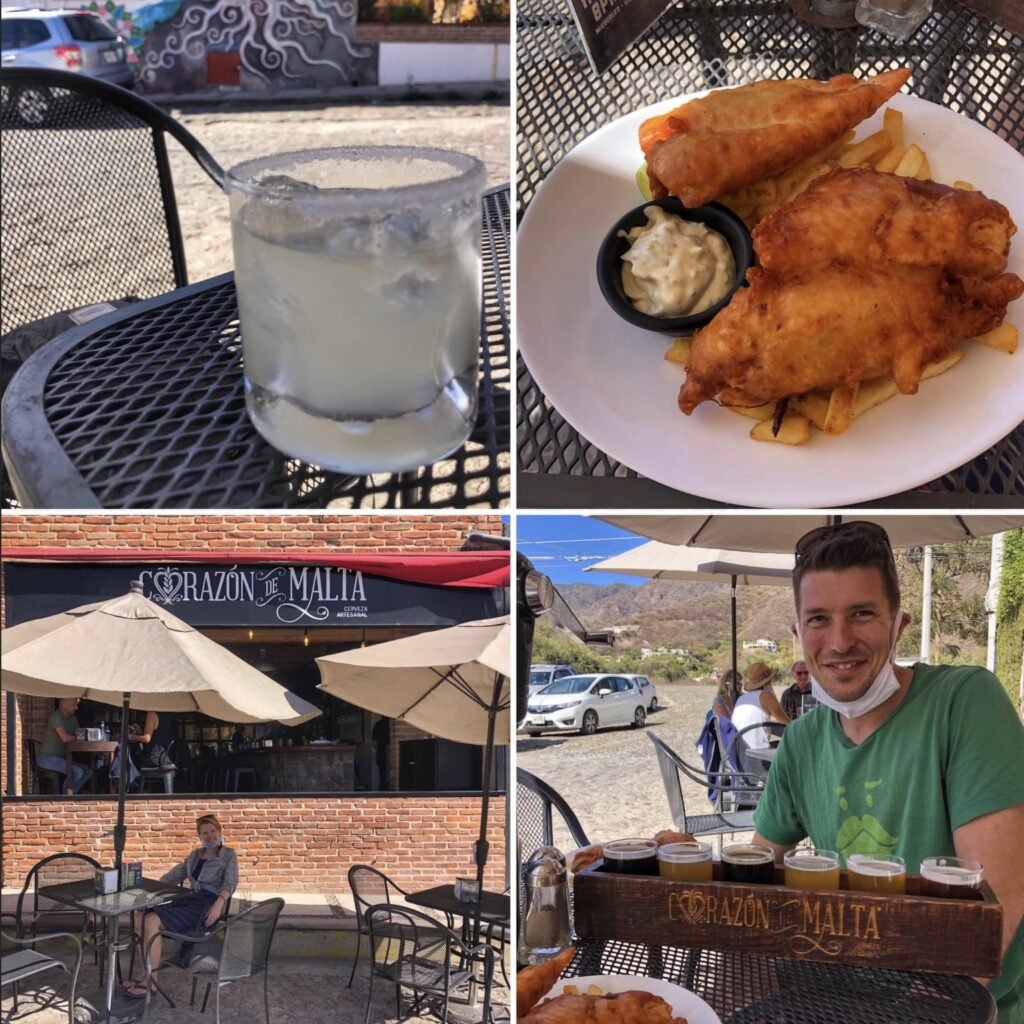
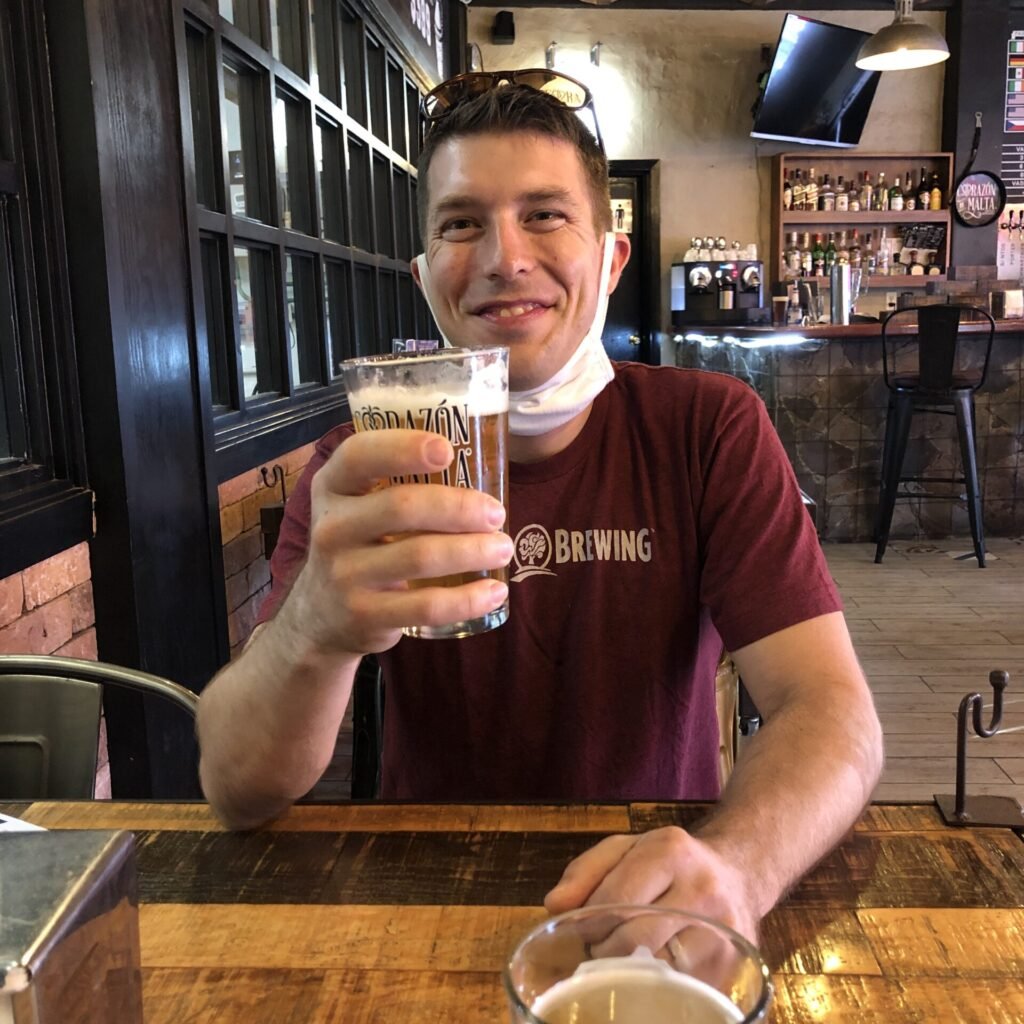
The one and only brewery in the area…Corazon de Malta. We got a six beer taster tray, a margarita and two massive fish and chip lunches for $13 including tip. And then we returned a week later.
Make sure to visit the Ajijic Street Market every Wednesday!
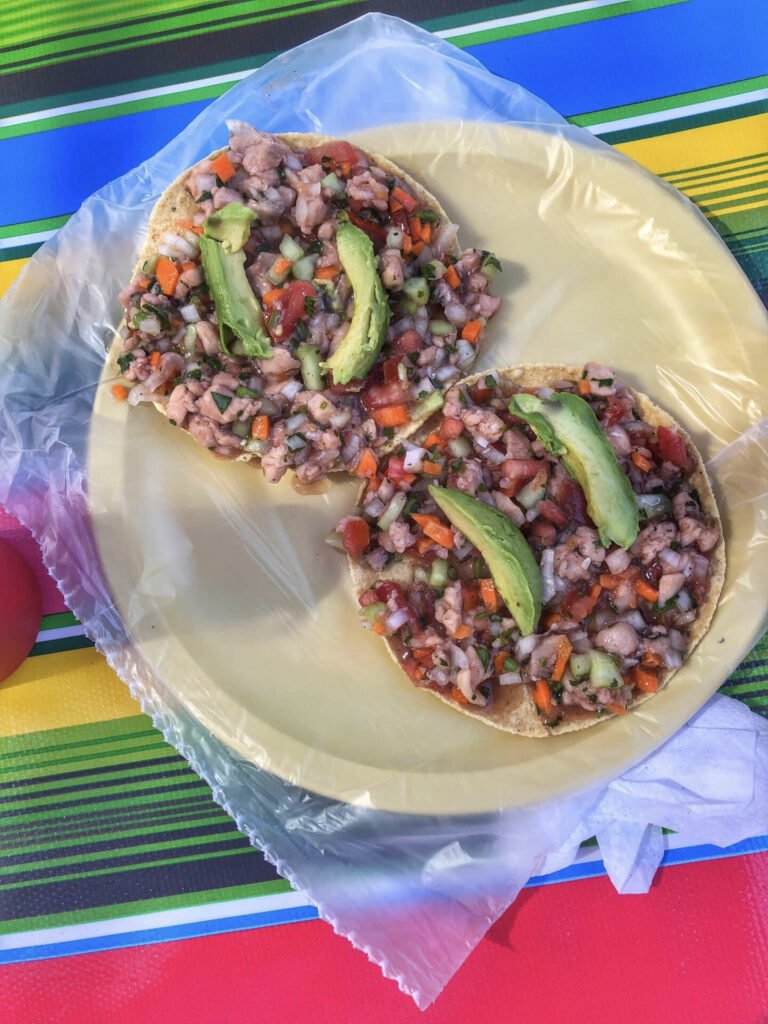
While there we dove into some amazing street side fish and shrimp ceviche tostadas for $20 pesos. ($1/each).
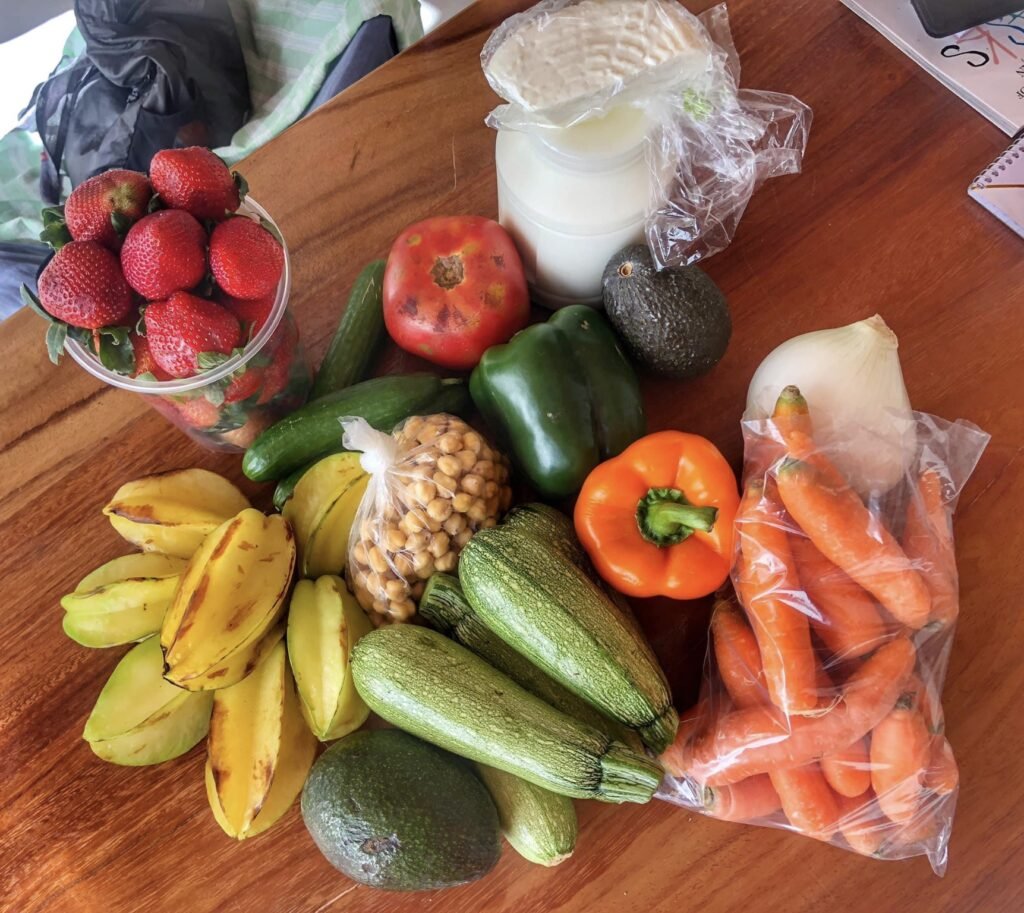
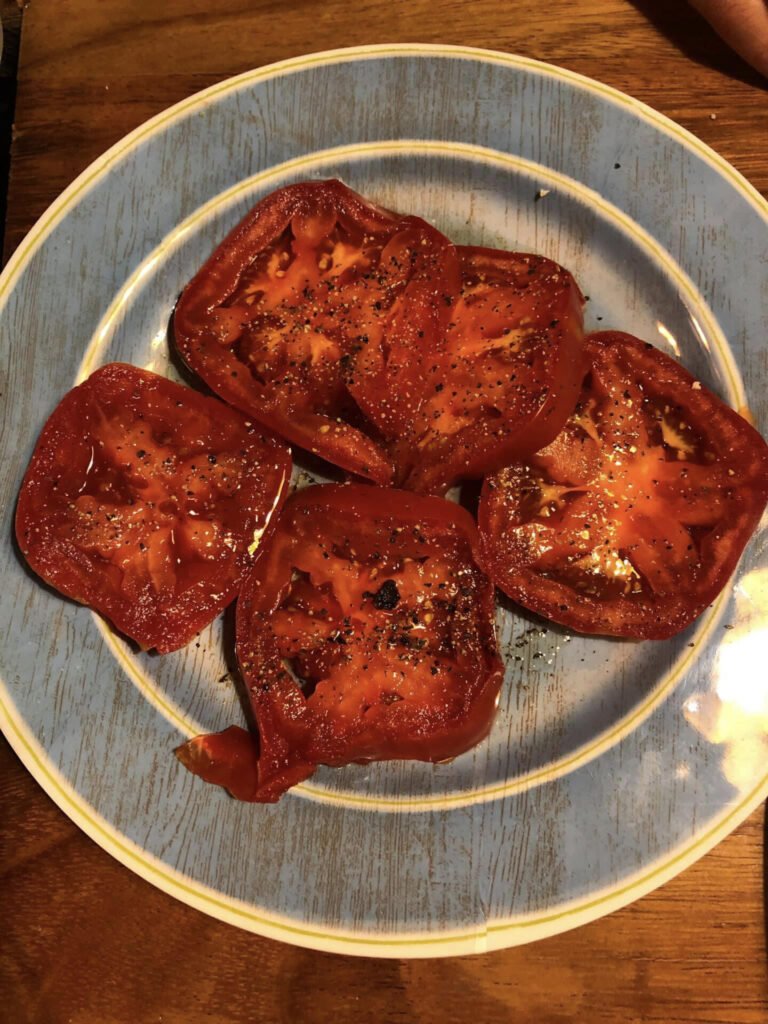
Market booty. All of this, including yogurt, cheese and strawberries that tasted like the June variety from Oregon and tomatoes like the ones in Indiana in August. About $9. Of course, you always have to make sure to wash unpeeled produce with clean water! Fortunately, water is cheap in Mexico. A large garafon (20 liters) cost between $1-$1.50.
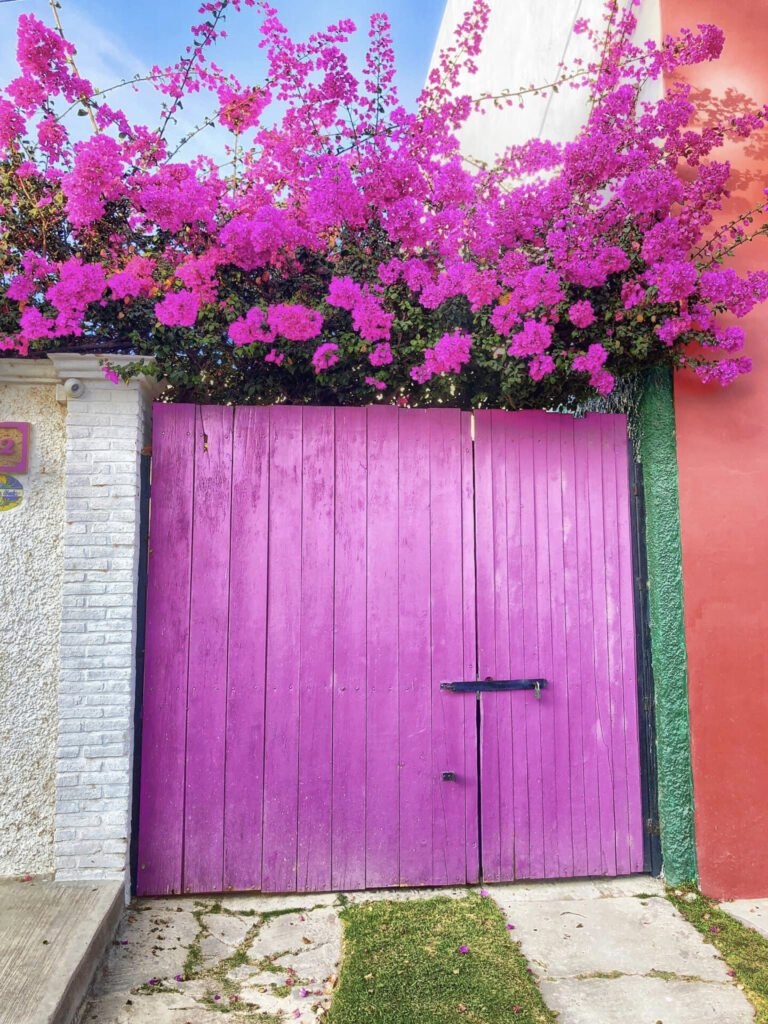
We’ve always wanted to color our door to complement the flowers.
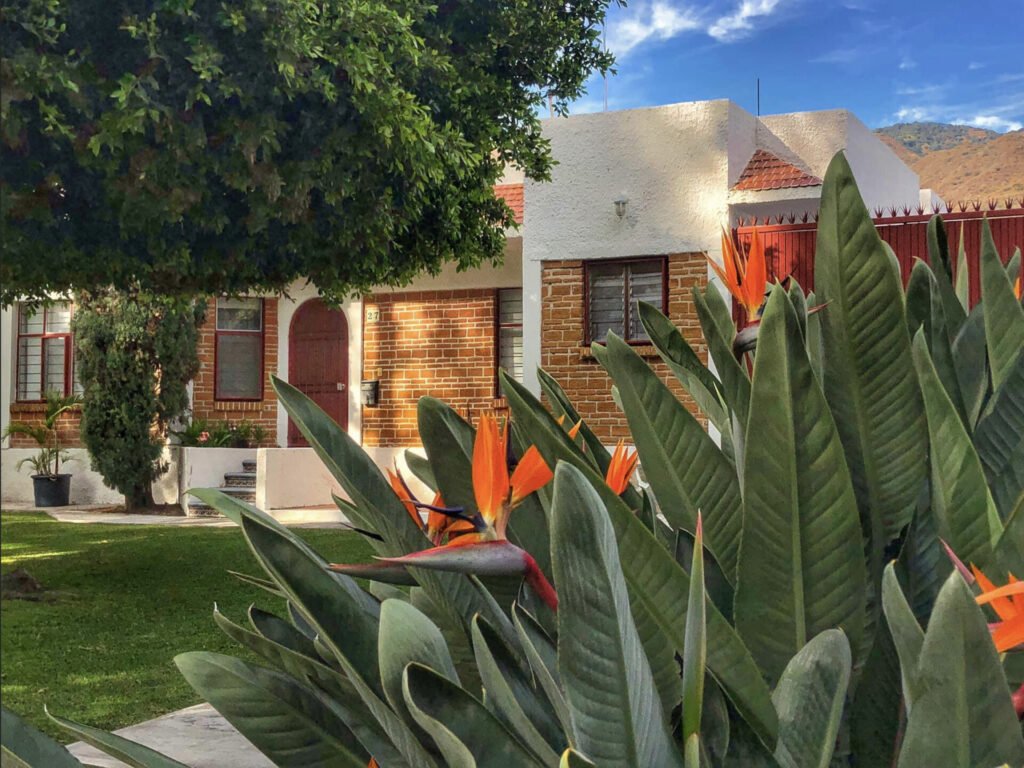
Birds of paradise in another person’s front lawn. For the record, this seems to be the “rich” part of Ajijic….conveniently located behind the Wal-Mart. Cost of living reports state that it’s very easy to survive on $1900 a month for a good quality lifestyle. We lived very comfortably on $609 for the two weeks we were there.
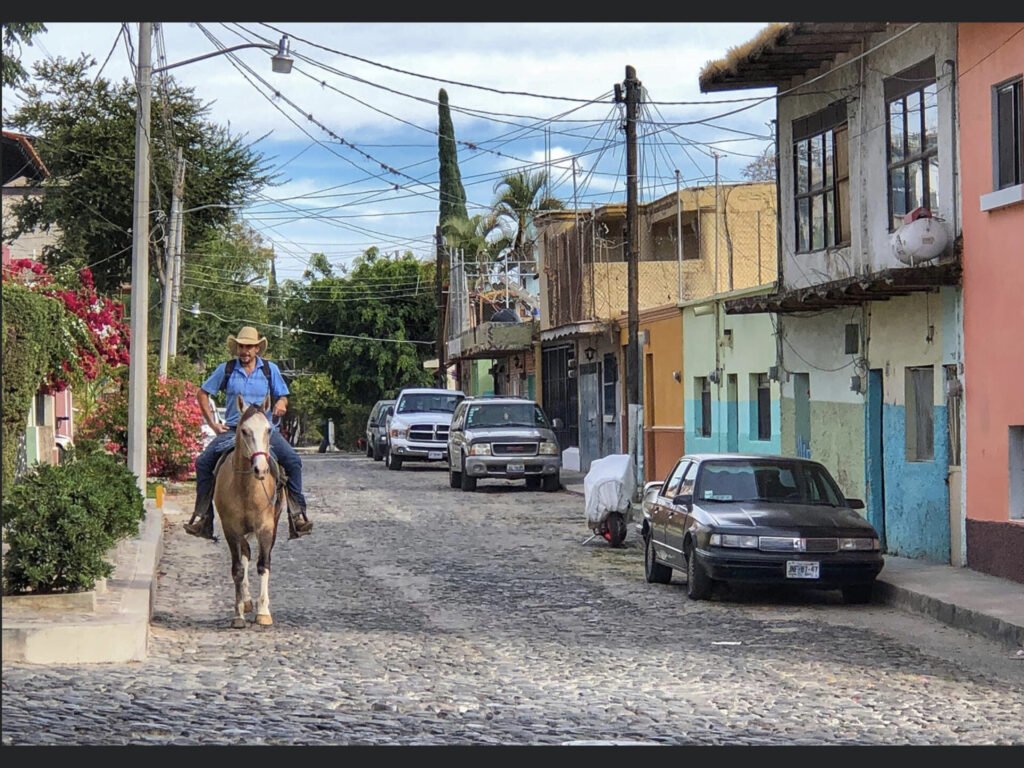
There is nothing like hearing horse hooves on cobblestone.
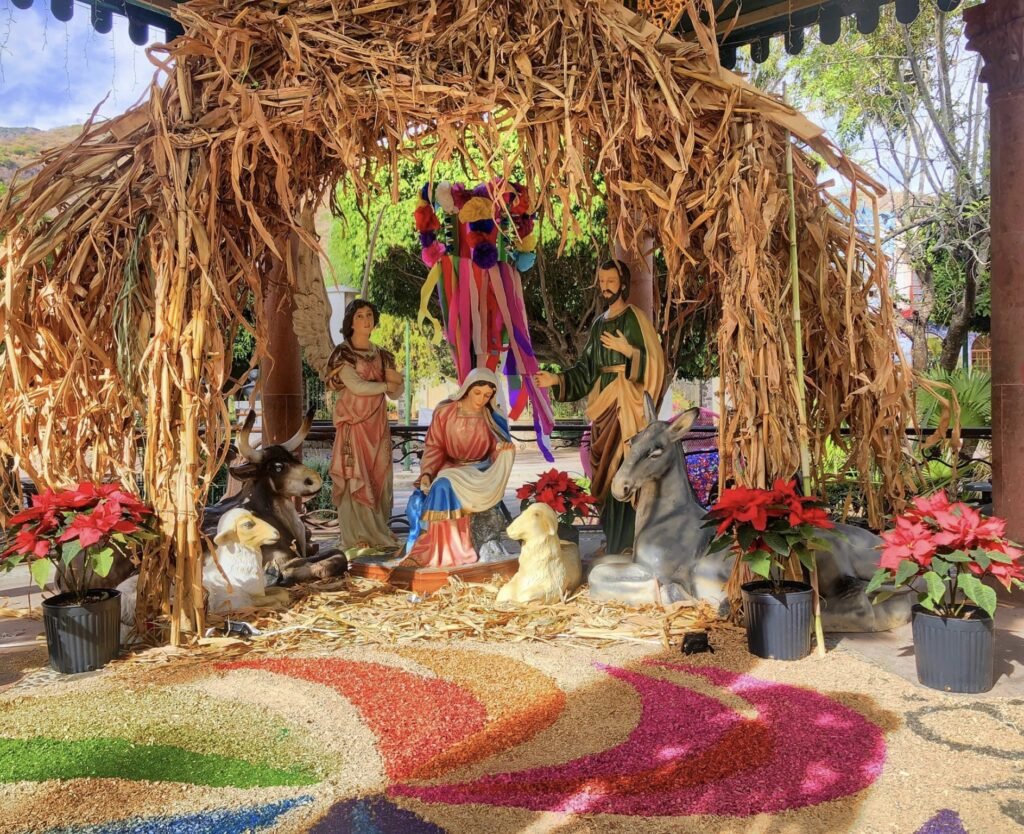
The nativity scene in Ajijic’s center centre gazebo.
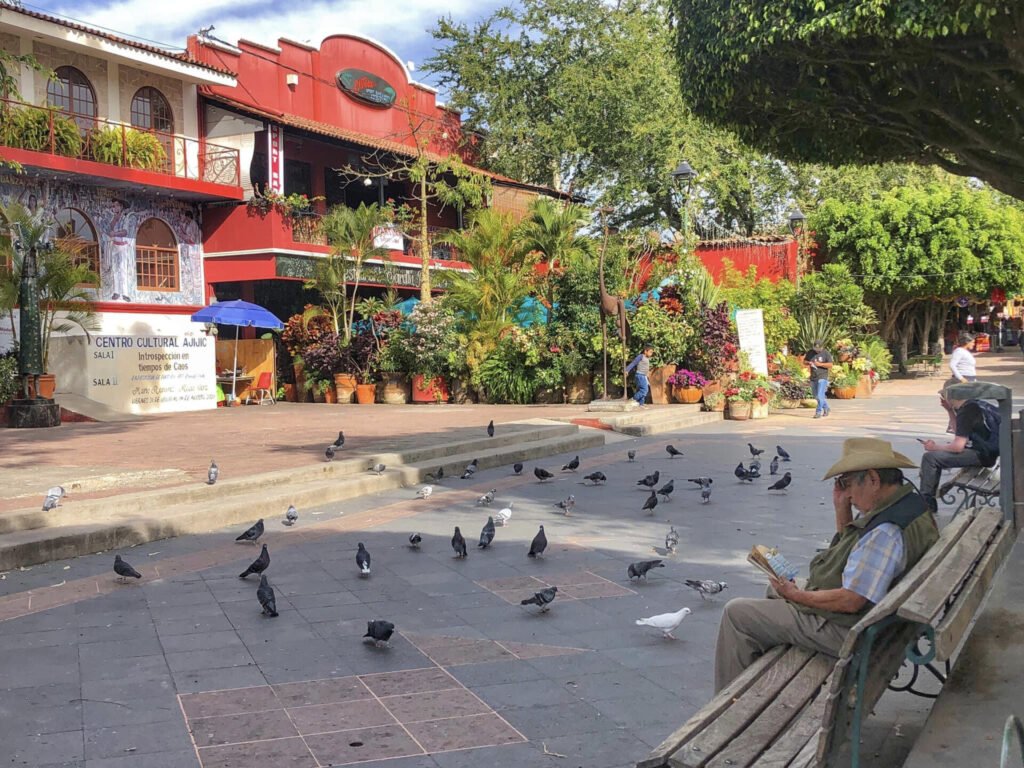
Slowing down is what Mexico is all about…including taking time to read…real books.
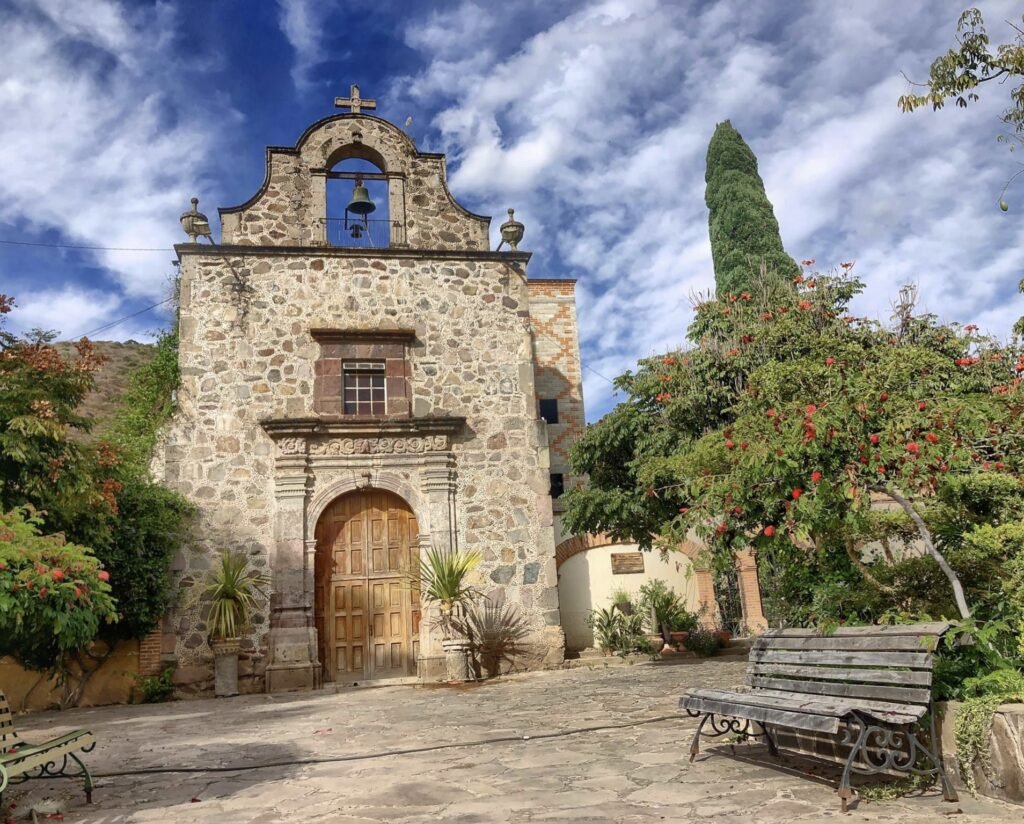
Ajijic’s little church…La Capilla Nuestra Señora del Rosario, a simply poetic looking chapel.
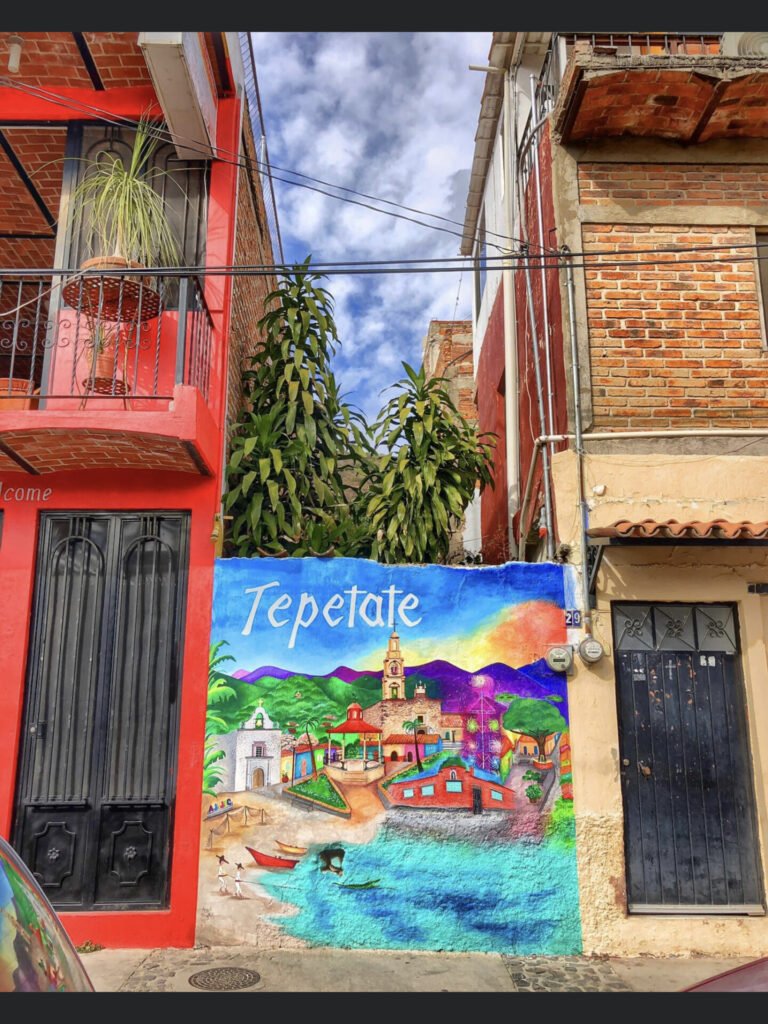

Street art depicting the history of the town which was founded in 1472 and is one of the oldest villages in western Mexico. It has attracted foreign writers and artists since the 1890’s. We certainly understand why.


Other less lovely things near Ajijic were the good ‘ol Wal-Mart, or “Wally World” as some affectionately call it, is somewhere we really prefer not to go in the States, but we thought it might be fun to check out while in Mexico (plus we accidentally left behind a phone charger and knew they’d have it!) They have expanded rapidly in Mexico, and are multiplying at way higher rates than in the States, at 134 new stores in 2019 alone. Like in the States, they are wiping small and local businesses along with them. ?
So, it was bizarre to be in one again, and actually brought back childhood memories because the store looked a lot like stepping back in time to the Wal-Marts (Or Kmarts, because what’s the difference?) of the 1980’s. The signage, the high shelving displays, the swinging price drop signs, man. It made you us feel like kids again.
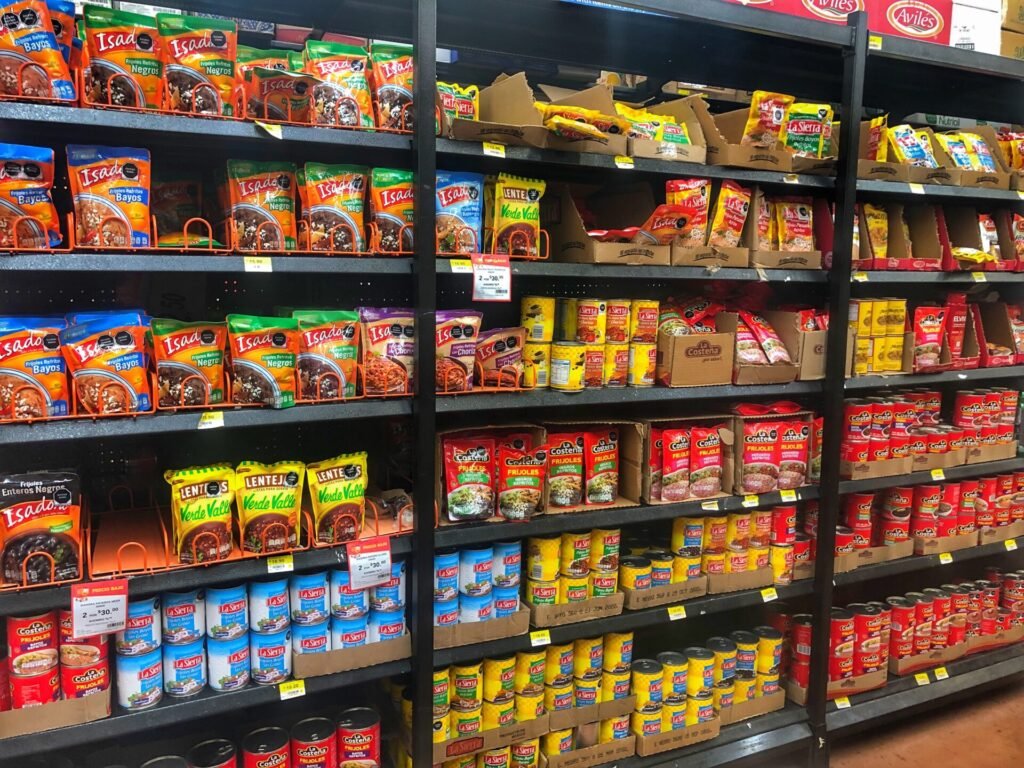
Bean heaven. It’s funny. While traveling in Asia/Africa/Europe last year Mandy wanted these so badly. Now, it’s simply overload.
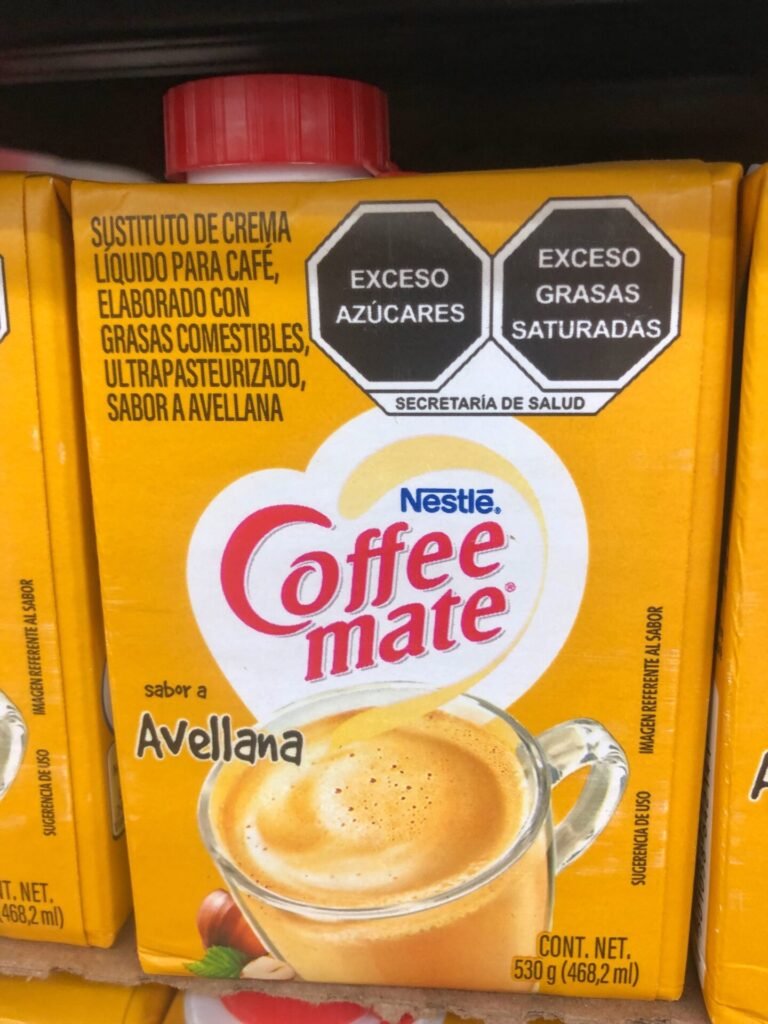
Speaking of overload, we really appreciate Mexican food labels. It’s ridiculous how much you have to weed through food labels in the States to find the sugar, sodium and calorie/serving contents. Here they conveniently (and legally) are required to plaster “Exceso azucares” (excessive sugar), “exceso sodio” (salt) and “exceso grasas saturadas” (saturated fats) on their labels.
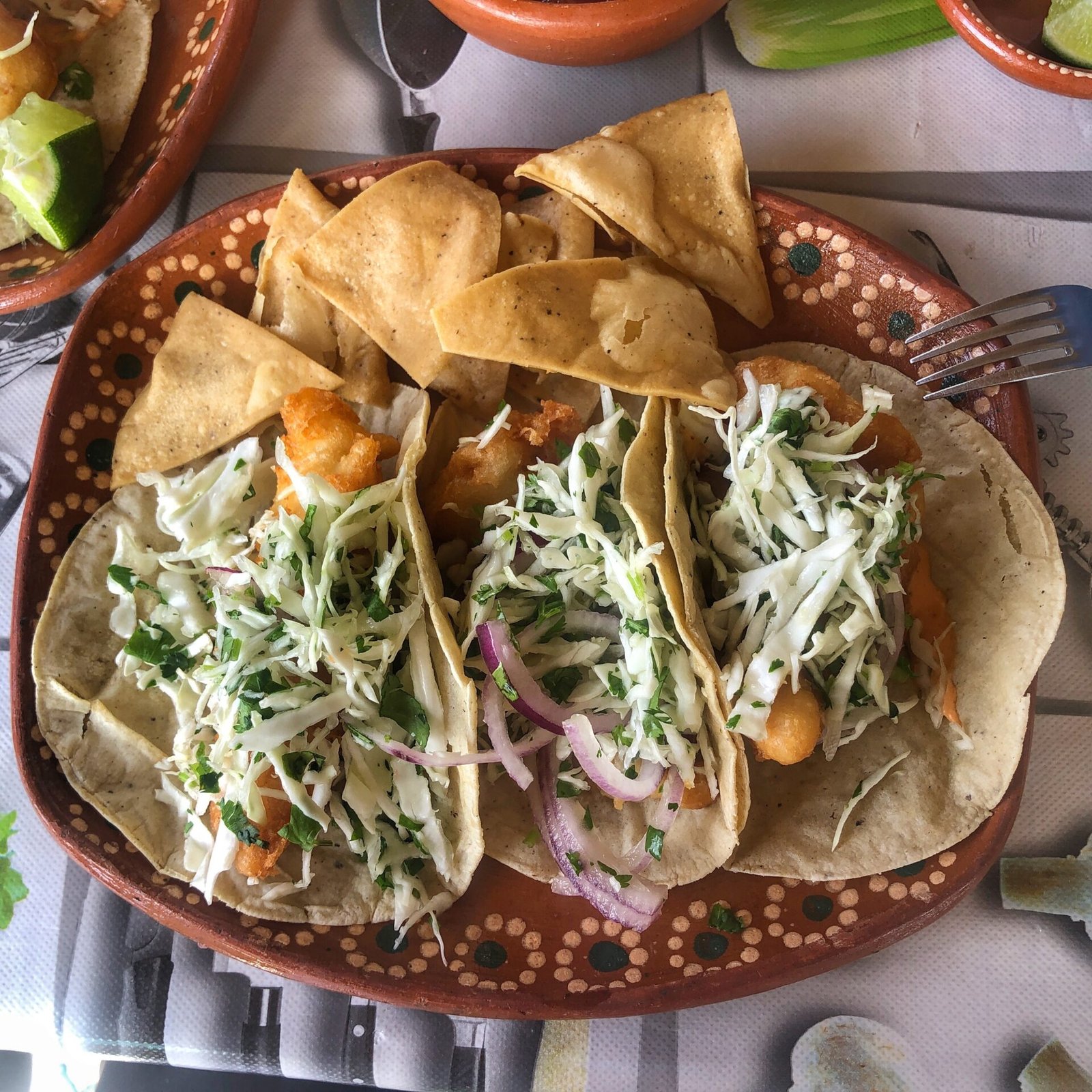
Not at Wal-Mart. ? An mouth-watering fish taco lunch at Lake Taco. After months of consuming tacos, we both agreed these were some of the best fish tacos we had in our whole six months in Mexico! Dios mio!!
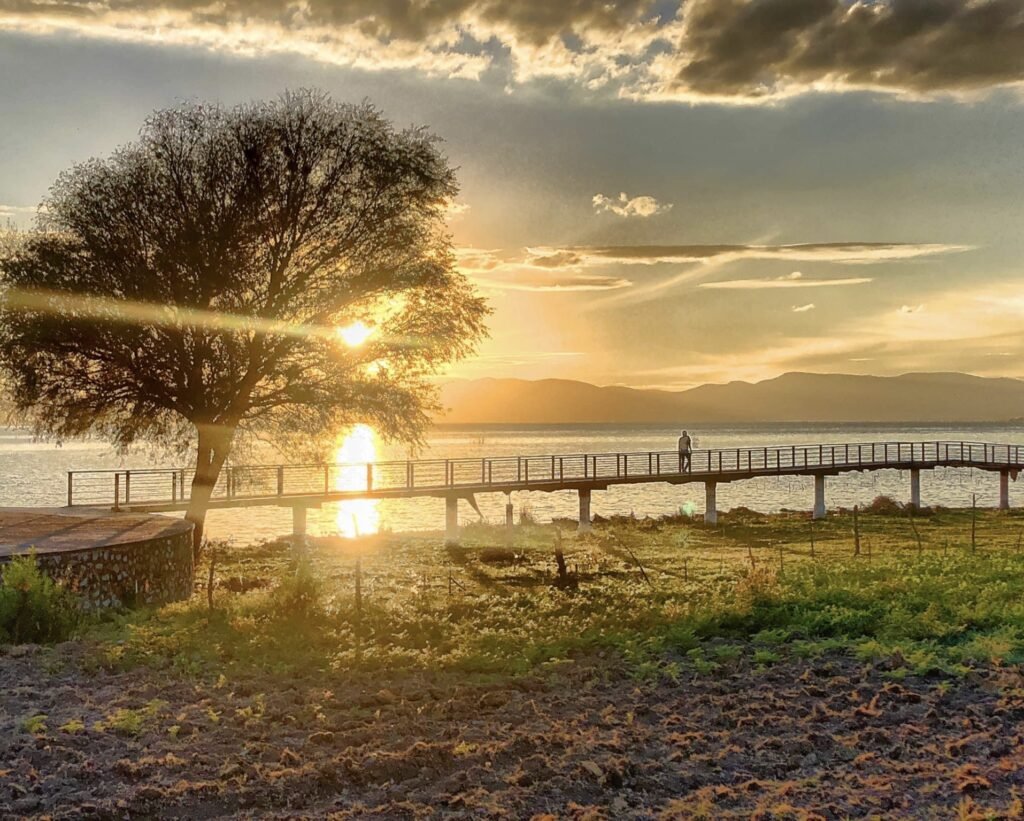
San Antonio Tlayacapan
The village next to ours, San Antonio Tlayacapan, is where we grew most accustomed to going because it had its own malecon, supermercado and restaurants and is about a one hour round-trip walk, which kept our feet moving and off the bus. And luckily, of all the pueblos we visited, we found it to be one of the most tranquil.
The start of the San Antonio malecon was an idyllic place to catch the sunset. Every night we went there we saw a mix of locals and mexpats, usually either couples or single (white) women. What an unbelievable place to retire. And why not? You can buy a literal mansion here complete with a maids and gardeners for the price of a shoebox in Portland. And the Mexican government evidently and kindly makes it easy for Americans and Canadians to do this.
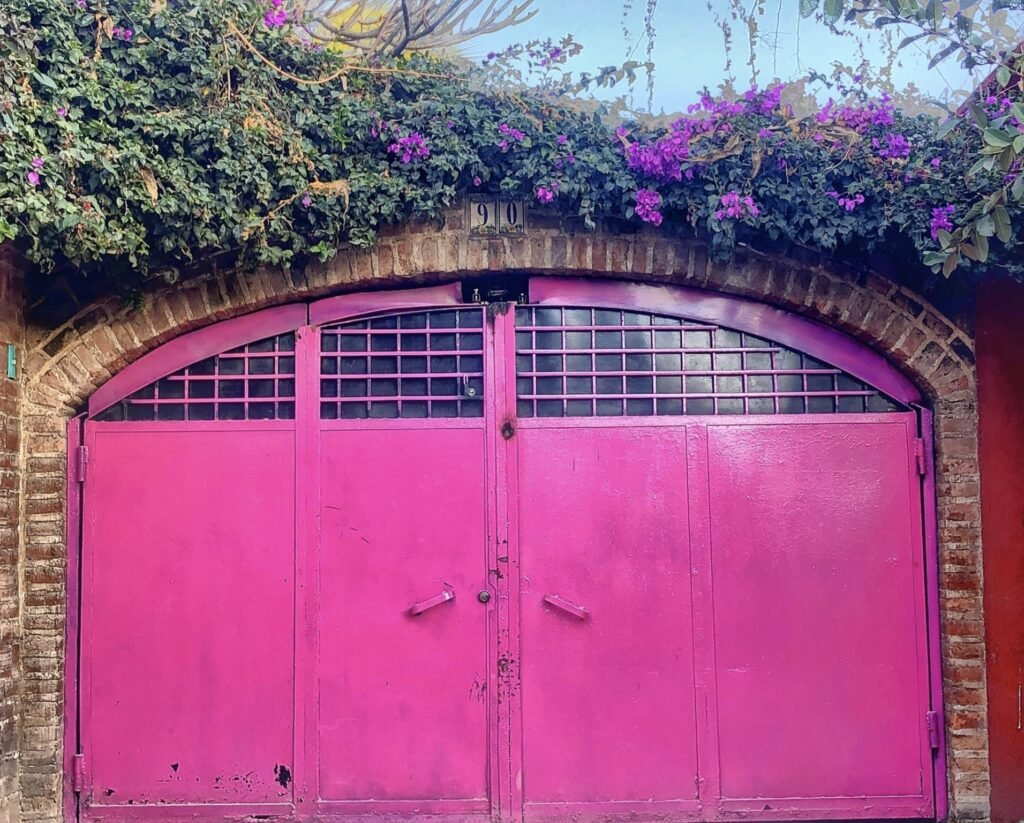
And another great thing about living in Mexico? If you want a hot pink garage door, you can freakin’ have a hot pink garage doors and no one will report you to a home owner’s association ?

A fishing boat cast on the shore. Apparently, there is a very active population of people on Lake Chapala who fish for a living, although commercial fishing is not allowed. The kinds of fish that you can catch are tilapia, carp, and catfish. The water entering Lake Chapala from the Lerma River is sadly highly polluted with heavy metals and other toxic substances so its not anywhere we would personally drop a line.
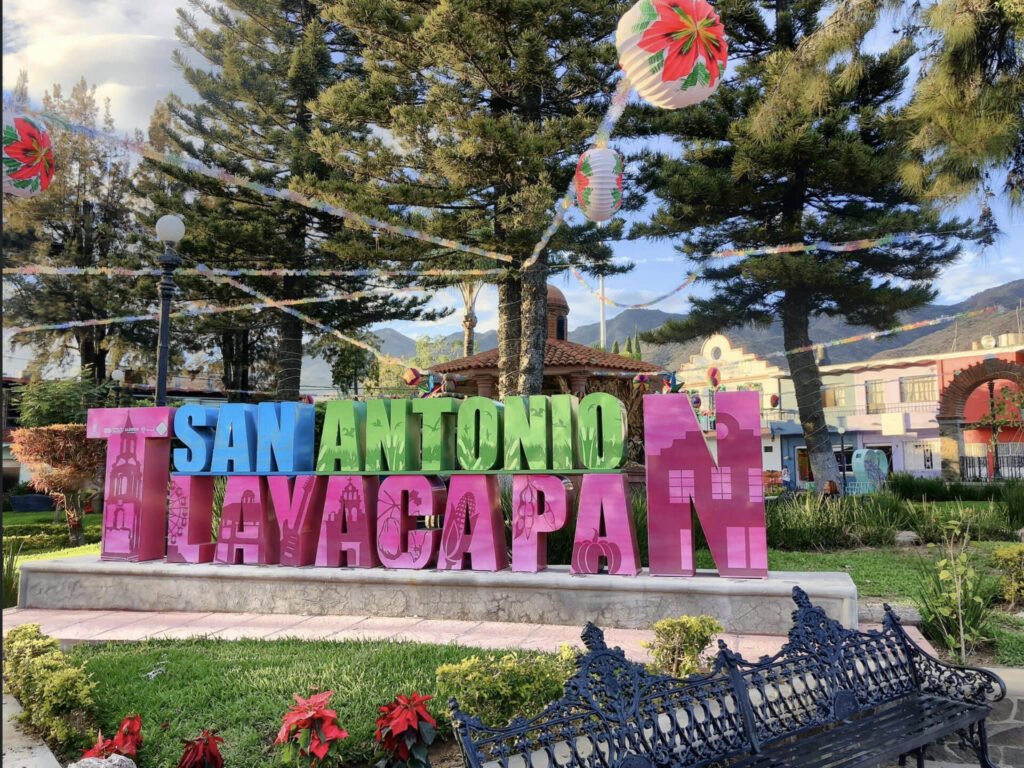
You will find a sign like this welcoming you to almost every pueblo in Mexico. All of them are unique and vibrant and often found in the main plaza.

Greg has been to Mexico about 10 times before this, but never during Christmas. During this visit, it was fun for him to observe how the Mexicans turn the central plaza gazebos into nativity scenes and sprinkle the grounds with poinsettias.
Speaking of, did you know poinsettias actually originate from Mexico? That’s right, and it’s not just a pretty flower. They’ve actually been used since Aztec times to dye clothing and medicinal treatment for fevers!
But, how they came to be associated with Christmas is another story…
According to whychristmas.com, there was once a poor Mexican girl called Pepita who had no present to give the the baby Jesus at the Christmas Eve Services. As Pepita walked to the chapel, sadly, her cousin Pedro tried to cheer her up. “Pepita,” he said “I’m sure that even the smallest gift, given by someone who loves him will make Jesus Happy.” Pepita didn’t know what she could give, so she picked a small handful of weeds from the roadside and made them into a a small bouquet. She felt embarrassed because she could only give this small present to Jesus. As she walked through the chapel to the altar, she remembered what Pedro had said. She began to feel better, knelt down and put the bouquet at the bottom of the nativity scene. Suddenly, the bouquet of weeds burst into bright red flowers, and everyone who saw them were sure they had seen a miracle. From that day on, the bright red flowers were known as the ‘Flores de Noche Buena’, or ‘Flowers of the Holy Night’.
The shape of the poinsettia flower and leaves are sometimes thought as a symbol of the Star of Bethlehem which led the Wise Men to Jesus. The red colored leaves symbolize the blood of Christ. The white leaves represent his purity.
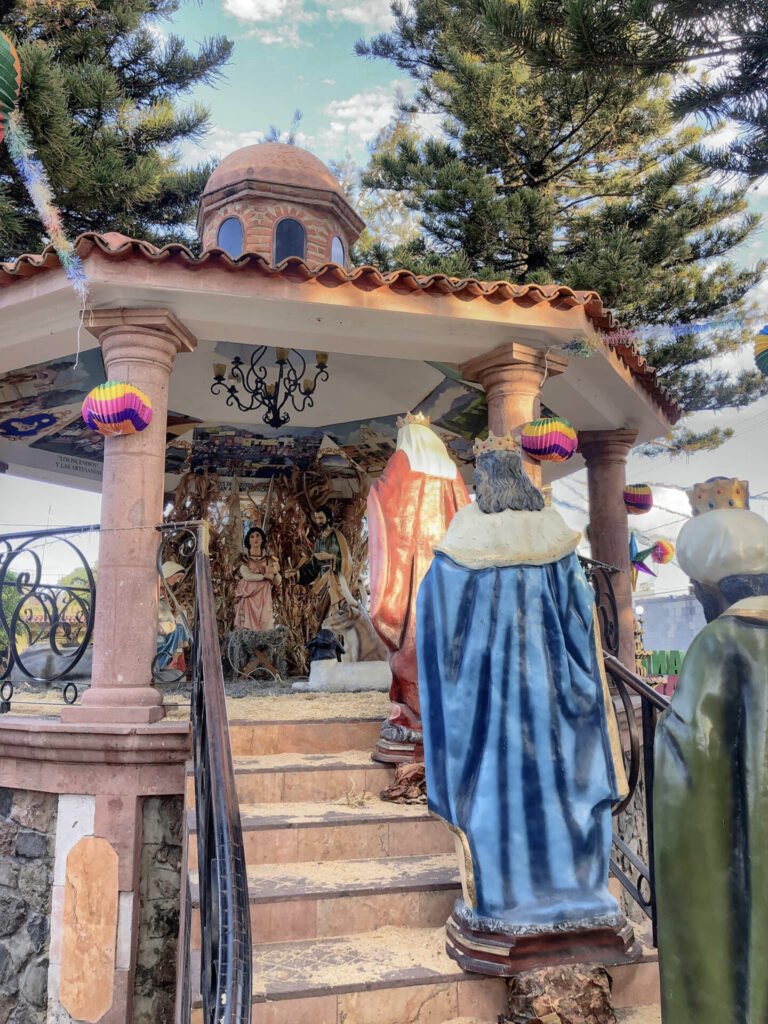
Taking a closer look at the nativity scene. In the back of the three kings, it’s now easy for us to identify King Balthasar, the king from Ethiopia whose empty tomb we saw last fall. Frankly, before this, we had never given much thought to the fact that one of these three kings is in fact, always depicted as black. In this scene, everyone else still seemed to have hailed from Europe’s renaissance, however.
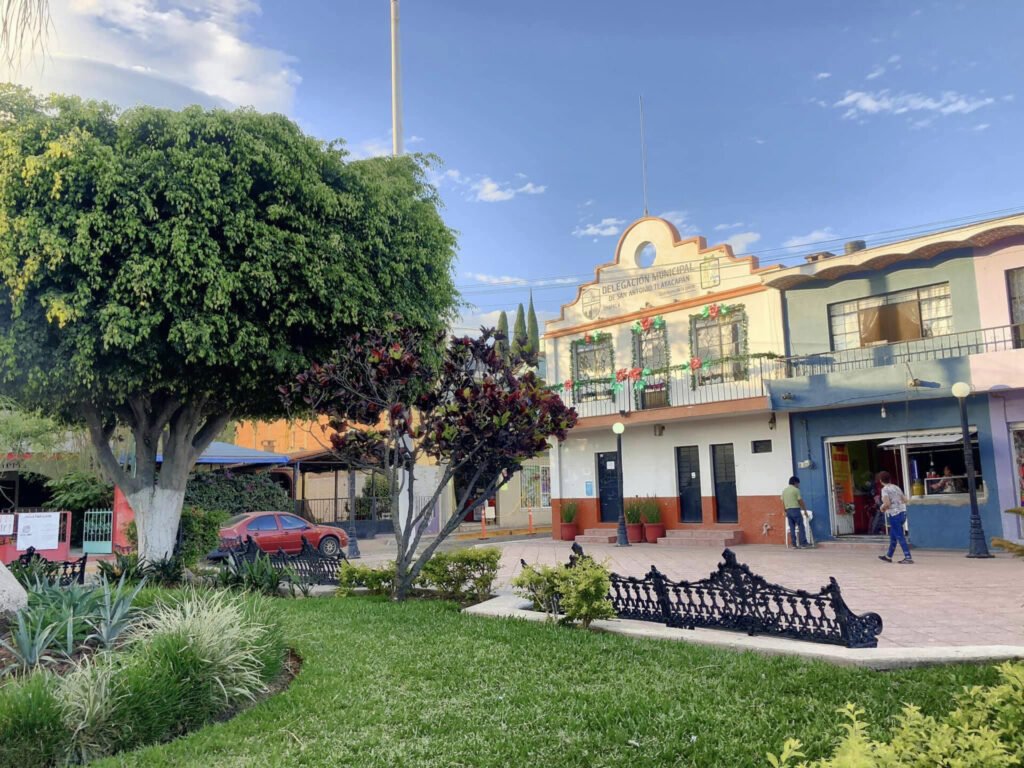
The San Antonio plaza. So tranquil. Not to mention…they had good ice cream.
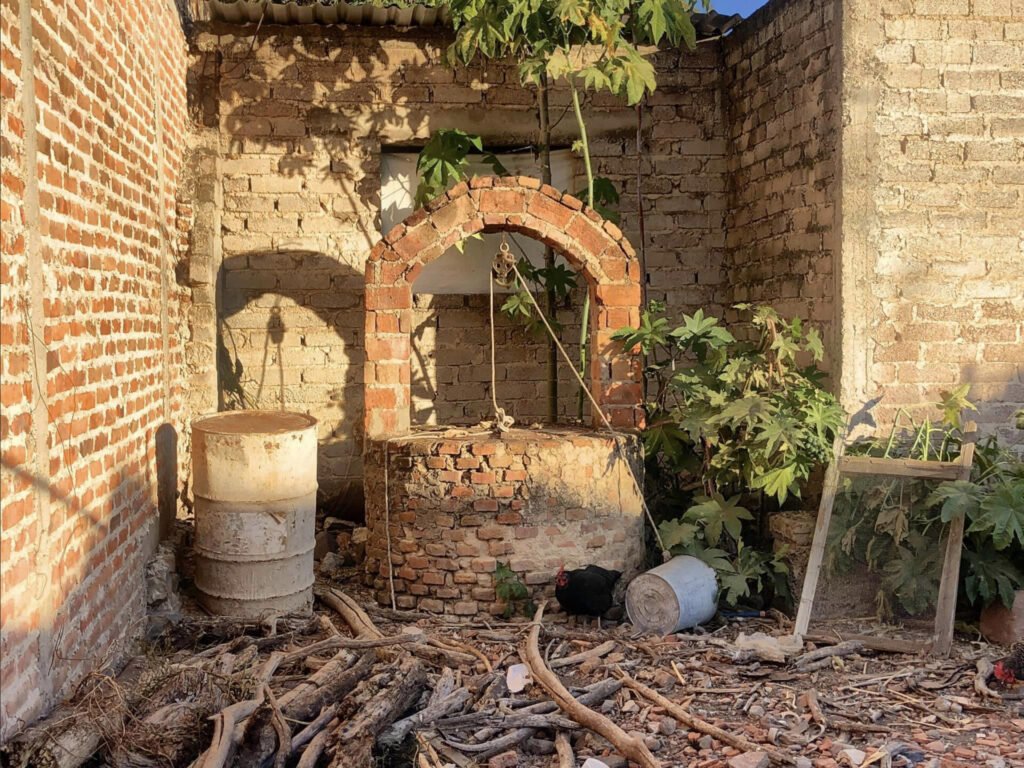
Loved this old well. Would love to know its story.
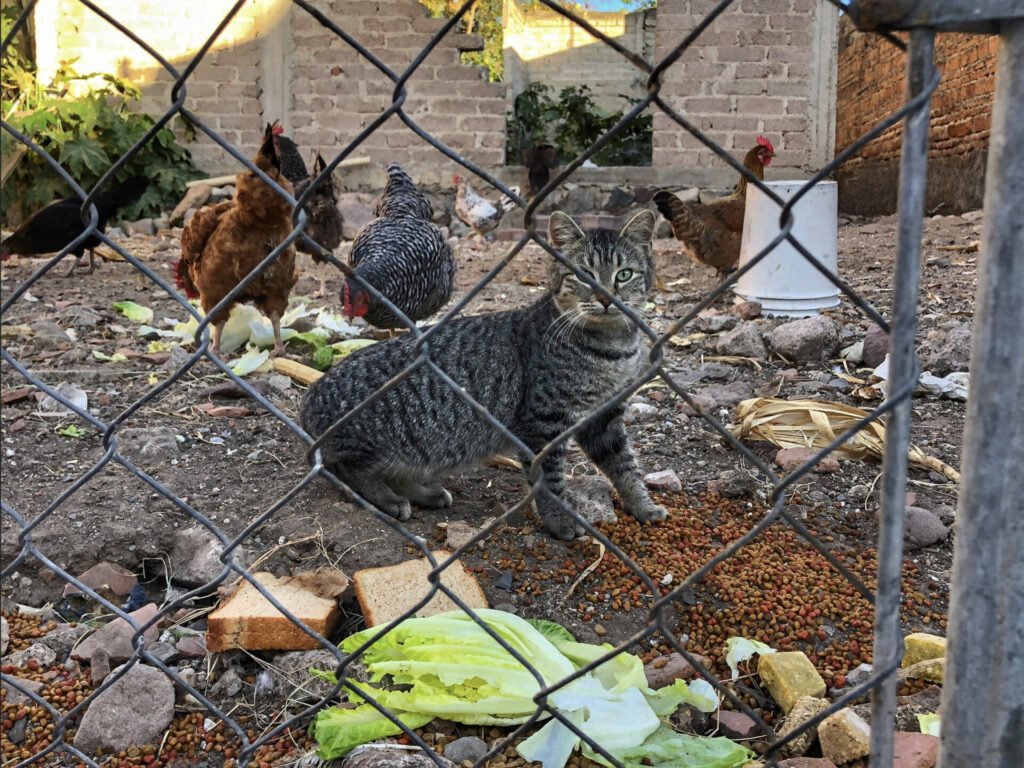
This cat was clearly looking for trouble in all the wrong places. There was a bunny hopping around in this pen as well ?

Awww! Perrito! Yes, we learned the word for baby dog….errr…..puppy. Most of the street dogs in the Chapala area seemedto be looked after in some capacity as most had collars and were neutered. Really good to see.
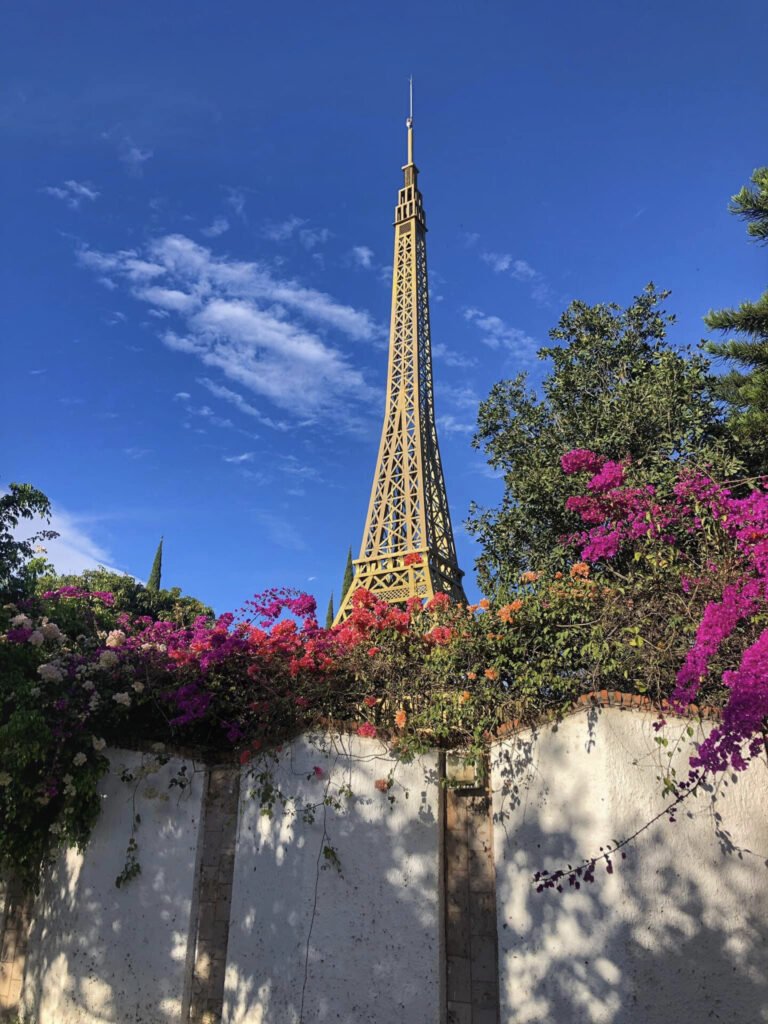
WTF is this doing here? Our story is, it’s clearly an expat couple with a lot of money to burn. One of them, most likely the husband wanted to move to Mexico, and the wife wanted to move to Paris. So they obviously compromised and built this ridiculous piece of tack in their yard.
Spa Day @ Spa Termal Tlalocan
We’ve been in quite a few unique spas and thermal baths around the world, but never where we got a bucket of chocolate deluged on us, had the chance to be exfoliated by coffee grounds, or where vibrant flowers found their way into crooks and crannies within our swimsuits. Although you indeed can’t swim in Lagos de Chapala, the lake is dotted with loads of spas and pools for getting your swim and relaxation on. And the one we chose, Spa Termal Tlalocan, which is part of Hotel Balneario in the pueblo of San Juan Cosala, was undoubtedly one of a kind….
We knew this would be worth splurging on, so we arrived and dropped $320 pesos ($15) each for the entry into the water park, which we would return to after our thermal experience. The park had multiple pools, including various water slides, kiddie pools, diving boards and hot tubs. You’re evidently also allowed to bring in your own food and not forced to buy from overpriced snack stands. However, the fun surprise, we later found out, is that the pool water is….deliciously warm. I mean, it didn’t NEED to be because the sun, as usual, was beating down and it was a very ideal 75 Fahrenheit (24 C). However, apparently we’re learning, Mexicans REALLY don’t like to be cold, which suits Mandy well because, neither does she. Anyhow, when Mandy decided to go on the water slide, she was delighted to find this warm bath water bursting from the top of the water slide. However, she made the mistake of first going down the fully enclosed slide, which was pitch black inside, and got stuck about half way down. With the warm water, complete darkness, and the fact that she got stuck in a vacuum tube, this scenario was ripe for a panic attack. Fortunately, she had just been healed at the thermal spa. So, after an “oh shit” moment, she simply wriggled her way free and slipped ungracefully to the oxygen hole below without further incident.
Arriving to the spa portion of the sprawling complex, we met a sales girl in a fur-lined puffy jacket (it was about 65 degrees in the morning) and paid her each an additional $190 pesos ($9.50) for the “Spa Plus” experience, which included extra time in each pool, and the chocolate and coffee experiences. Another option was the “Basico” package for $125 pesos, but with that one you didn’t get to spread chocolate on your spouse. So…you know, whatever floats your boat, but we can vouch that it was well worth the extra $3! We walked into…a completely empty facility. There were only six other people that ended up in the facility the whole time we were there. No need to worry about social distancing, that’s for sure!
Our first bath, not pictured, was Vinegre de Manzanas. If you know basic Spanish, you can obviously process that to mean….apple cider vinegar. And like the real deal, the odorific scent emerging from the bubbling pot of it wasn’t exactly pleasant. However, we read that it purifies the intestines, helps combat constipation, contracts varicose veins, helps circulation, and can help with dizziness, cramps and fatigue. So, we figured, why not douse ourselves with a tub of pungency for 15 minutes of our lives?
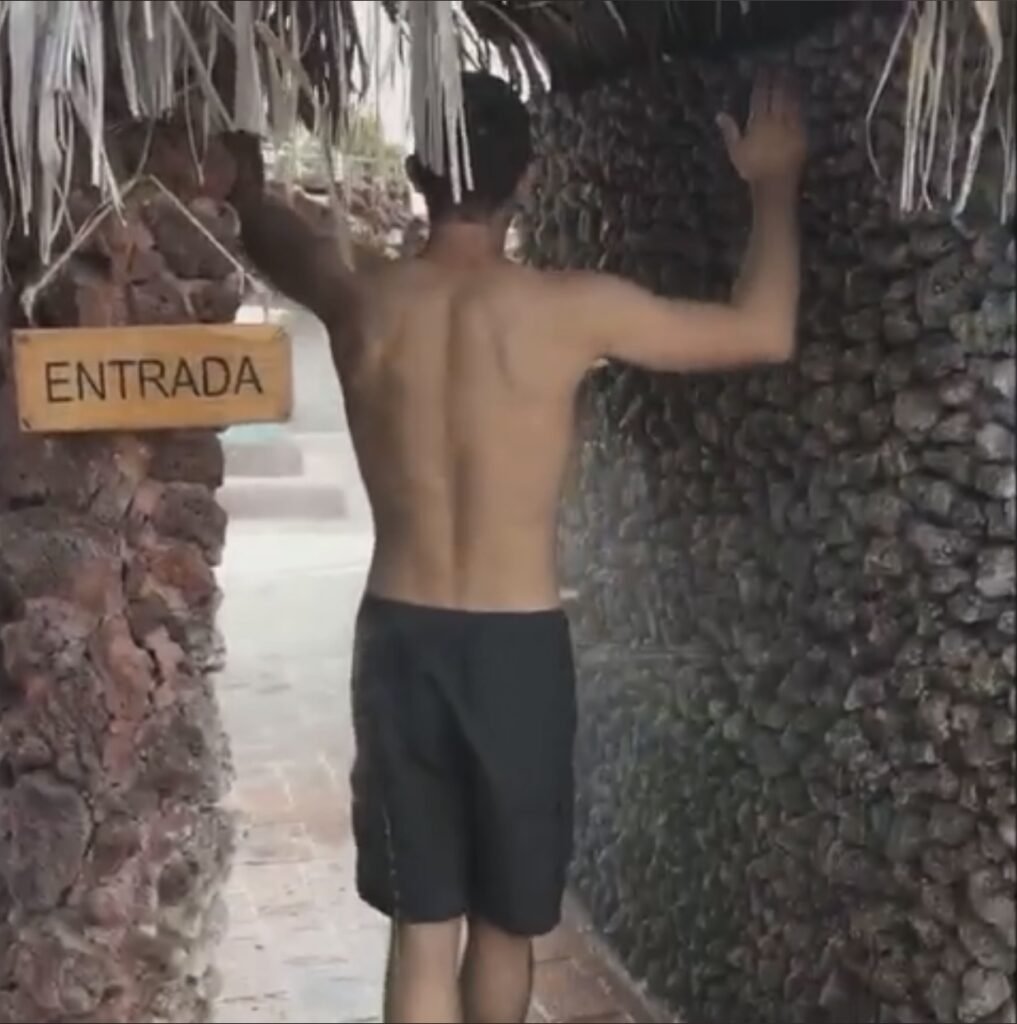
Fortunately…after a quick walk through the human car wash…
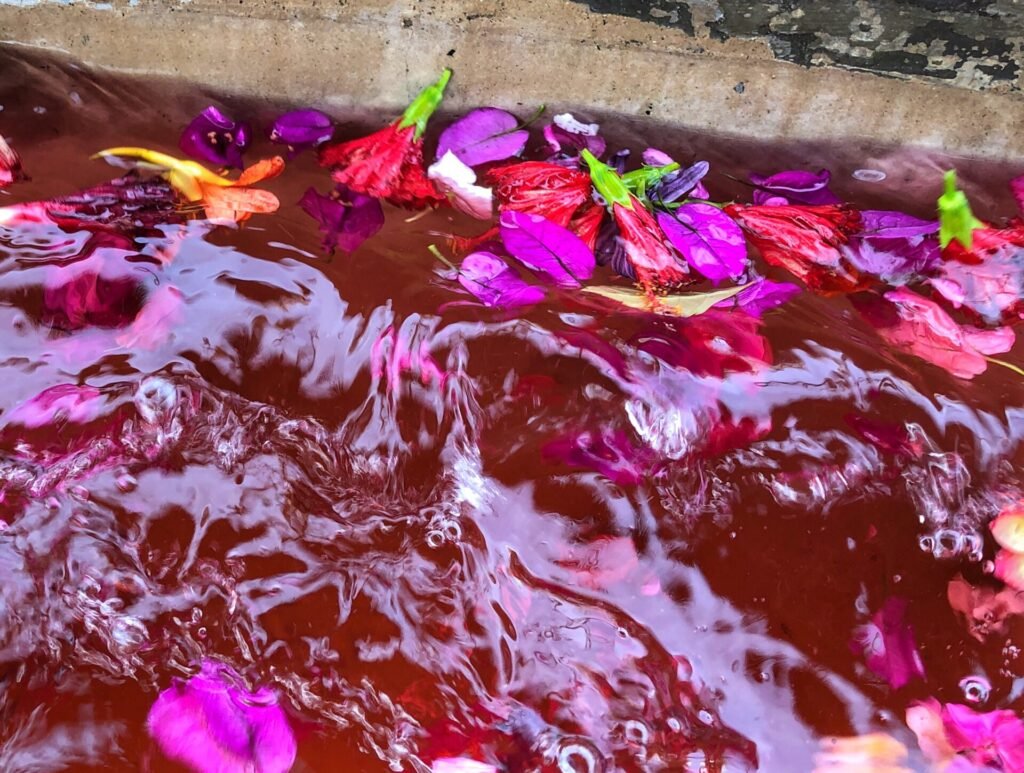
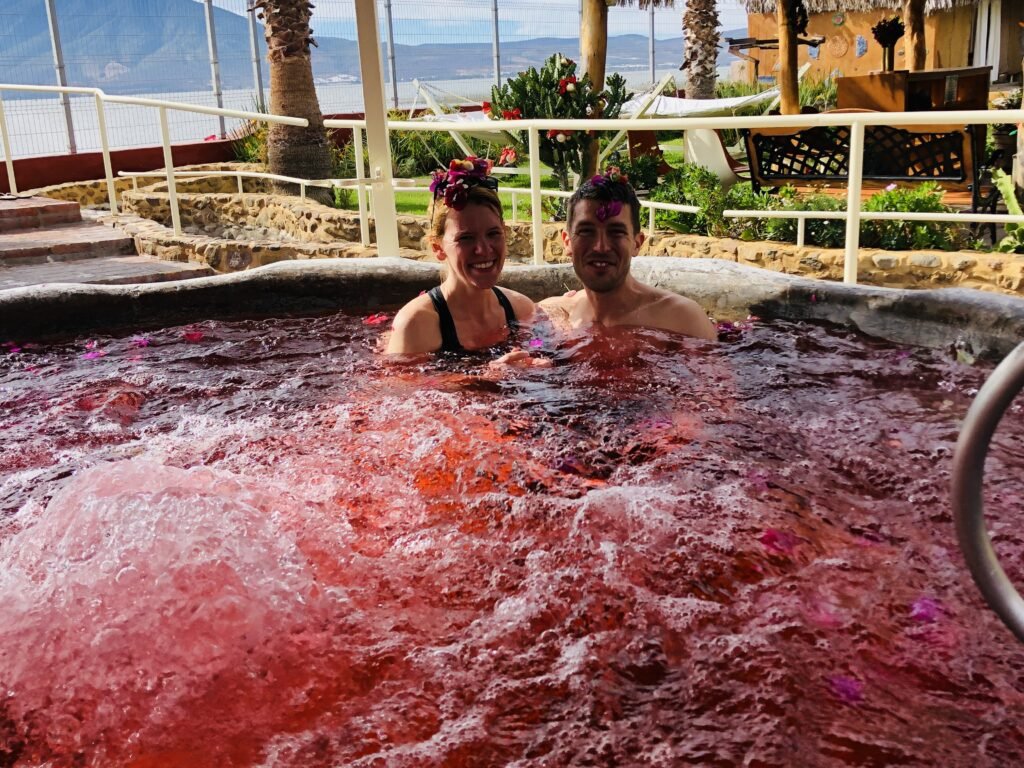
…we got to counteract the smell by delving into a tub of fragrant and vibrant Mexican flowers for our floral bath, which was appropriately bright pink from the natural dye of the flowers. Greg especially enjoyed feeling like Cleopatra! The floral bath is recommended for treatment of arthritis, emotional blocks, fatigue, colitis, irritability, fear and depression.
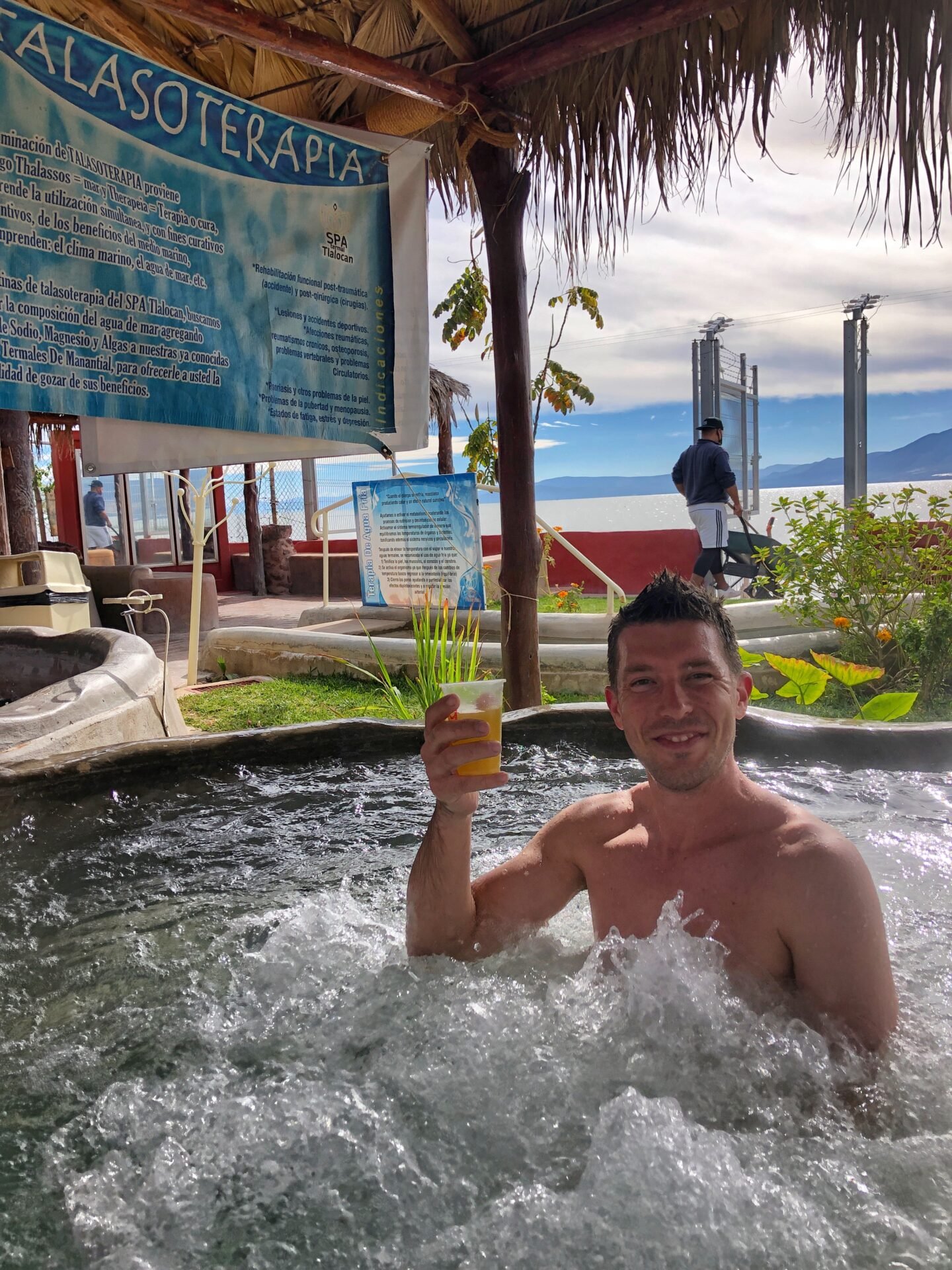
Next came the salt and seaweed bath, where the spa sought to imitate the composition of seawater by adding sodium, magnesium and algae seals to the thermal spring water. It provides healing properties such as helping psoriasis and other skin problems, problems of puberty and menopause and states of fatigue, stress and depression. Oh, and another very nice touch was, the attendants gave us a fresh drink at each pool which included delicious hot teas made from hibiscus and maracuya (passion fruit.)
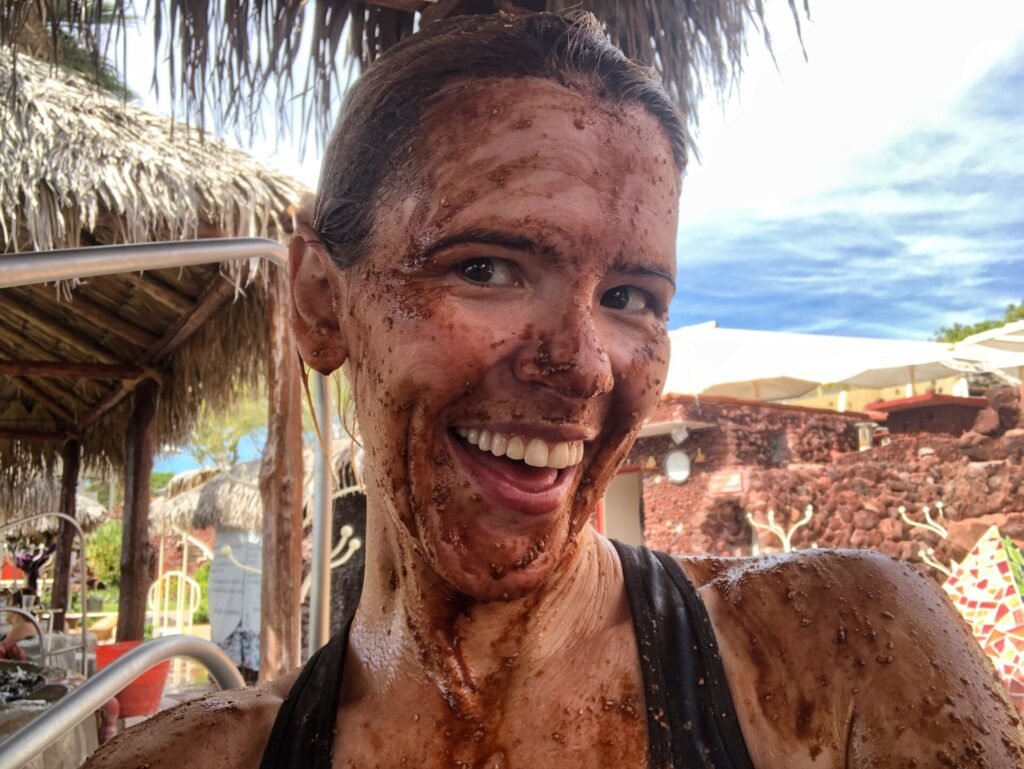
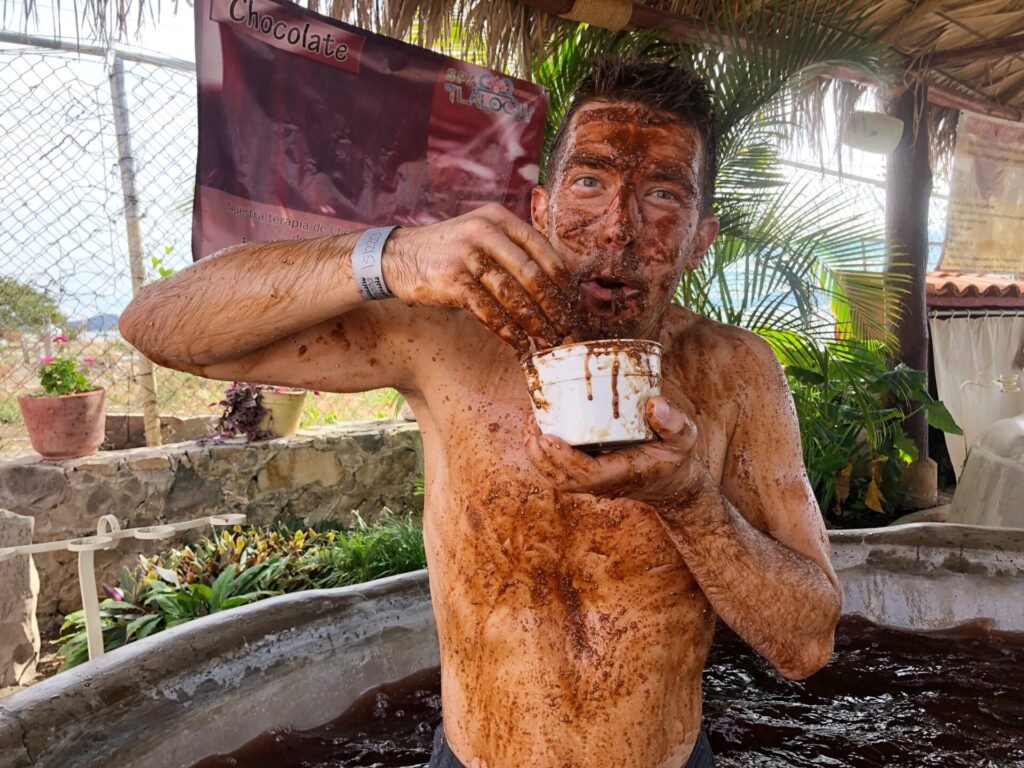

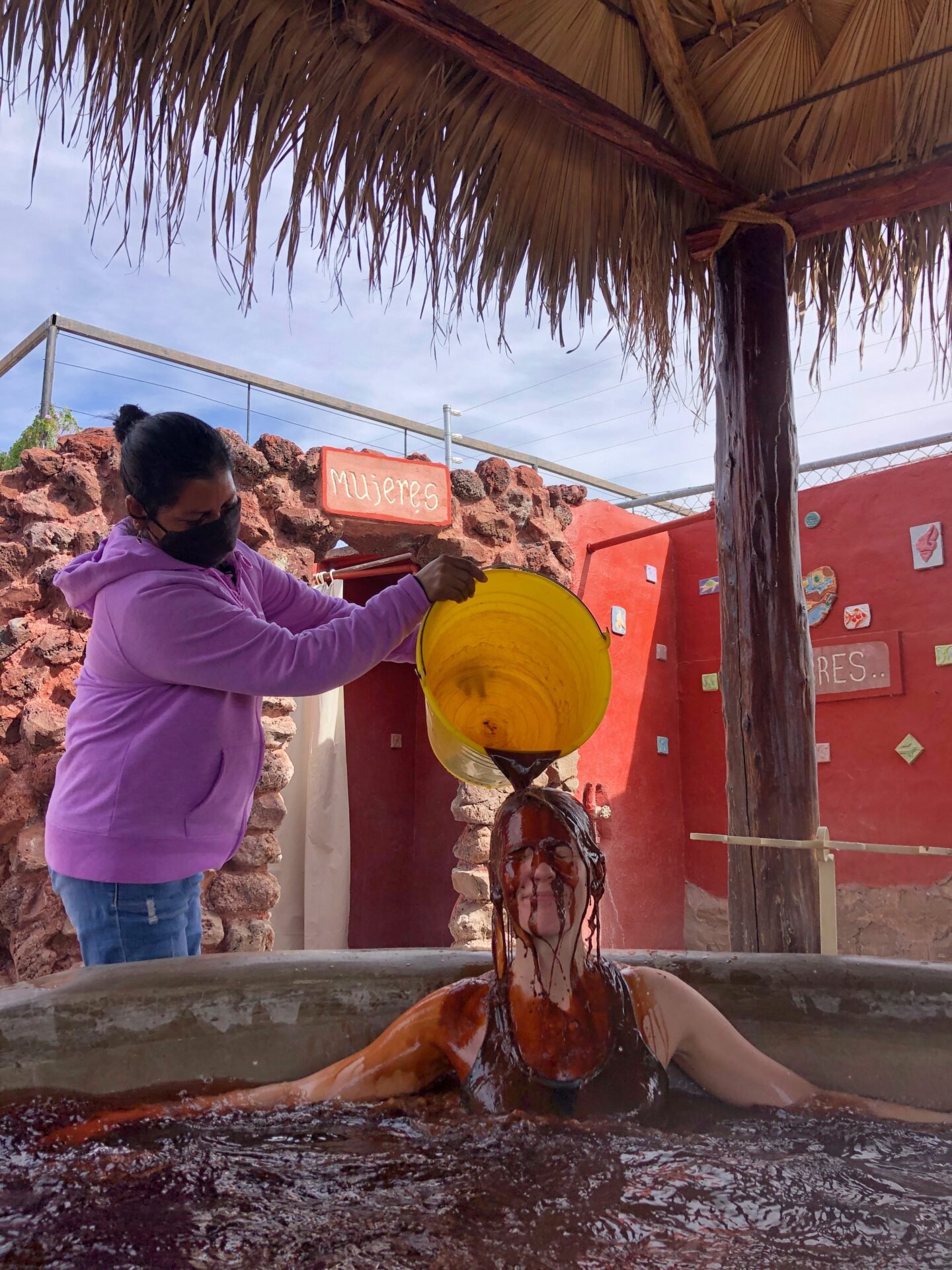
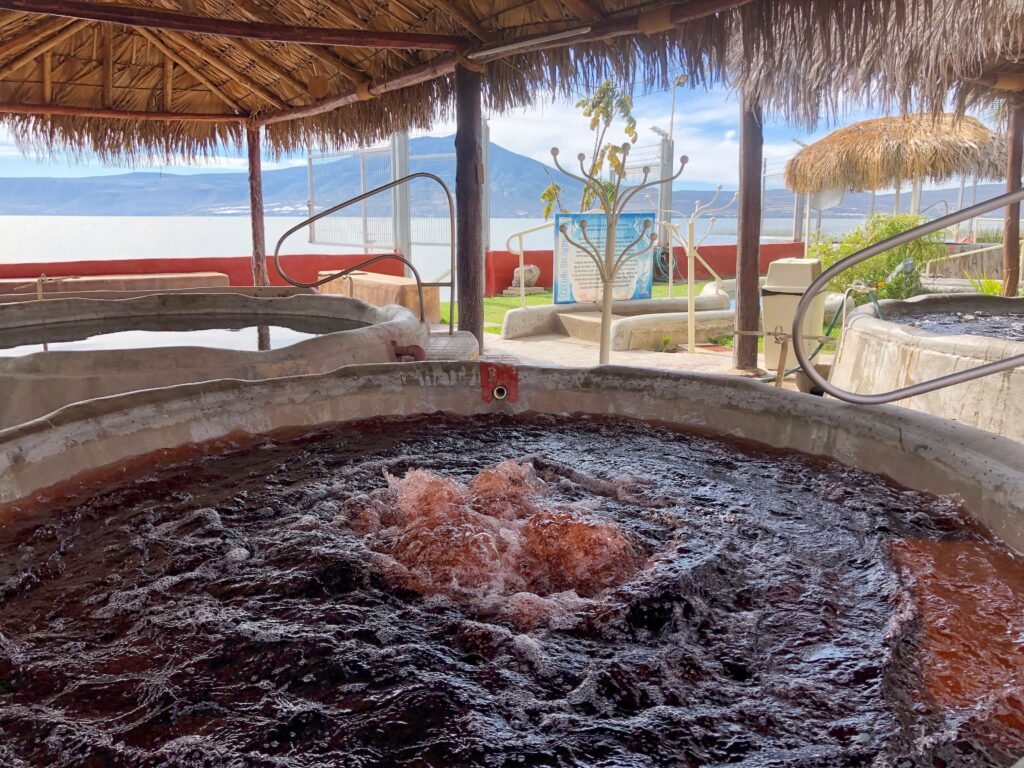
After a romp in the ocean, we plunged into every woman’s wildest, most slippery and most sensual fantasy. Yes, a pool that perfumed the air around it like a Godiva factory, and felt like you were a chocolate chip melting inside the cookie dough’s orifices in a warm oven.
Did I say every woman’s fantasy? Ok. Ok. Greg too.
This was after they streamed a massive bucket of warm chocolate, which included oatmeal, over our heads.
We then proceeded to smear our bodies in the cup of chocolate and oatmeal soup provided and of course, allowed more than a few samples of the decadent goodness to surpass our lips. Dios Mio!
So, we all know this TASTES and SMELLS good, but as we simmered within our chocolate high, we also wondered, what else exactly is this good for? Turns out, chocolate is great for toning your skin leaving it soft and fragrant (duh), it stimulates the elimination of toxins, creates cellular oxygenation and improves blood circulation. Its aroma helps in the production of endorphins, which increases good mood, improves mood and reduces stress. Ah yes. Any menstruating woman, or an intelligent man who’s with her, could tell you that one. Happy wife=happy life! And they say women are hard to understand….?

It was time to perk up, so next they tossed us into a mug of hot and piping coffee. Coffee grounds, as it turns out, are excellent at exfoliating the skin. Also, coffee has detoxifying and diuretic properties, stimulates circulation, is excellent for cellulite/varicose veins, and has large amount of antioxidants that can slow down the aging process. Whoohoo!! We knew we needed to DRINK coffee every morning, but now we’re considering installing a coffee shower instead!

We delightfully capped off our tub time by slathering our bodies from head to toe with healing mud. These are obviously a little more popular in the spa and natural world. Benefits include skin rehydration, and allergy curing. Some also claim weight loss is among these benefits. ?
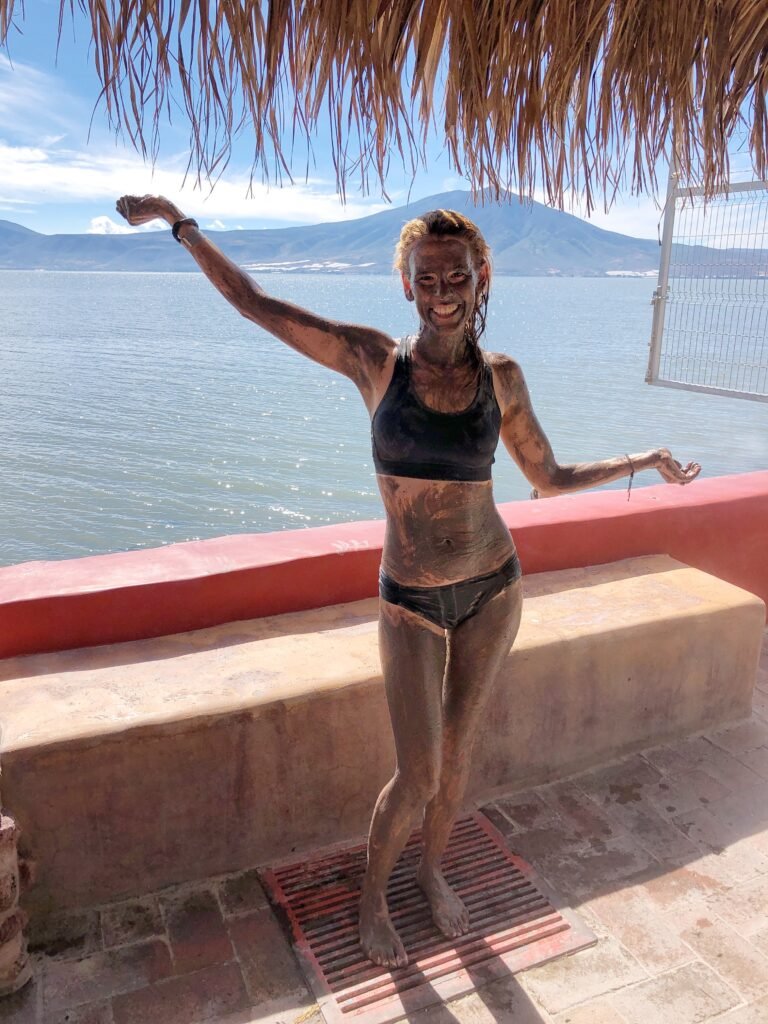
Mandy models her new look against the beautiful Lake Chapala…

…while Greg models his back wrinkles. It’s interesting to let mud dry on you because you get to experience what certain parts of your body might look when you’re older, especially if you squeeze your skin and bend your body in just the right way. It also kinda looks like elephant skin, so there’s that. Eventually it gets very dry, crunchy and a bit itchy, which is when it’s time to wash it all off and reveal the glowing and somewhat rubbery skin it unveils.
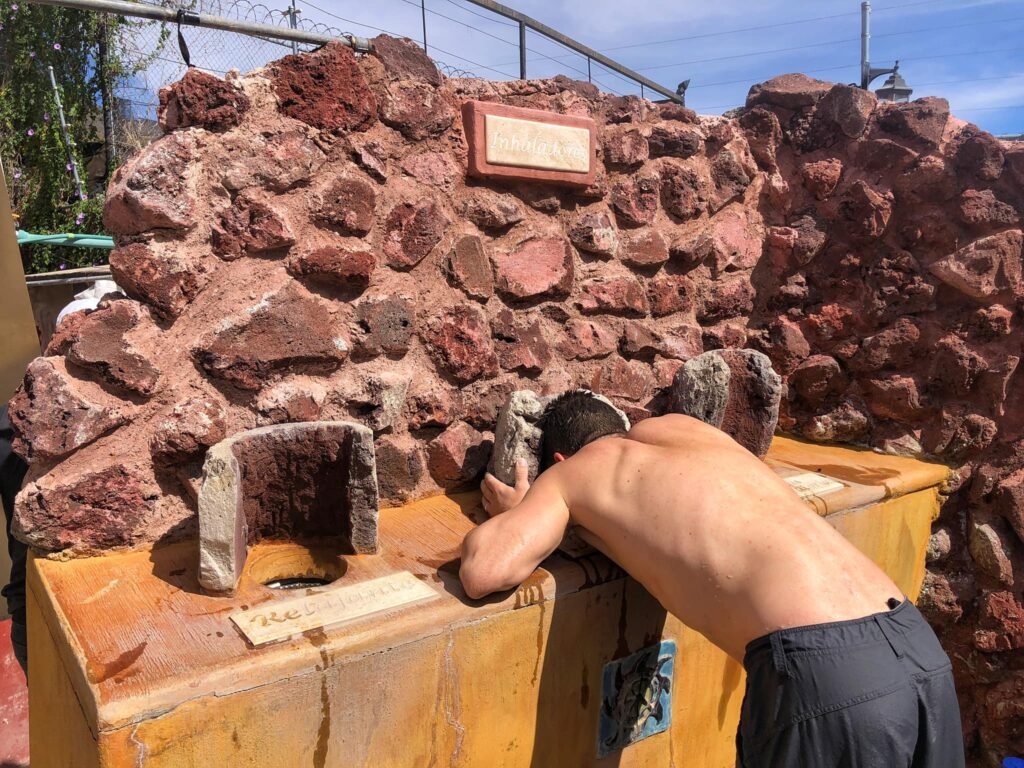
Two hours later, we were done with tub time so we got to take cleansing showers before sticking our faces in the “Inhaladores” or…smell holes.

Each one featured a warm blowing vent with some aromatics like rosemary or eucalyptus inside. Our noses appreciated the stimulation.
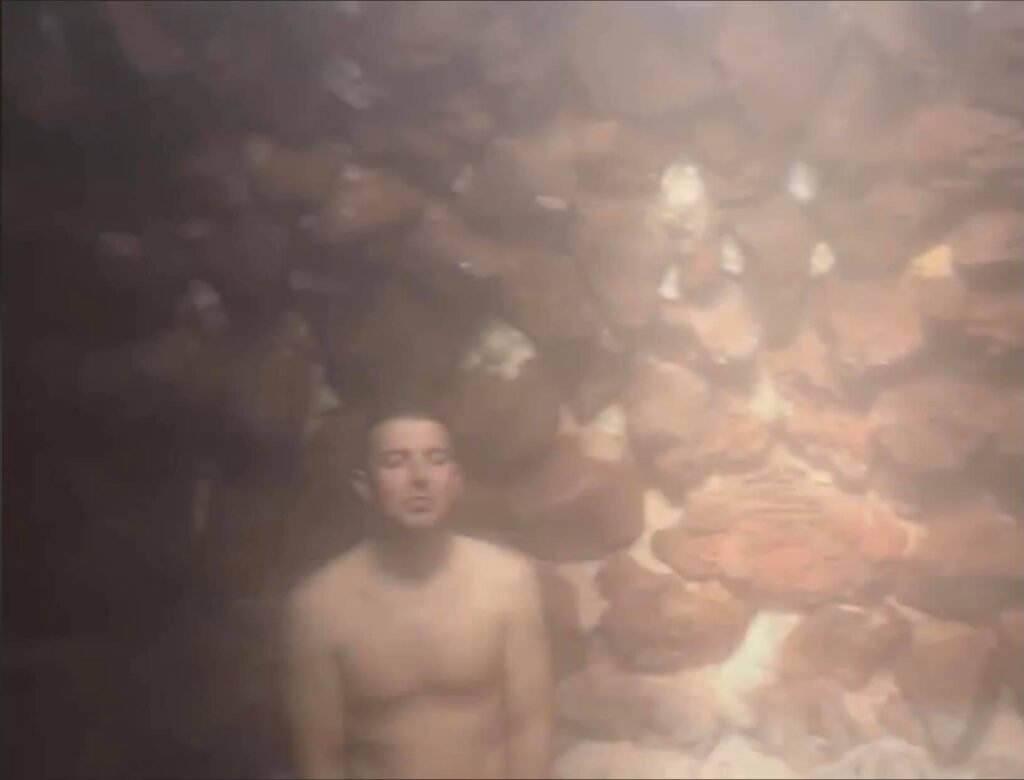
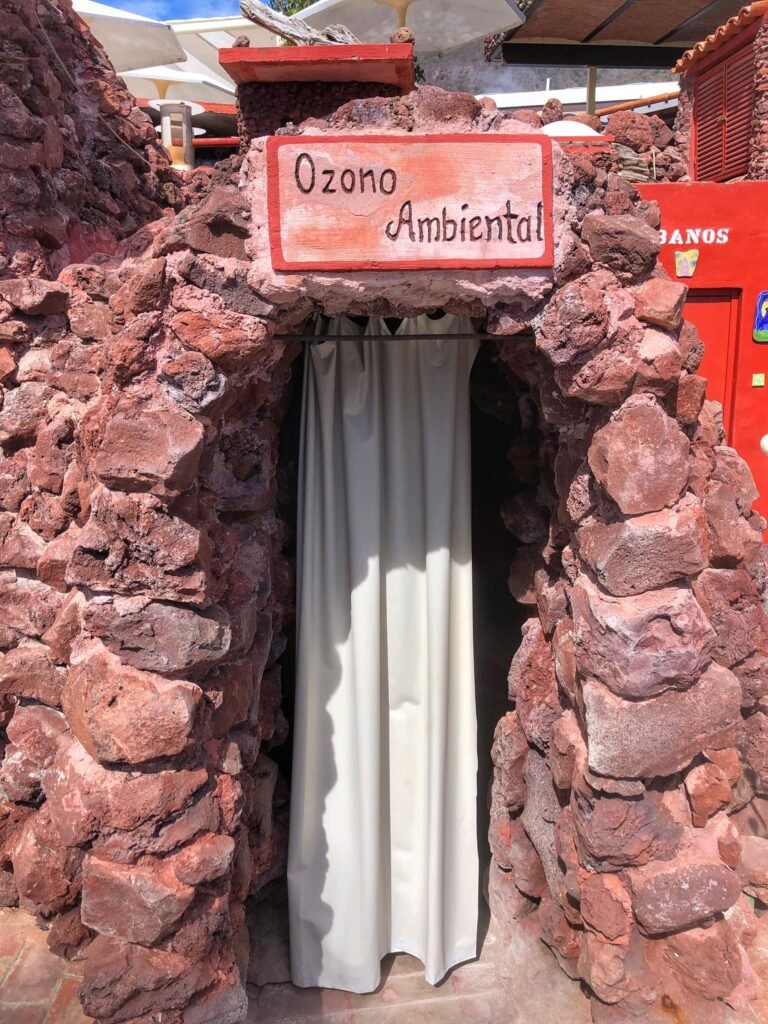
Then, a steam room to collect our thoughts, followed by an ambient ozone room.

Which we think included added oxygen by the pipe in the floor (but never confirmed.)

We finished with a wade down the cooling lazy river…and a “foot massage” down the reflexology walk.

After our time in the spa, we checked out the water park complex, and basked a little more in the hot waters and gorgeous December weather. Definitely a very fun day, and a complete steal of $25/person. Oh yes, we had adapted quite well to life in Mexico.
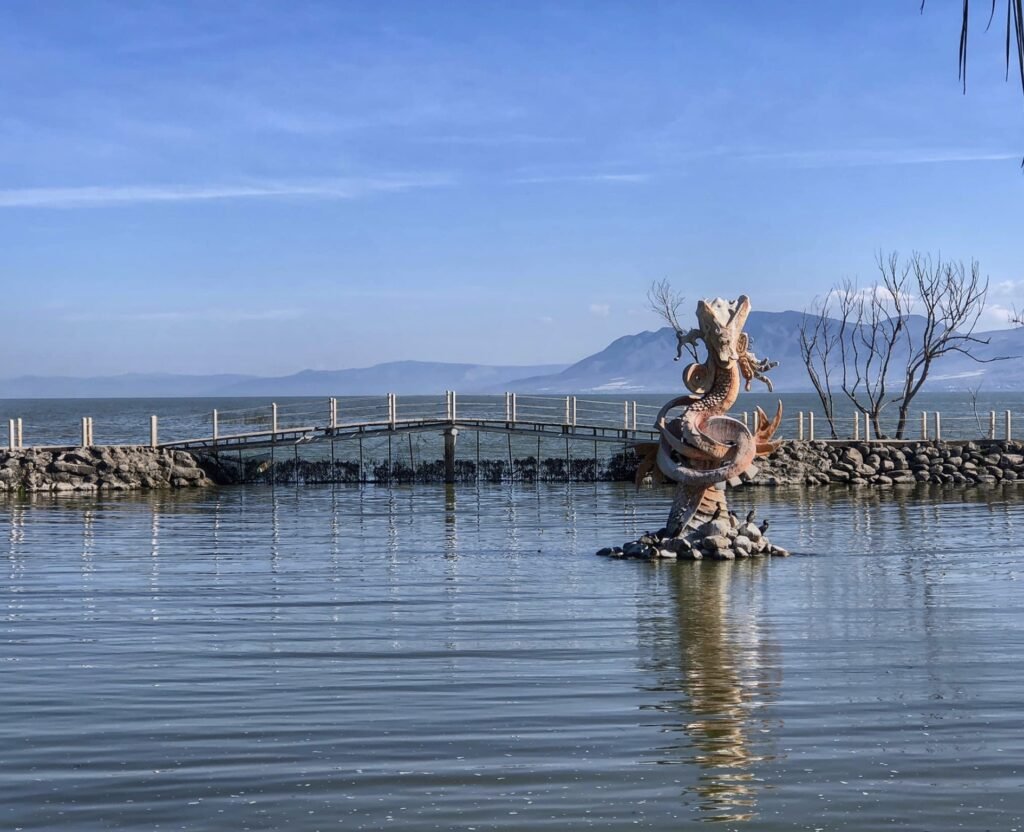
Jocotopec
On a different day, we hopped the local bus to the fishing village of Jocotopec, which took about 40 minutes from Riberas and cost 28 pesos for two people ($1.30). Jocotopec was settled by the Nahua Indians in 1361. At that time, they built a temple to their god, Iztlacateotl, and practiced human sacrifice. Today this pueblo at the far west end of Lake Chapala seemed a little less daunting in the human sacrifice department.
In fact, it packed big punch for such a small town, offering several enticing restaurants and shops, a fun-packed malecon, including an amusement park, and immaculate picnic areas, and overall, an authentic and less expat-y feel than Ajijic or Chapala. We could easily see ourselves in a community like this.
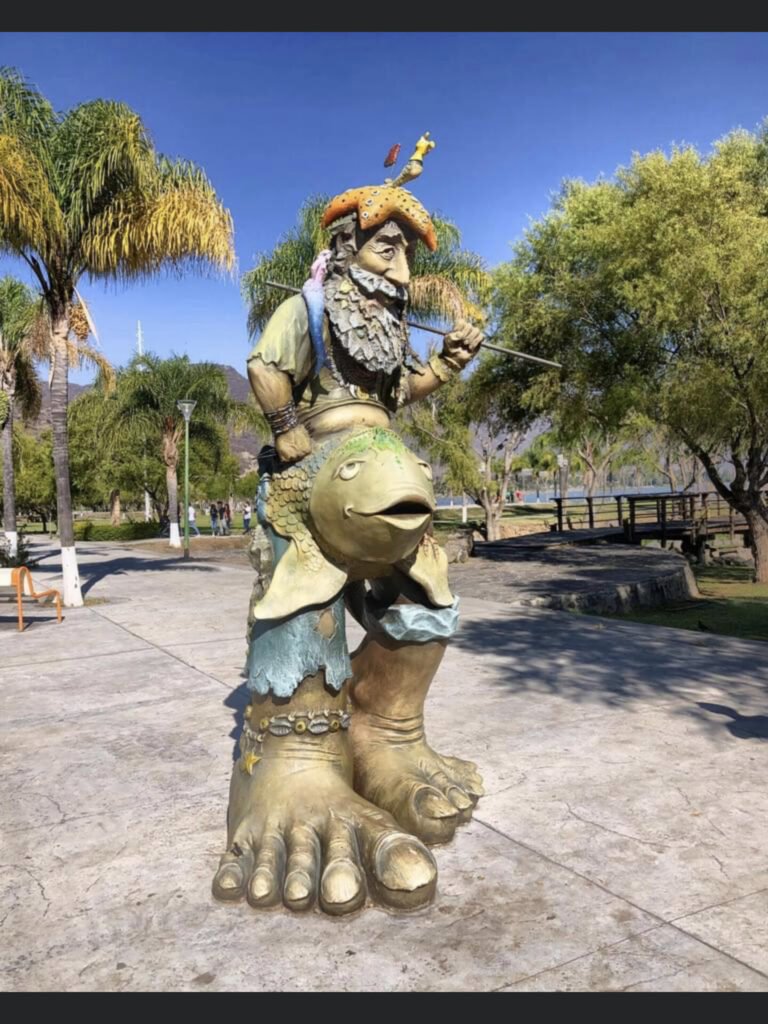
The malecon featured fun-loving hobbit-y type structures like this one.
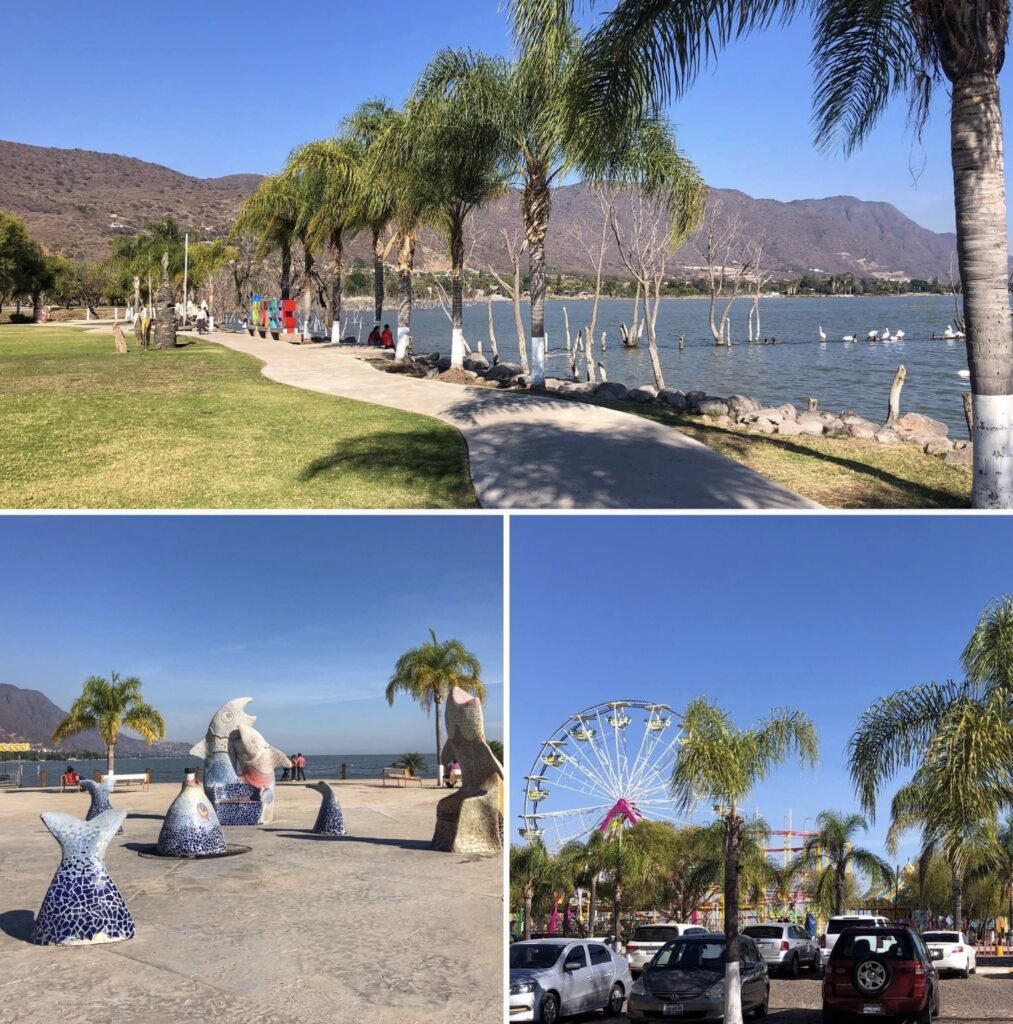
And, some more fun art… These fish even have built-in little chairs. We liked this town because it offered a unique perspective. Because you’re at the end of the lake you get to see the mountains on both sides of you.
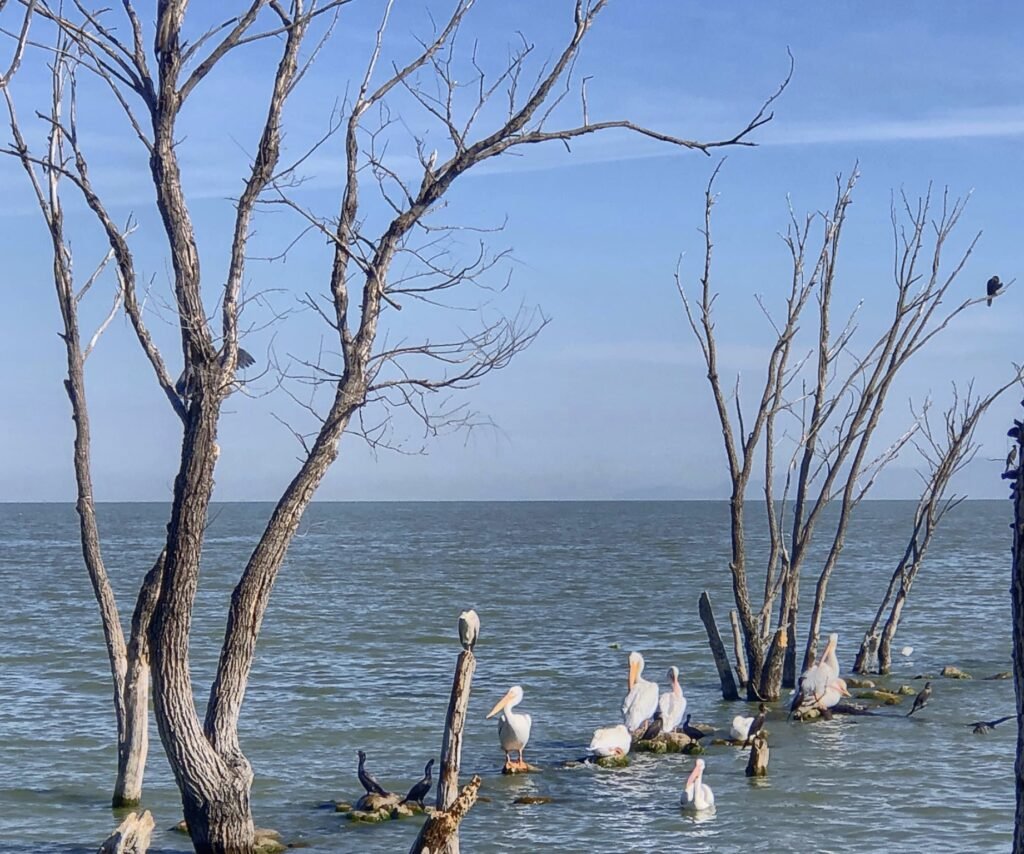
Pelicans. So so many pelicans on Lake Chapala.

The main plaza and definitive welcome sign.
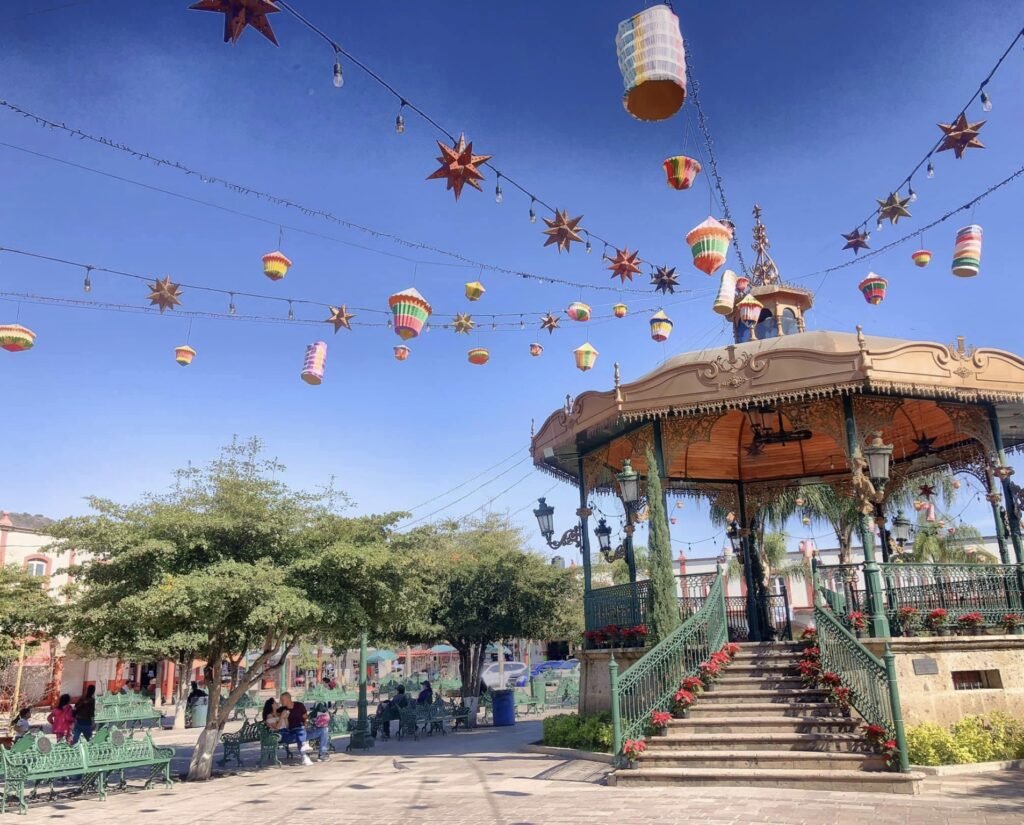
We are loving seeing the Christmas decorations.
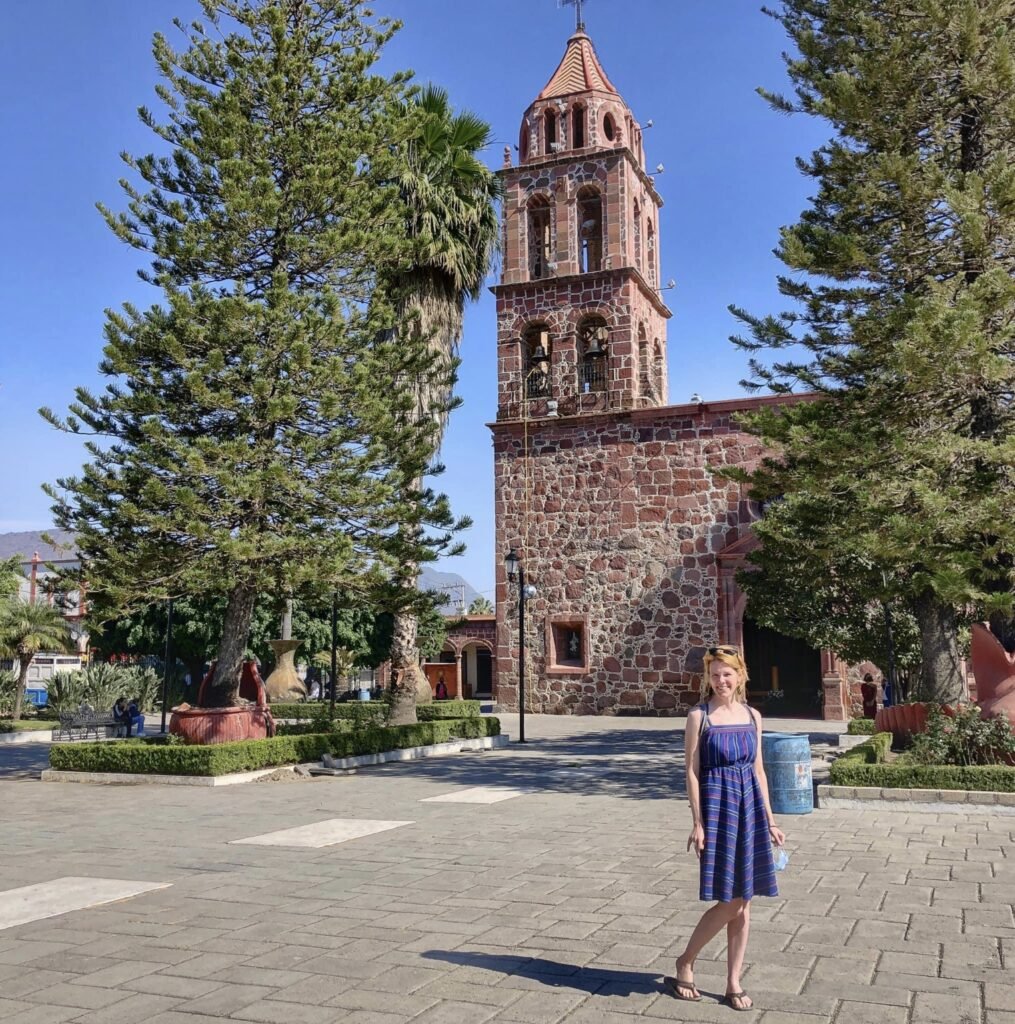
Parroquia Del Señor del Monte is the centerpiece of Jocotopec. We really appreciated the unique red stone work on the exterior.
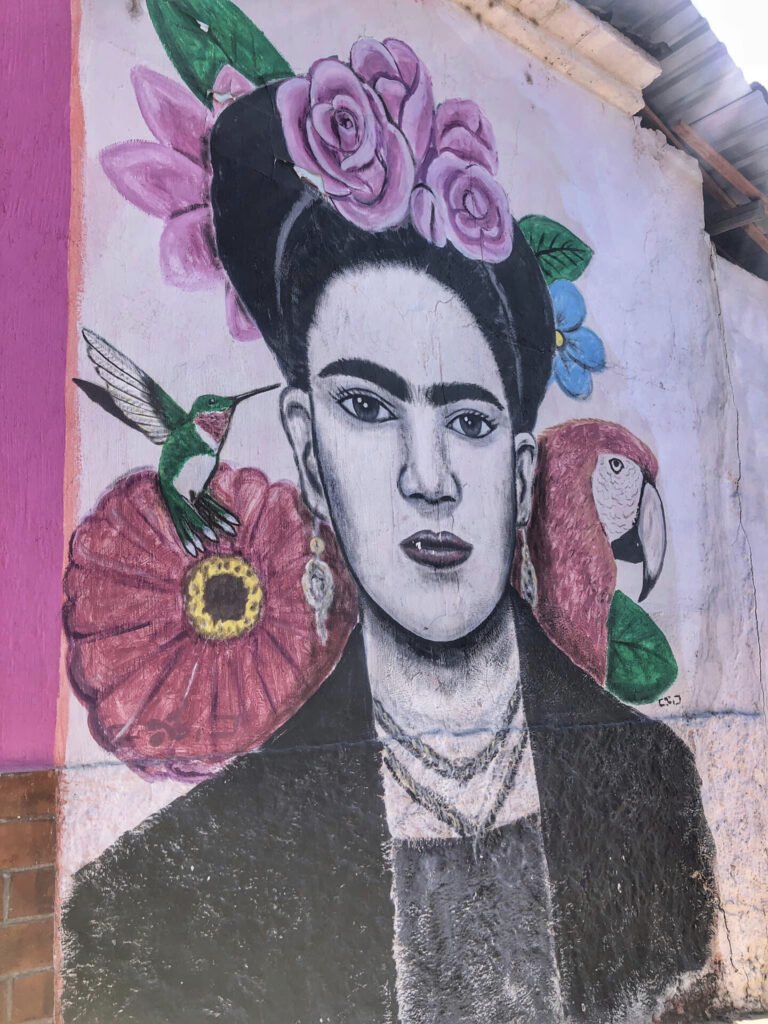
For lunch we settled on El Rincon de Frida. (Frida’s corner) There was a lovely mural of Frida, who many know was a 20th century Mexican painter known for her many portraits, self- portraits, and works inspired by the nature and artifacts of Mexico. Oh, and her token unibrow.

This restaurant was a complete gem tucked a couple blocks off the main square. It had lots of vegetarian options, including delicious sandwiches and salads (the bacon loaded one clearly was Greg’s?) They also had a good selection of Frida souvenirs. You know, if you’re in the market…
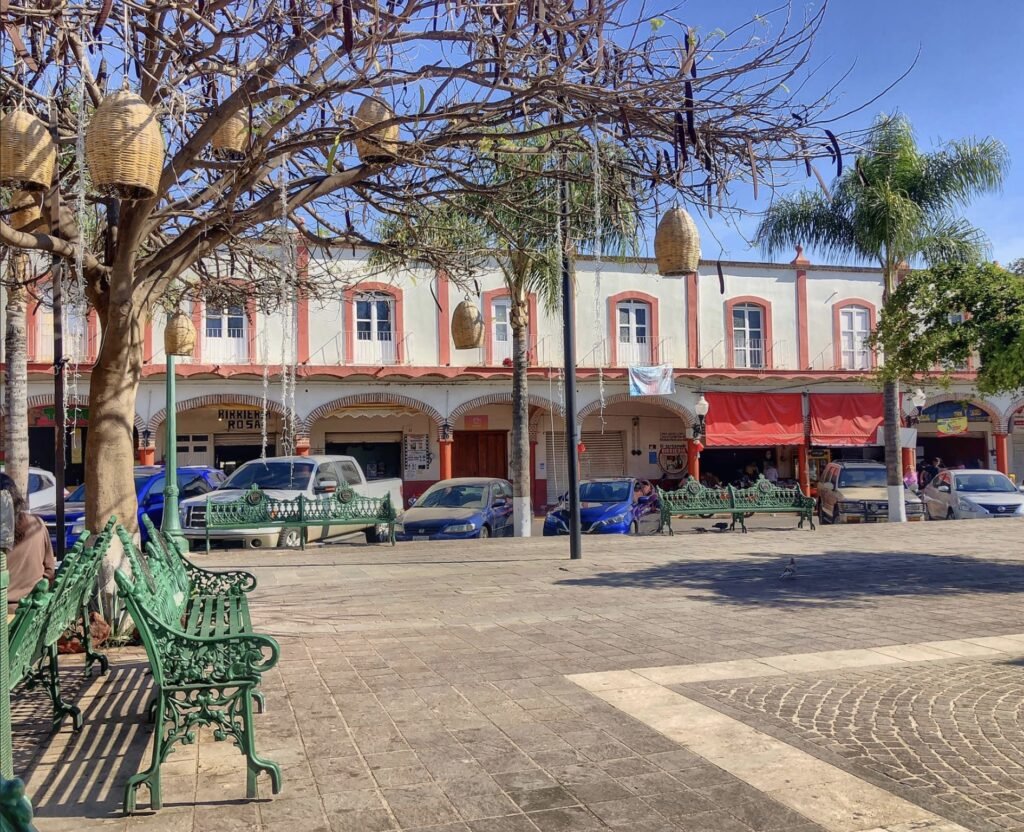
The arcade-style venues wrap the main plaza, including lots of birria options. Greg had yet to try this local meat stew, but certainly planned to.
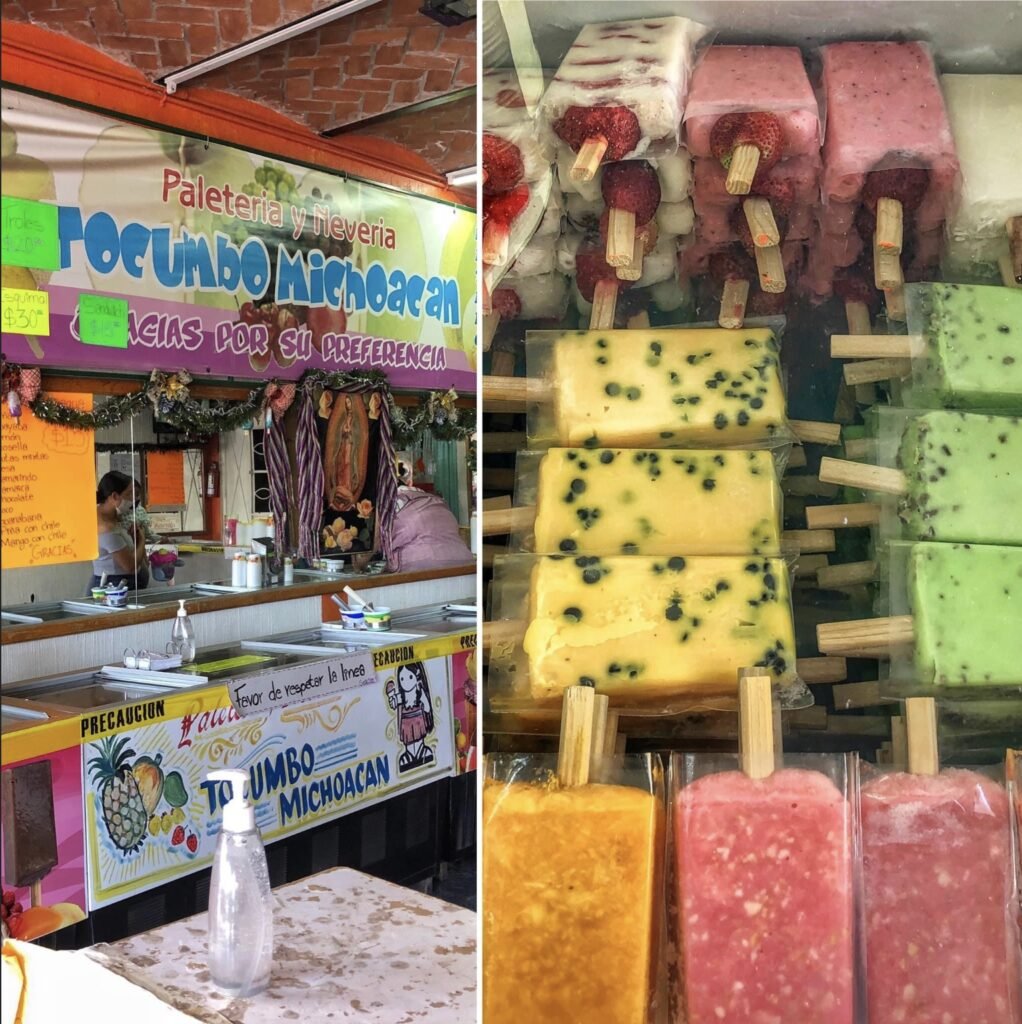
At this time, we instead settled for nieve (snow) which evidently equals helado (ice cream) in this part of Mexico. Nieve and paleterias are becoming nearly a daily habit for us. I mean, we’re on vacation…right? Okay, sooner or later that mentality might catch up to us? But seriously, so many options of both, and the paletas (popsicles) are all are oozing with real fruits. Plus it costs us about $1.50 for two. So far, favorite flavors include coconut, cappuccino and strawberry/vanilla. Hey, at least we’re doing tons of walking!
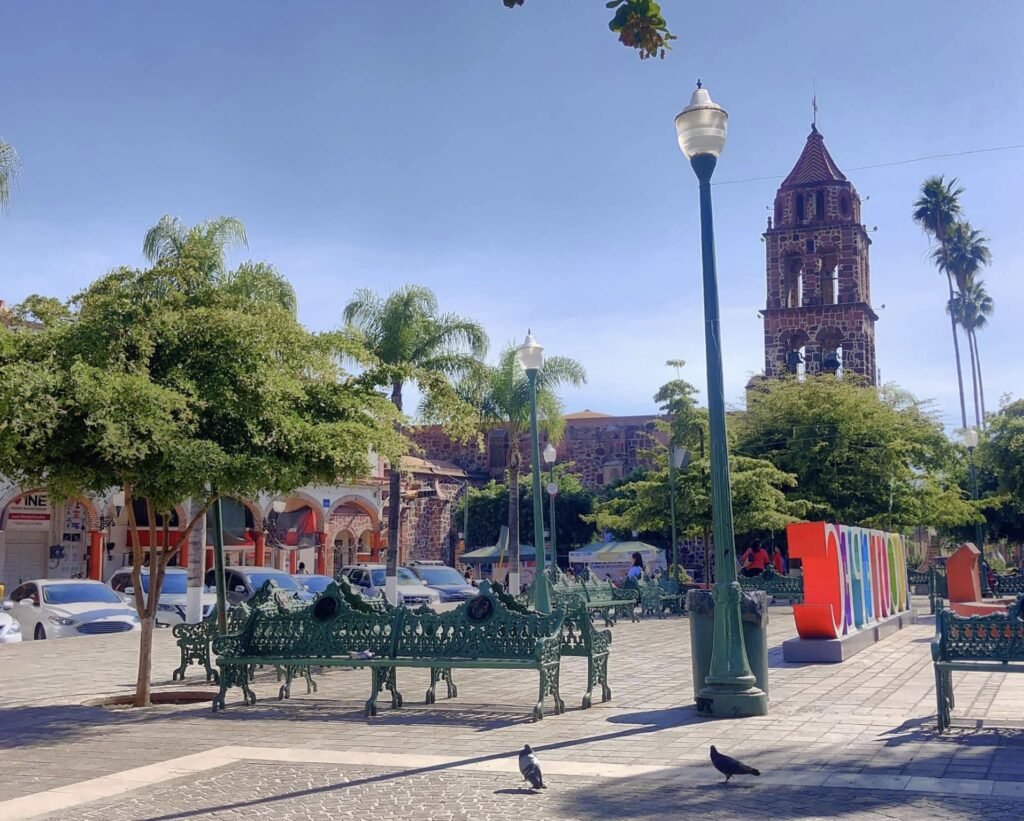
Our dessert-stuffing view of the Christmas decorations on the plaza. We could have sat there for an hour. In fact, we nearly did! There were several vendors selling various things, but in Mexico (at least when you’re out of the touristy traps), they are never pushy or annoying. Just smiling and kind, like most people we’ve encountered.
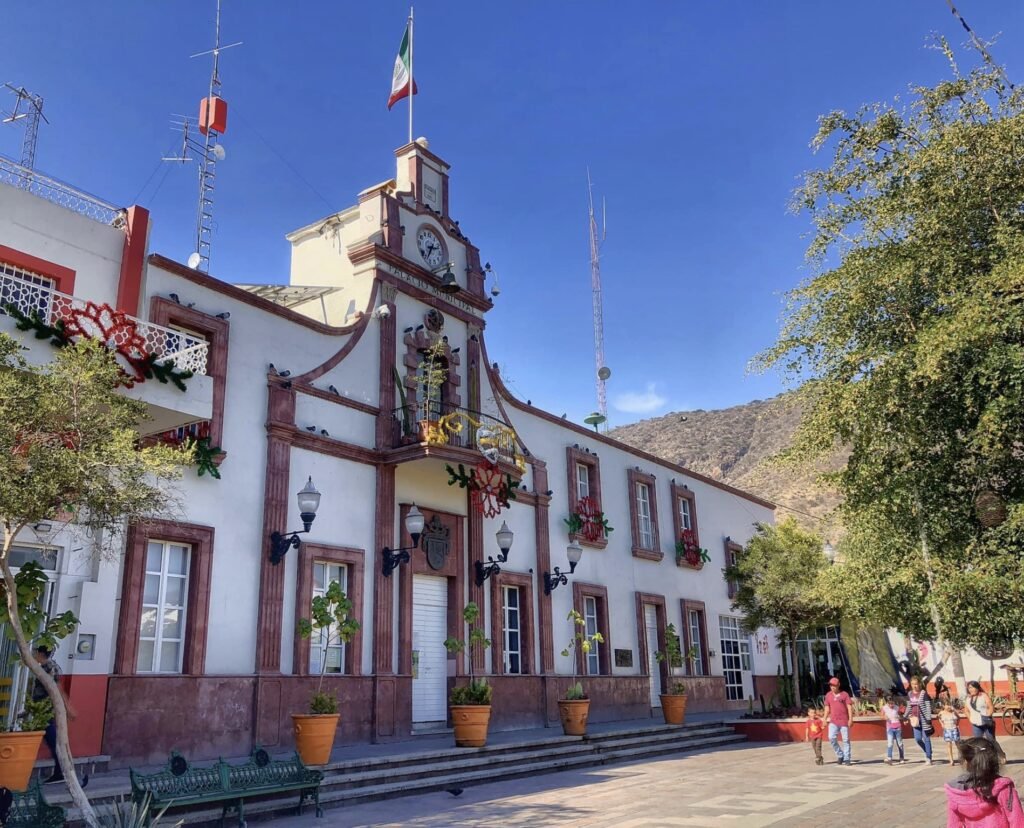
The town hall. Jocotopec has 37,000 people.
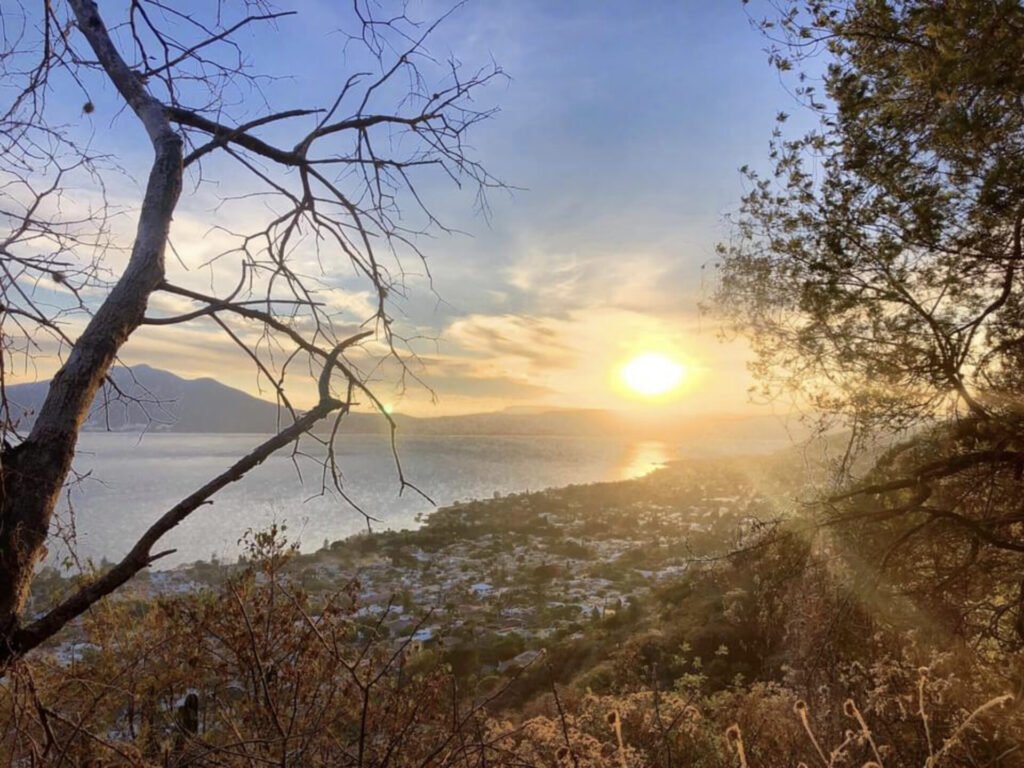
Hiking in Lake Chapala
Another great thing about Lake Chapala is we were able to hit the trail again. Around Ajijic there are an abundance of marked trails and walking paths. We found out there is even an expat/local hiking group which meets every Saturday mornings. Not sure if they’re still meeting.
Heading out on our own, we chose to start from Ajijic doing a loop by taking the road up from Dona’s Donuts and walking down by the Church of the Three Crosses. As in any location, we were guided by our incredibly accurate Mapy.cz app into the Sierra de San Juan Cosala mountains. Most of the trails are quite steep, and we gained 1100 feet (335 meters) in elevation in about 45 minutes.
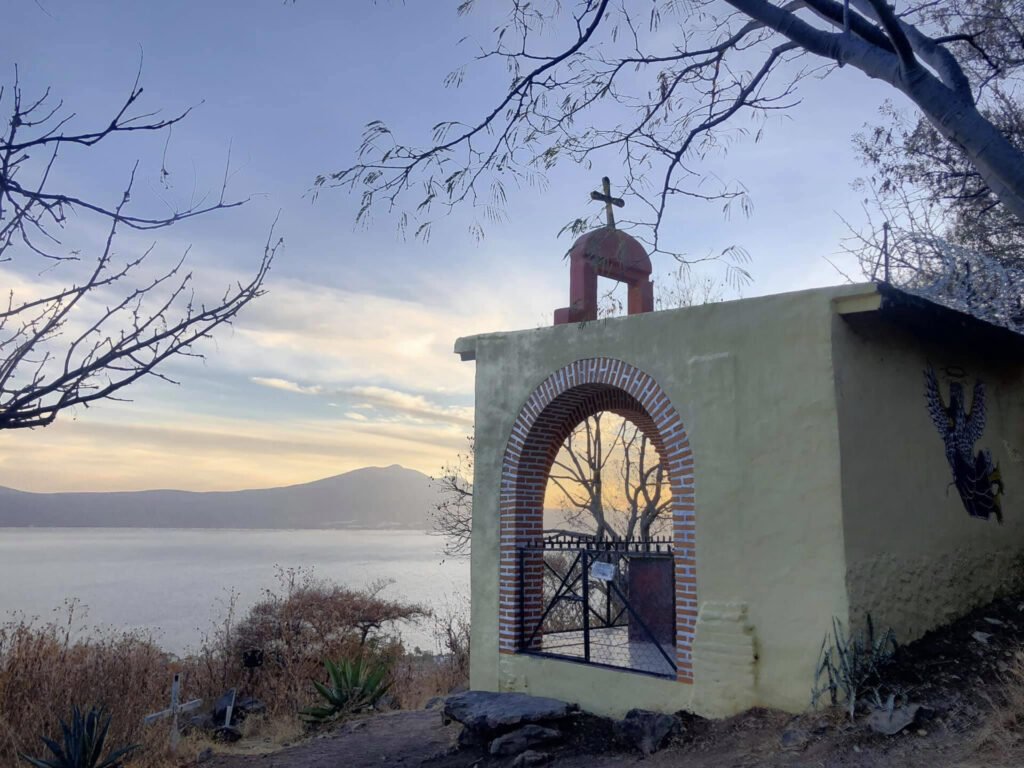
The Church of crosses sits about halfway up the mountain and offers spectacular views of the lake.
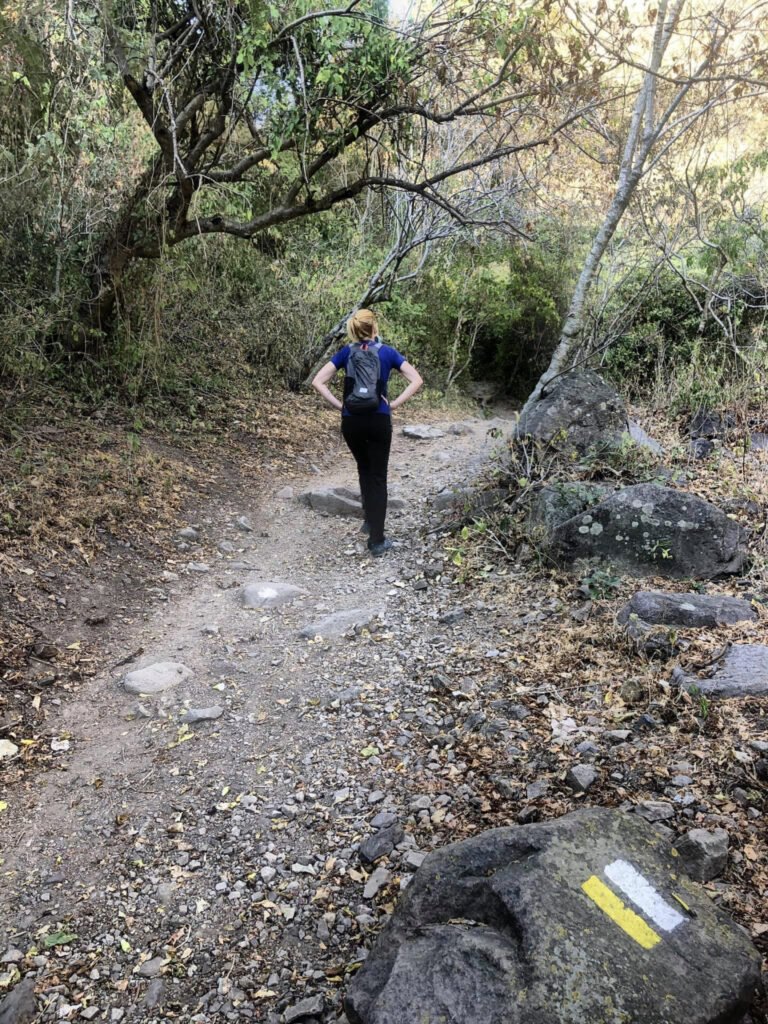
The trail is conveniently been marked with yellow and white markers.
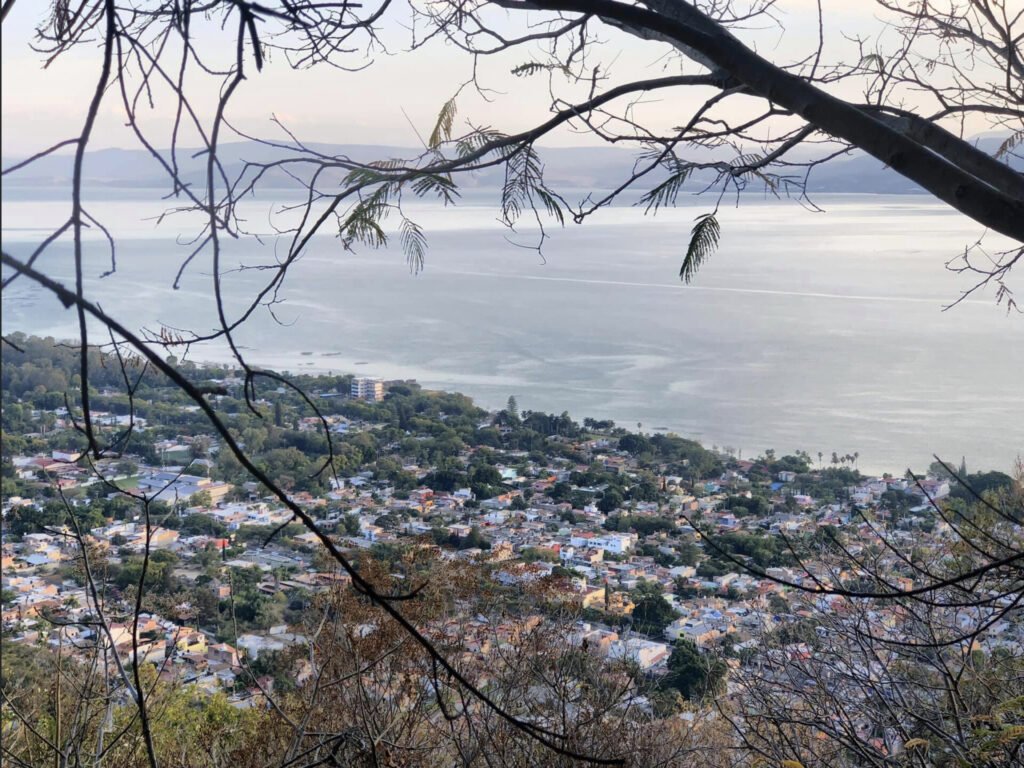
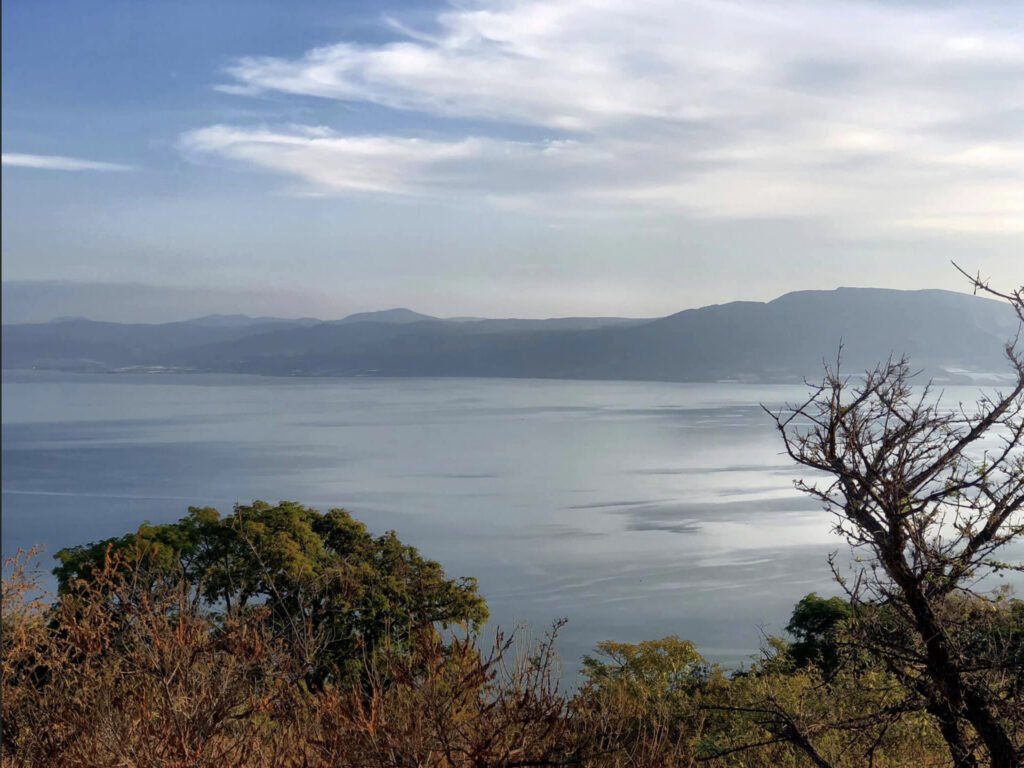
The hike offered sweeping views of Lake Chapala and was well worth a couple hours to explore.
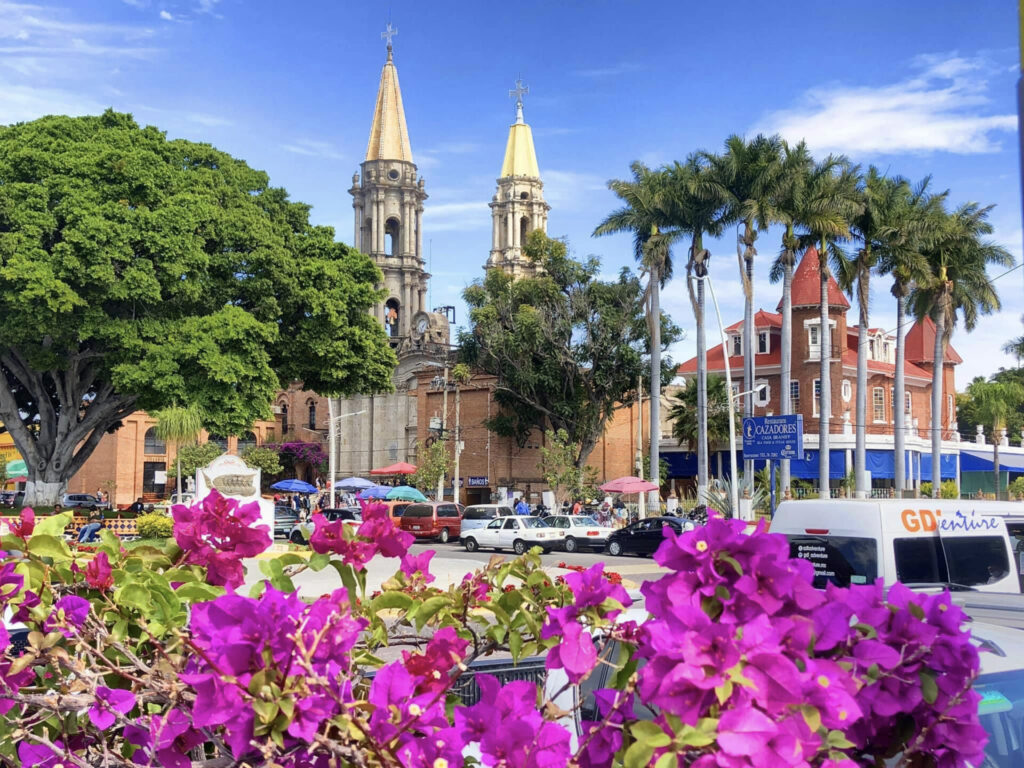
Chapala (the Town)
Chapala has been a hot spot for both international and domestic tourists since the ‘60’s. Before that, in the late 1940’s, American writer settled here to write “A Streetcar Named Desire.” The town of Chapala of course is named after the lake itself. We would argue it’s a little less charming and modern-feeling than the other villages we went to, but still is worth checking out for its street scene, views of the lake, and loads of shopping and restaurant options.The historic Parroquia de San Francisco Cathedral in the background is a welcome centerpiece of the town. It took us about 35 minutes to walk there from Riberas del Pilar.
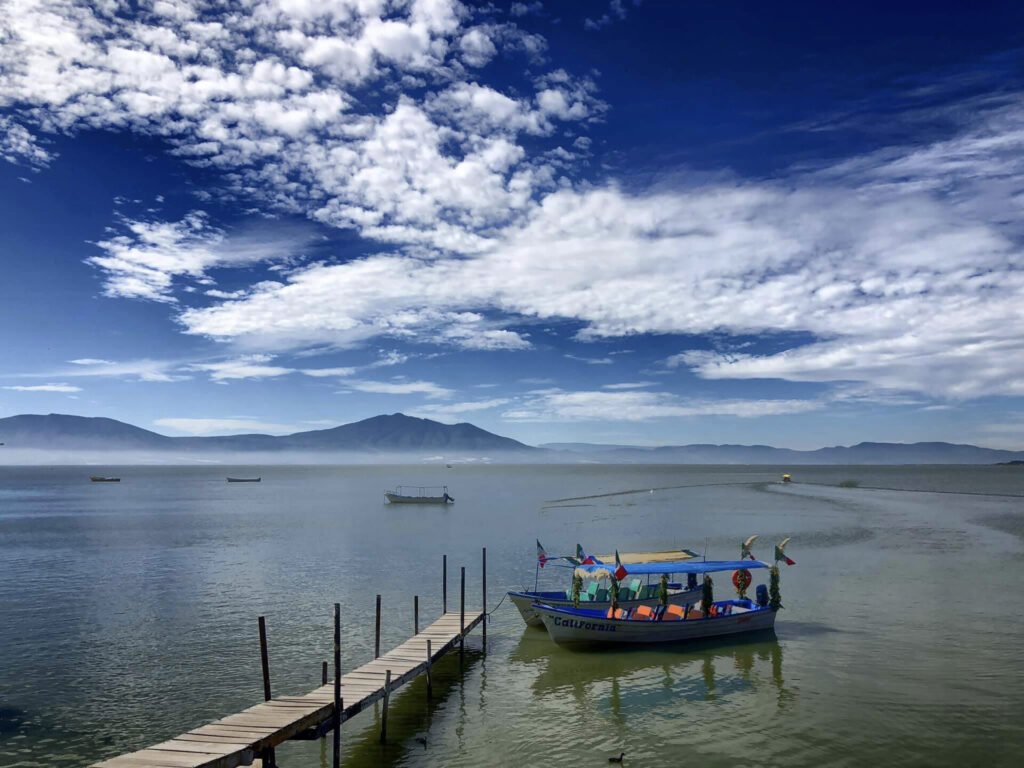
You can take day trips from Chapala to Mezcala Island, which is home to an old fort from the Mexican revolution. They were not running when we were there.
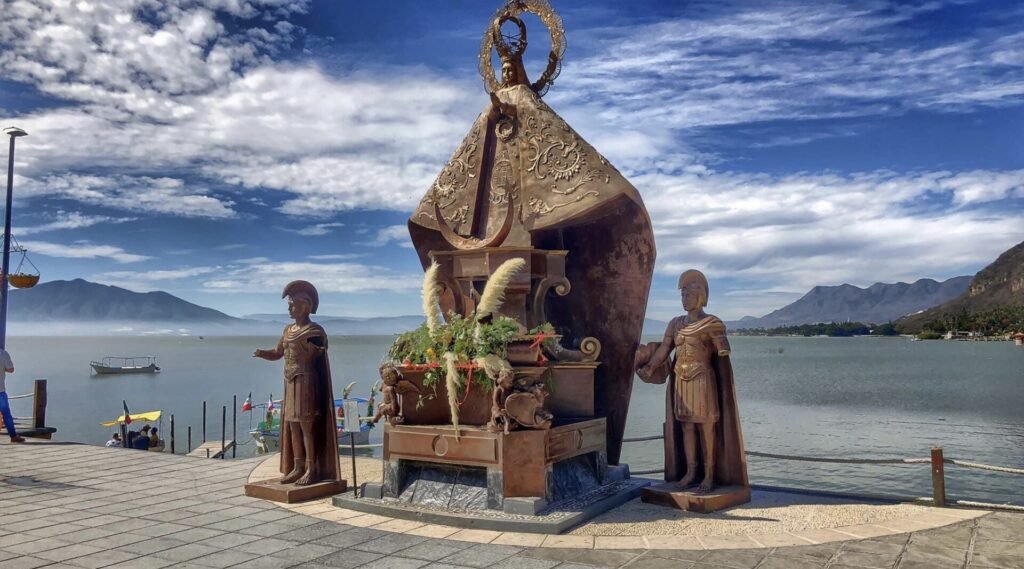
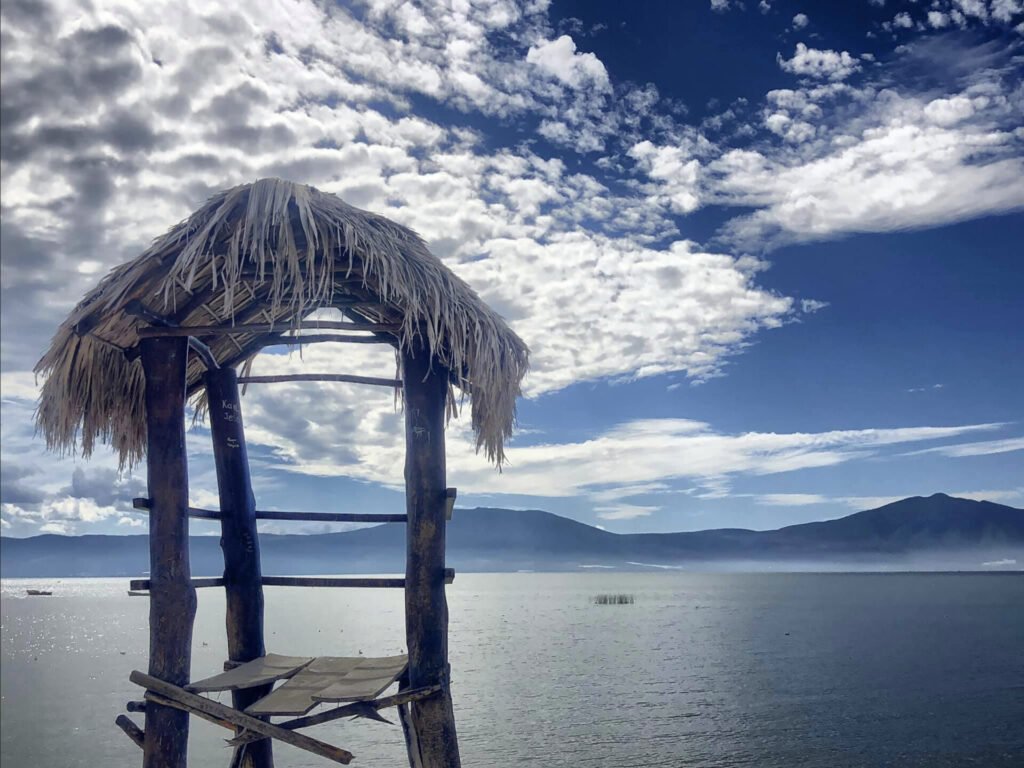
These guys must be guarding the lake. It needs it. Because it looks like this lifeguard stand (ha!) got abandoned.

The Chapala Christmas tree. Not quite Rockefeller but still a suitable attempt at a jumbo tree in a place where pines of this size are not exactly a dime a dozen.
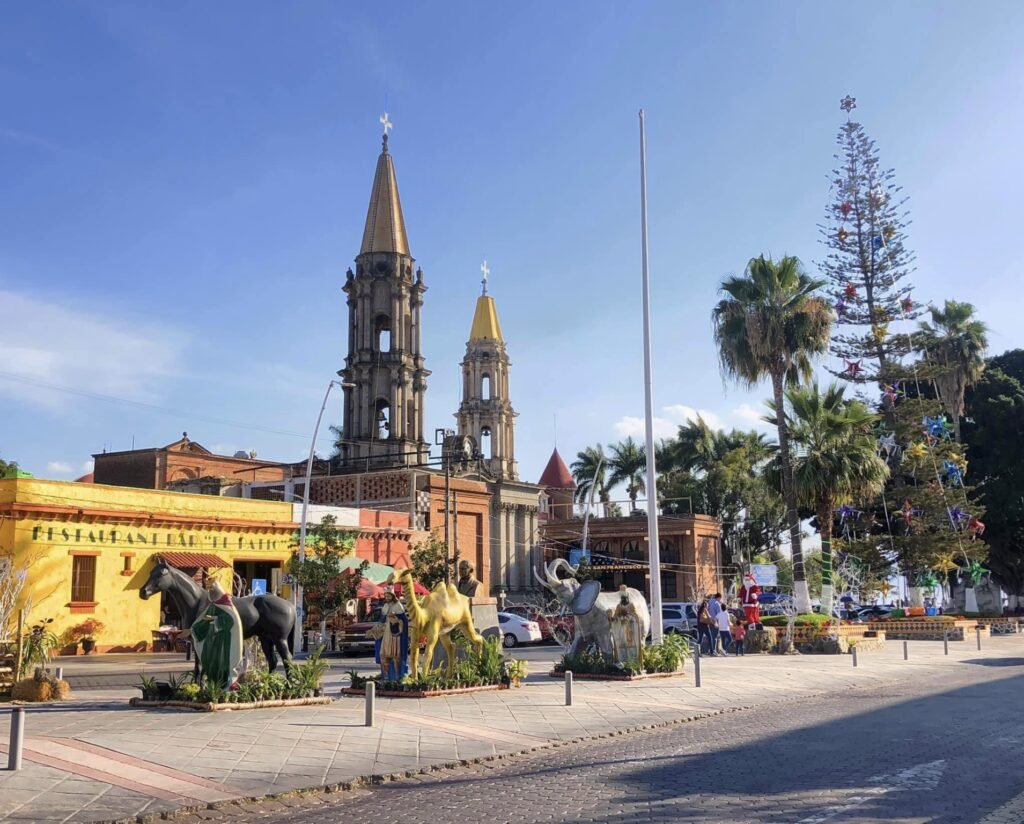
The obligatory wise men lead their animals to the nativity scene. And a Dancing Santa wiggles his hips in the background. We enjoyed sitting and watching the kid do the same.
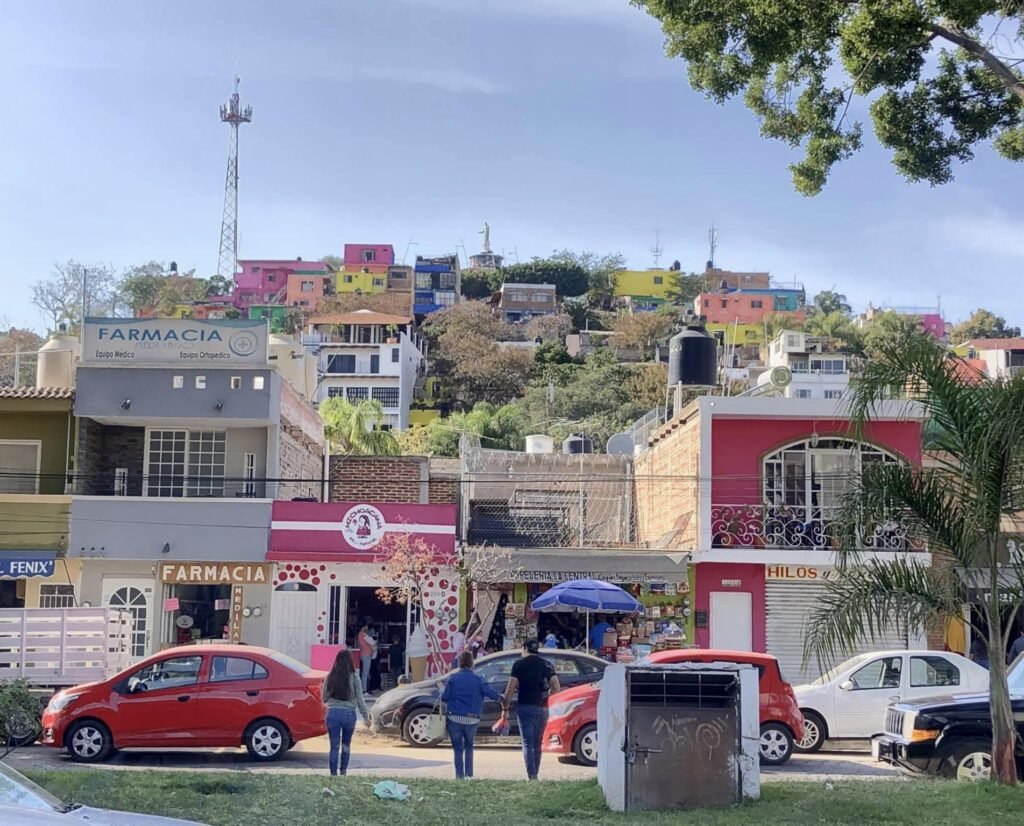
The vibrant homes climb far up the hill in Chapala. You can also walk up the hill to a cross that overlooks the town but we opted for dessert instead ?
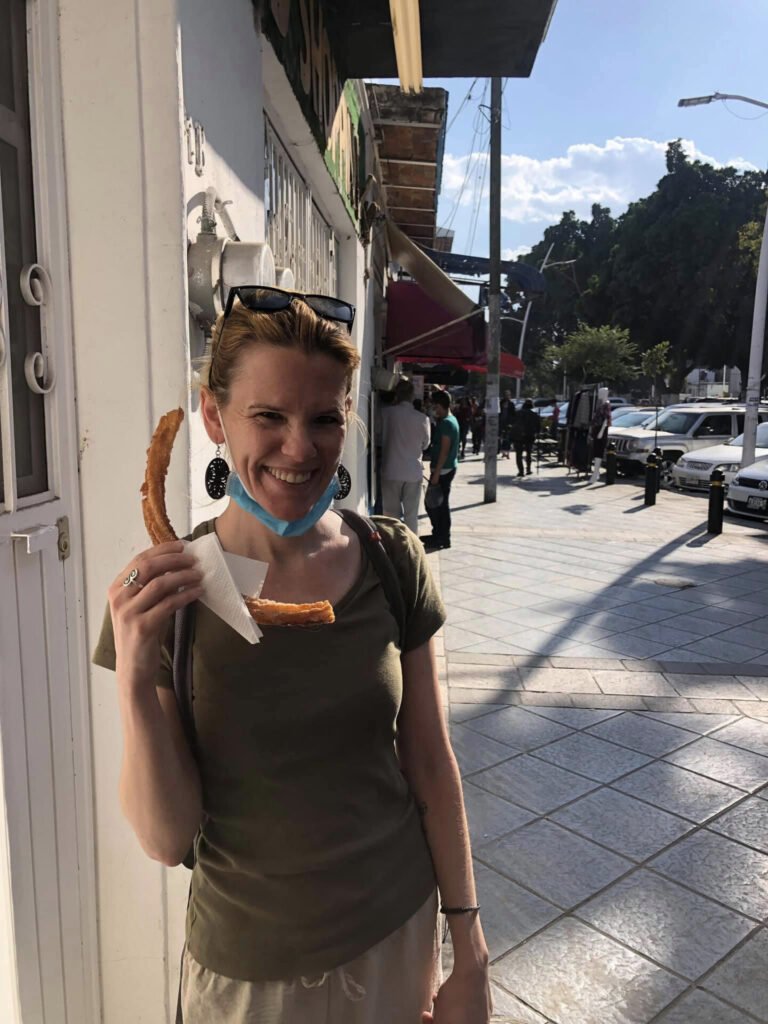
Mandy plays telephone (for our 30+ crowd) with her churro. (Um, because why wouldn’t you?) We once bought one of these in Portland for an obscene $4. Here they cost 8 pesos ($.40)
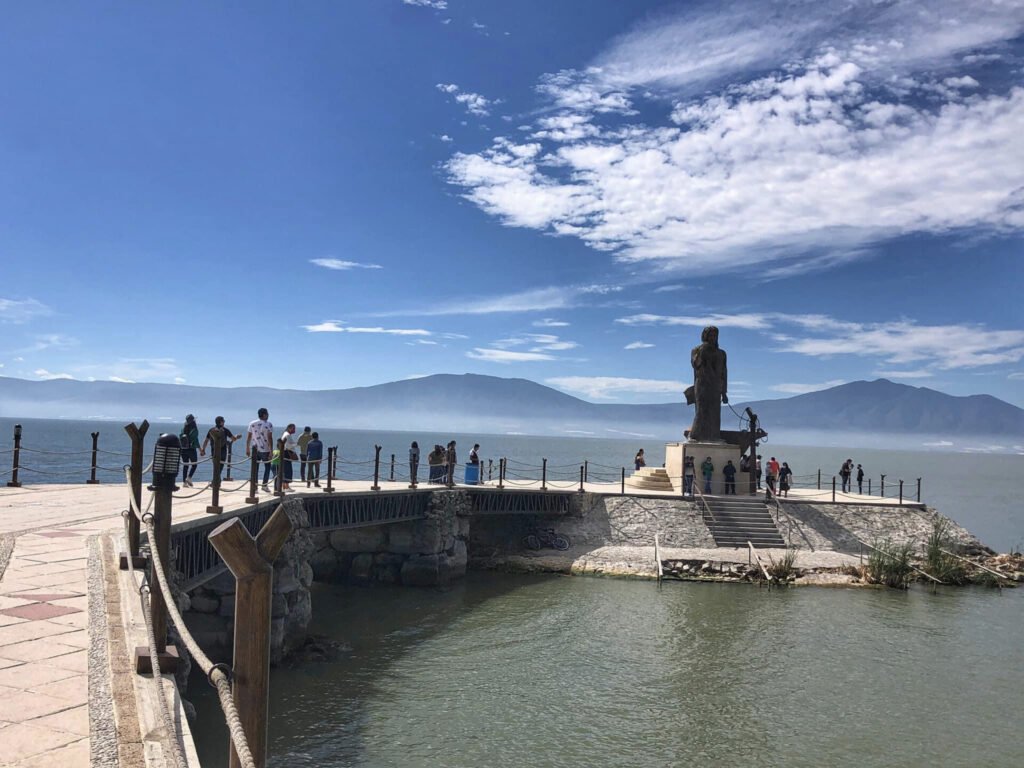
Isla de Jesús Pescador translates to Island of Jesus the Fisherman, a lovely pier out onto the water.
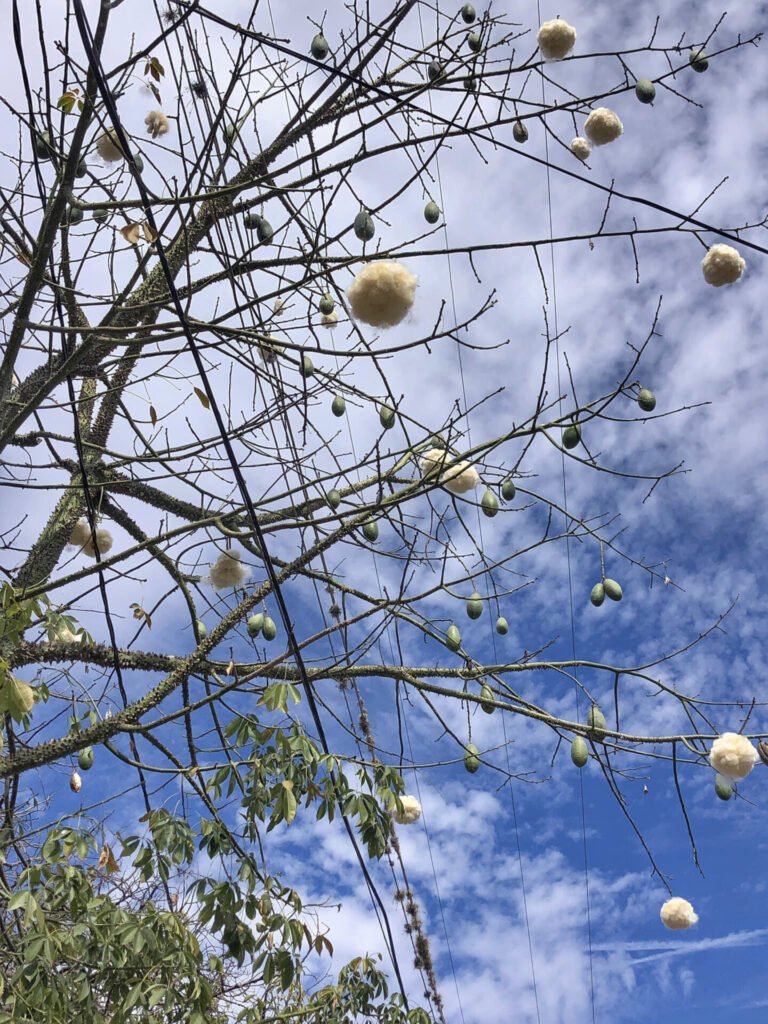
The color and variety of the trees and their blooms were simply captivating this time of year. But, nothing was more peculiar to us than this one bedecked with cotton balls, as well as fruits which resembled avocados (but weren’t.) Does anyone know what this tree is?!
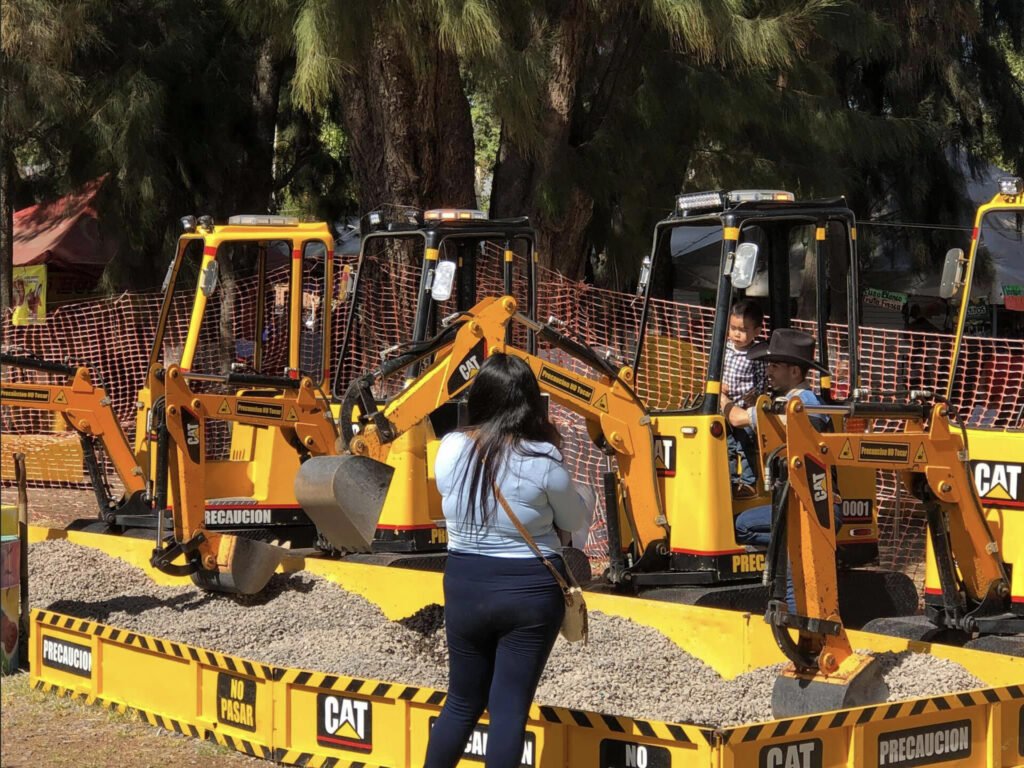
Greg thought this bulldozer park for kids looked like a ton of fun, but they wouldn’t let him play.

Taking a break in Chapala’s “H.”

Do you think this streetcar is named “desire”?
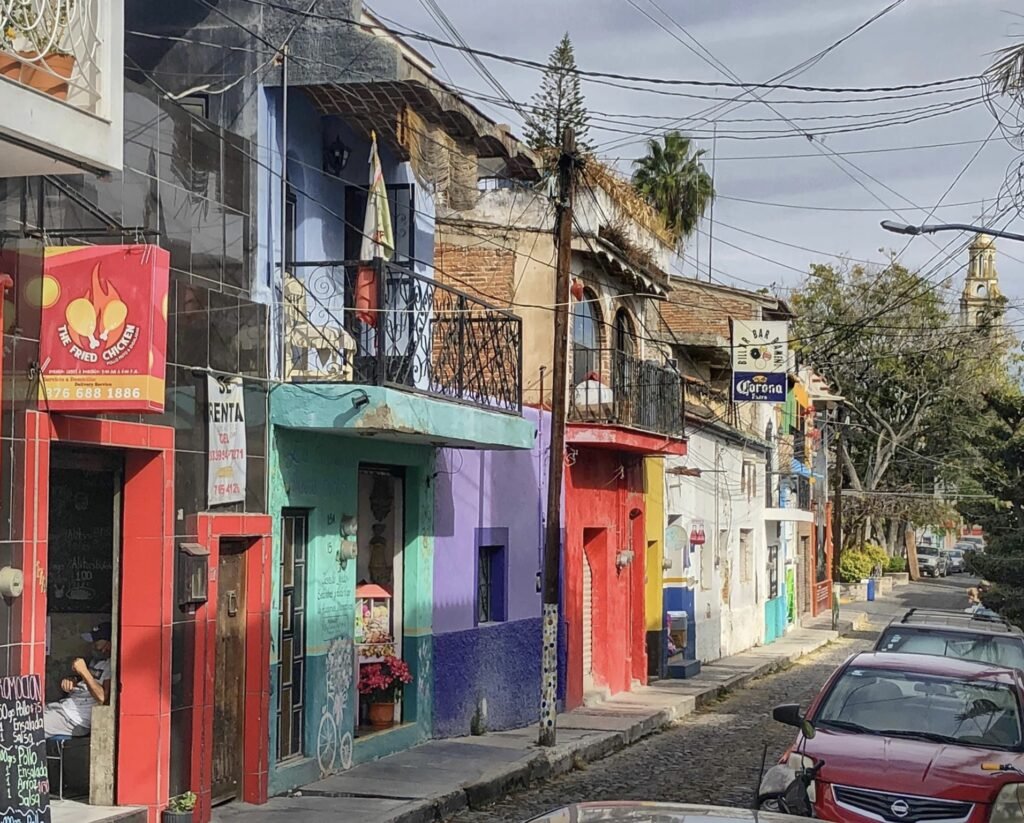
Our final days in Lake Chapala. We couldn’t have asked for a more tranquil, charming or safe atmosphere for our first stop in Mexico. No question…we’ll be back….
Final Budget (2 weeks)
We were excited to test out our new $40/day budget in Mexico and see how we could do. End result? Happy to report, we got very close in Chapala.
Accommodation: $388
Transportation: $27.78 (includes local bus and RT to Guadalajara)
Eating Out: $57.69 (On average once a day + ice cream)
Groceries: $130.86
Grand Total: $604.33 or $43.67/day

